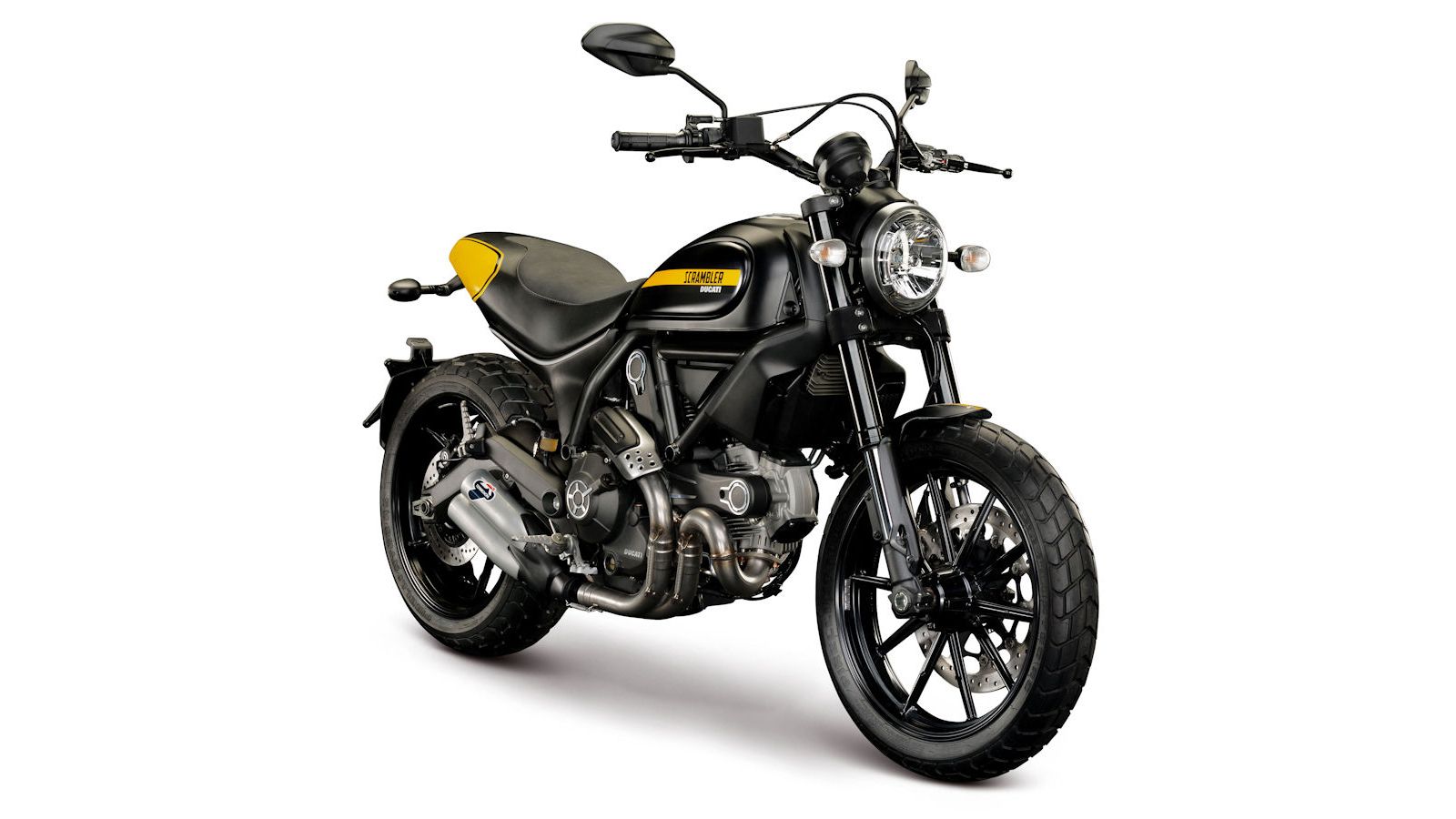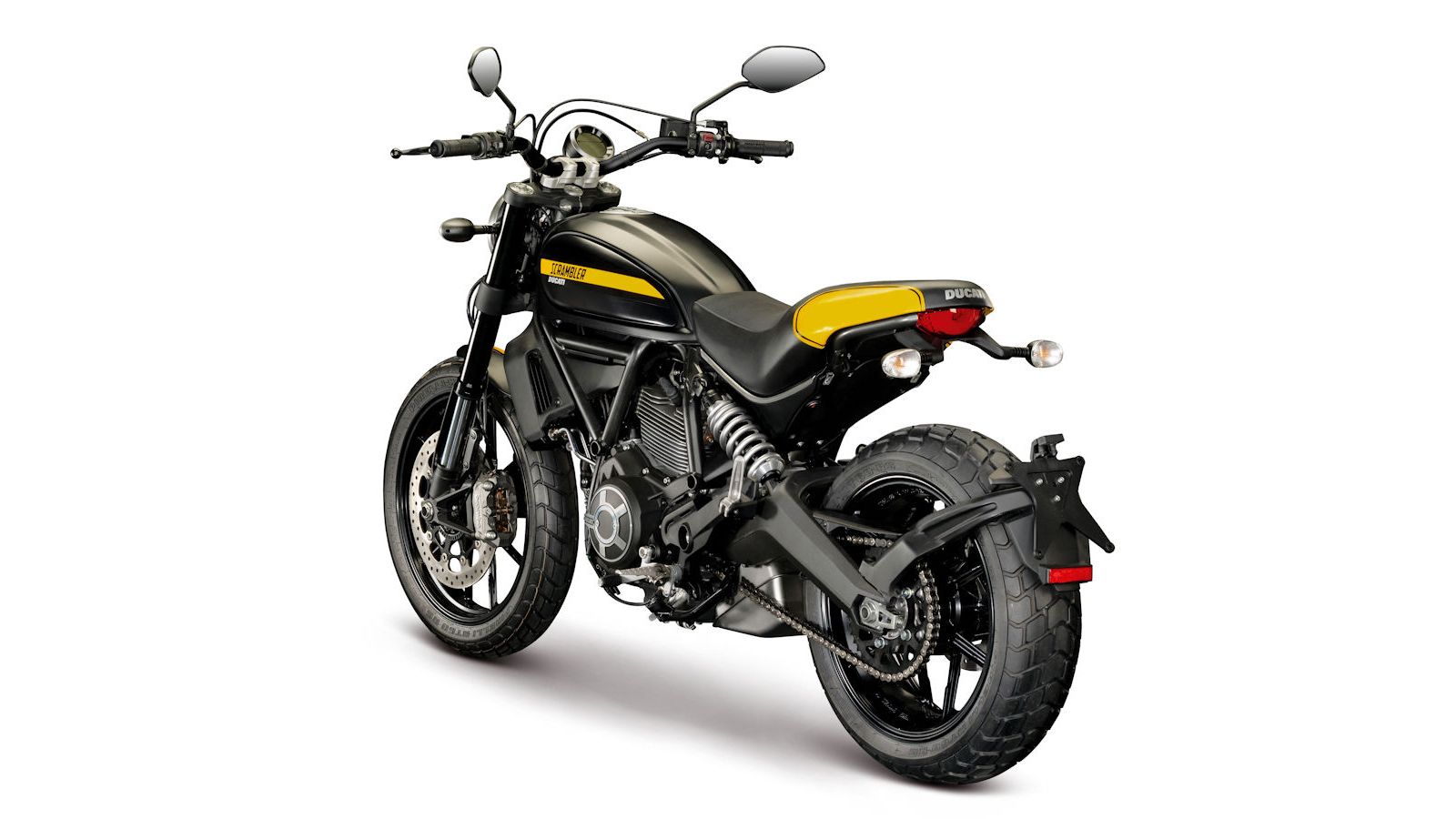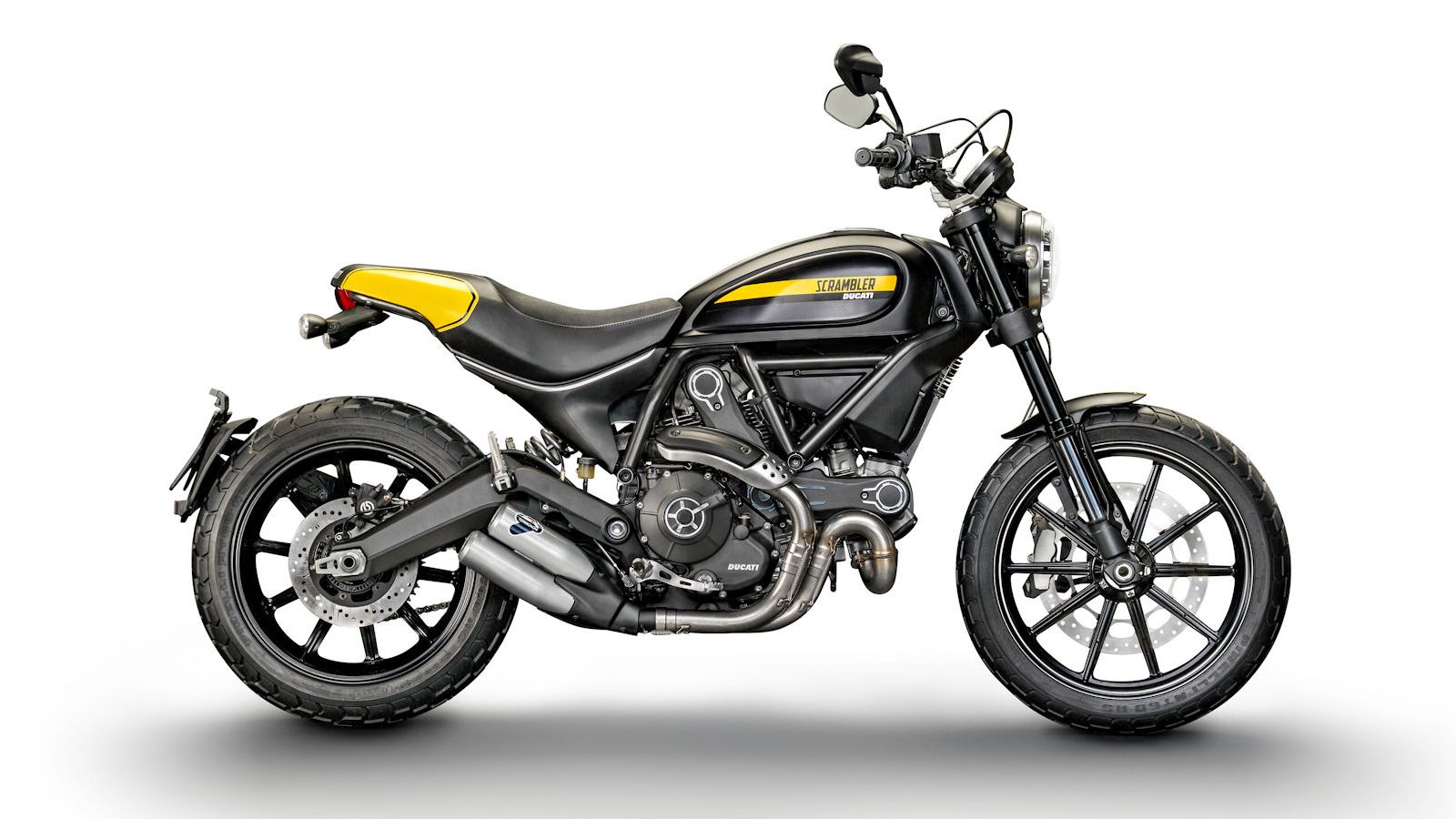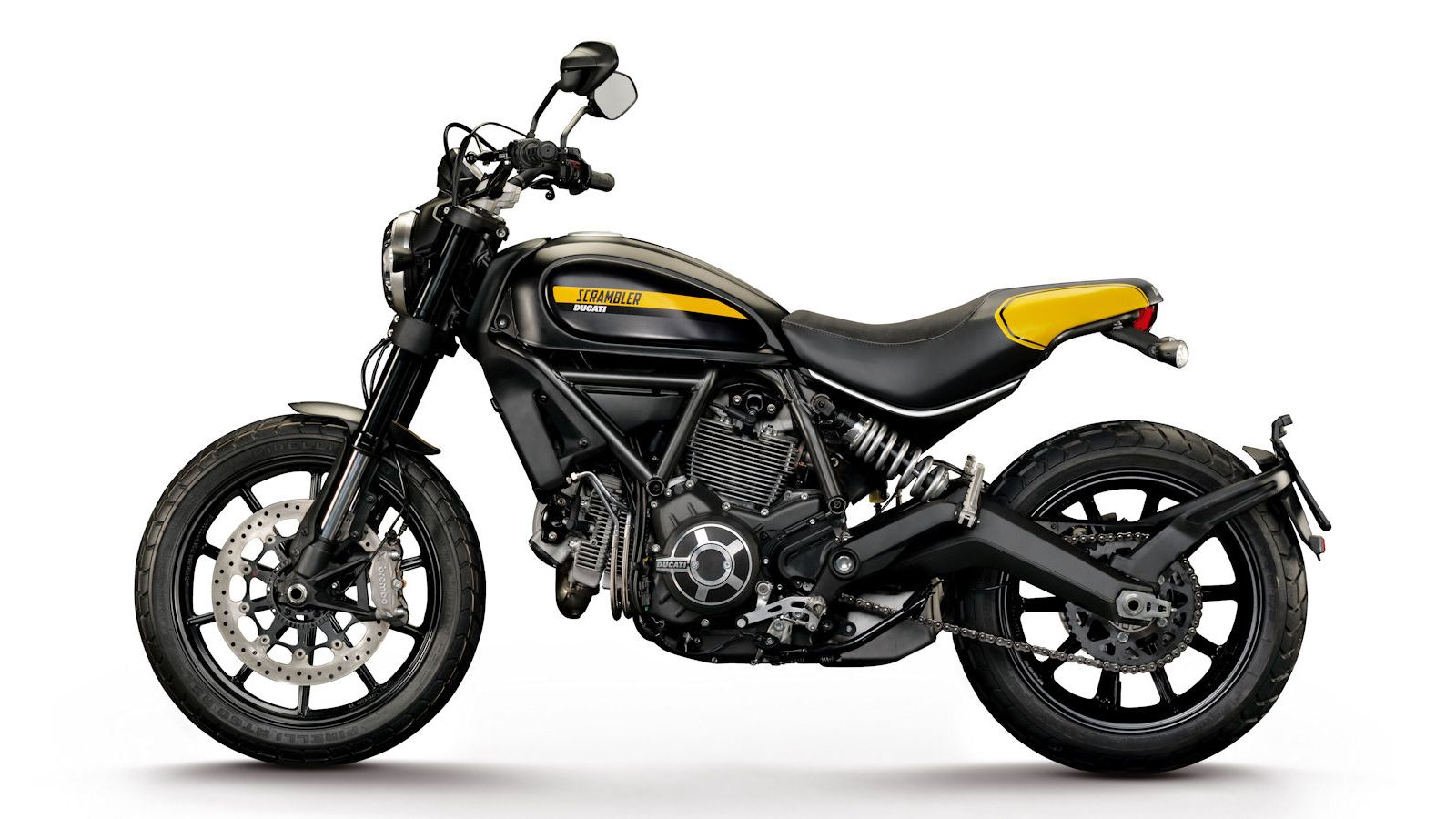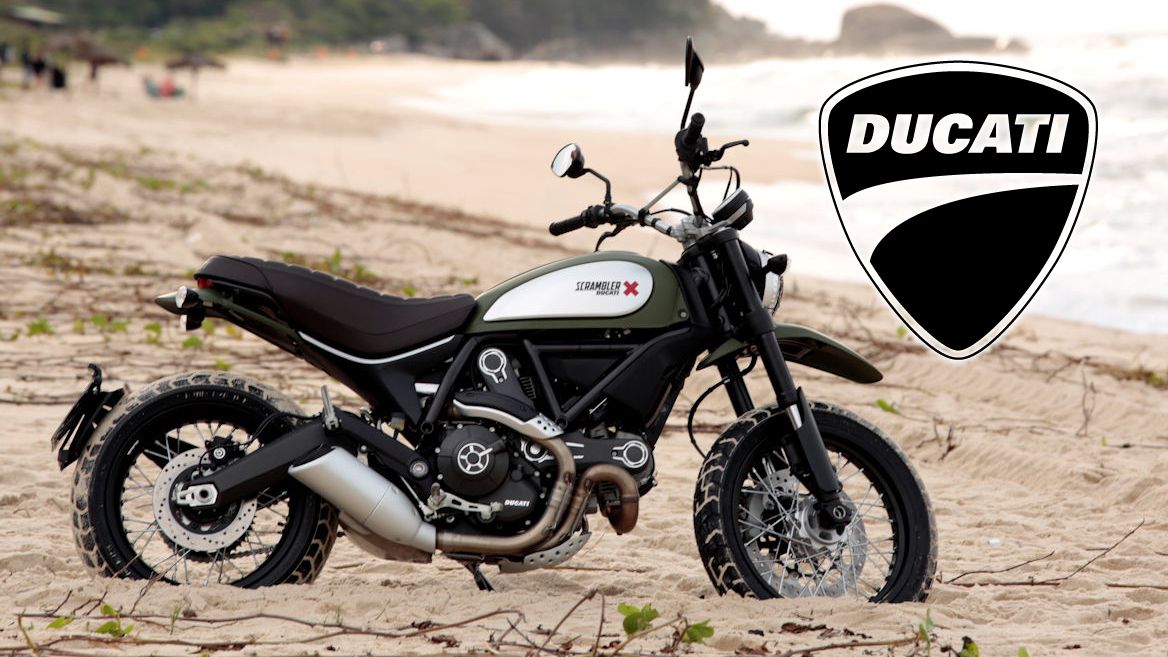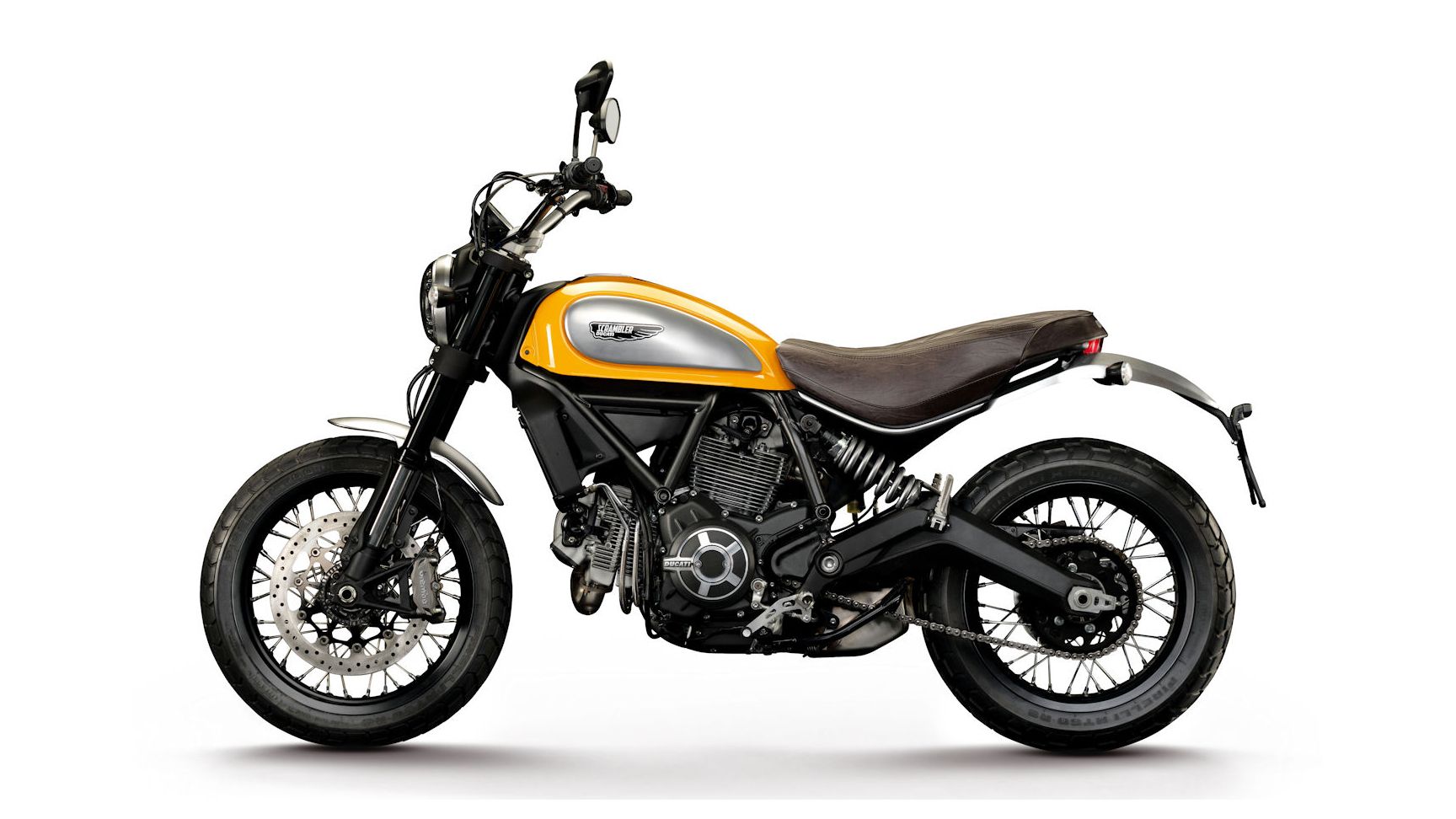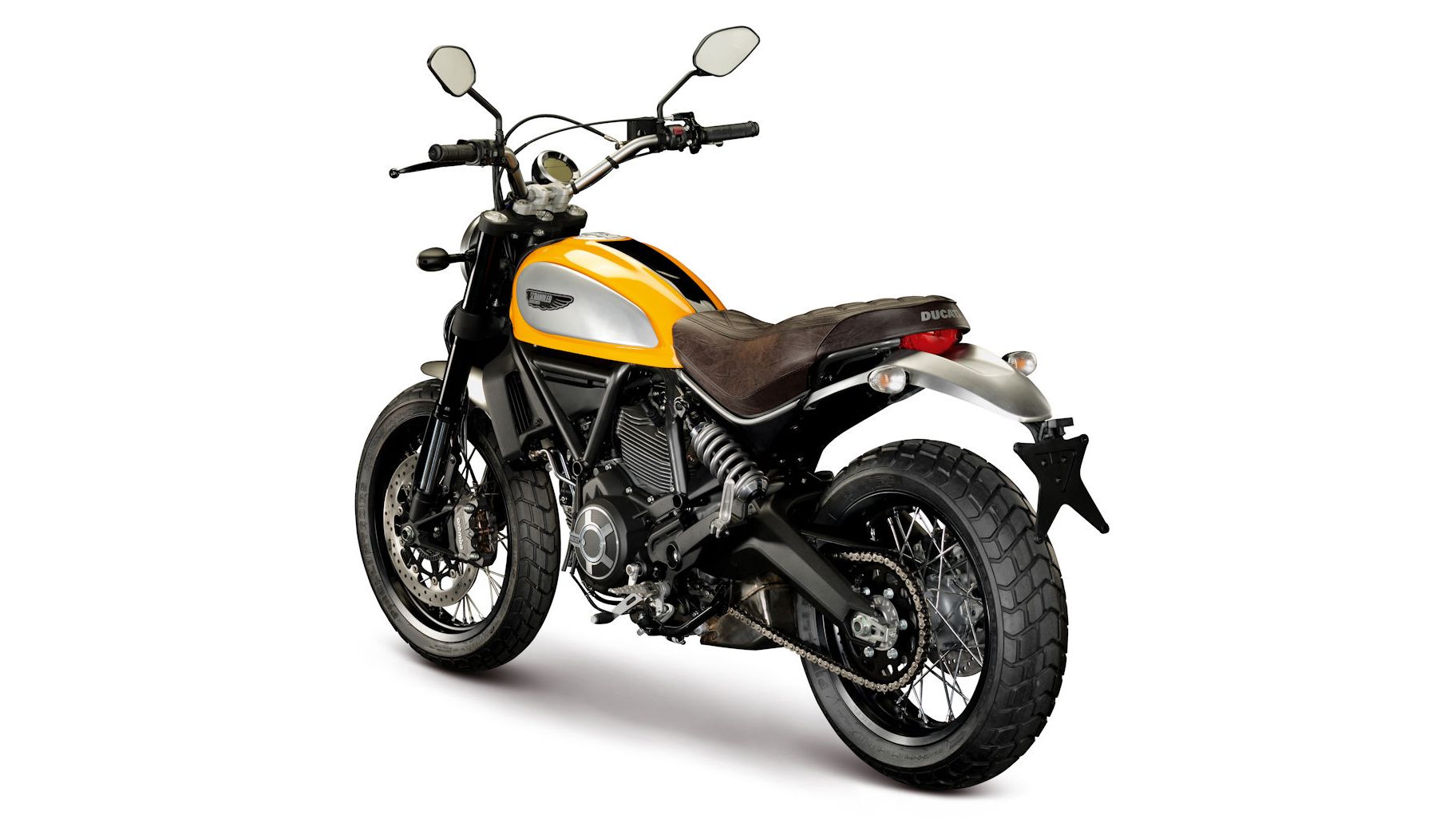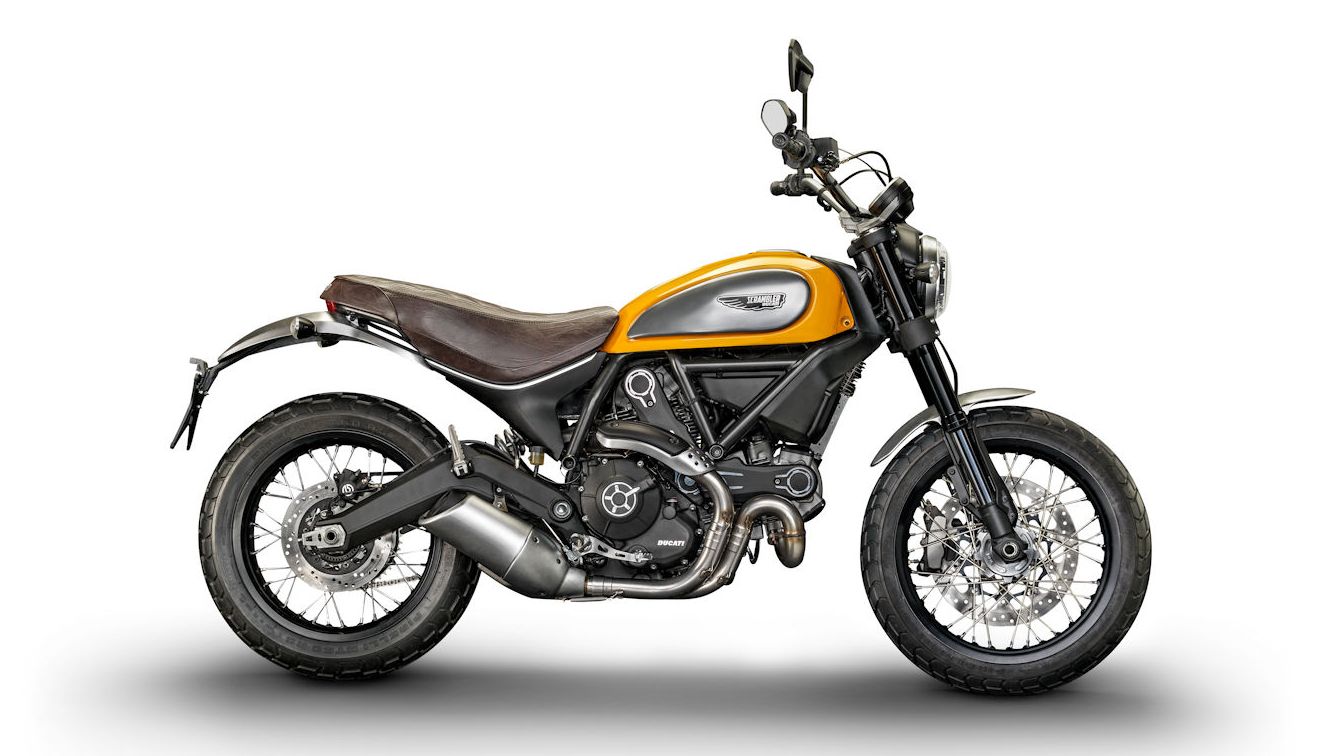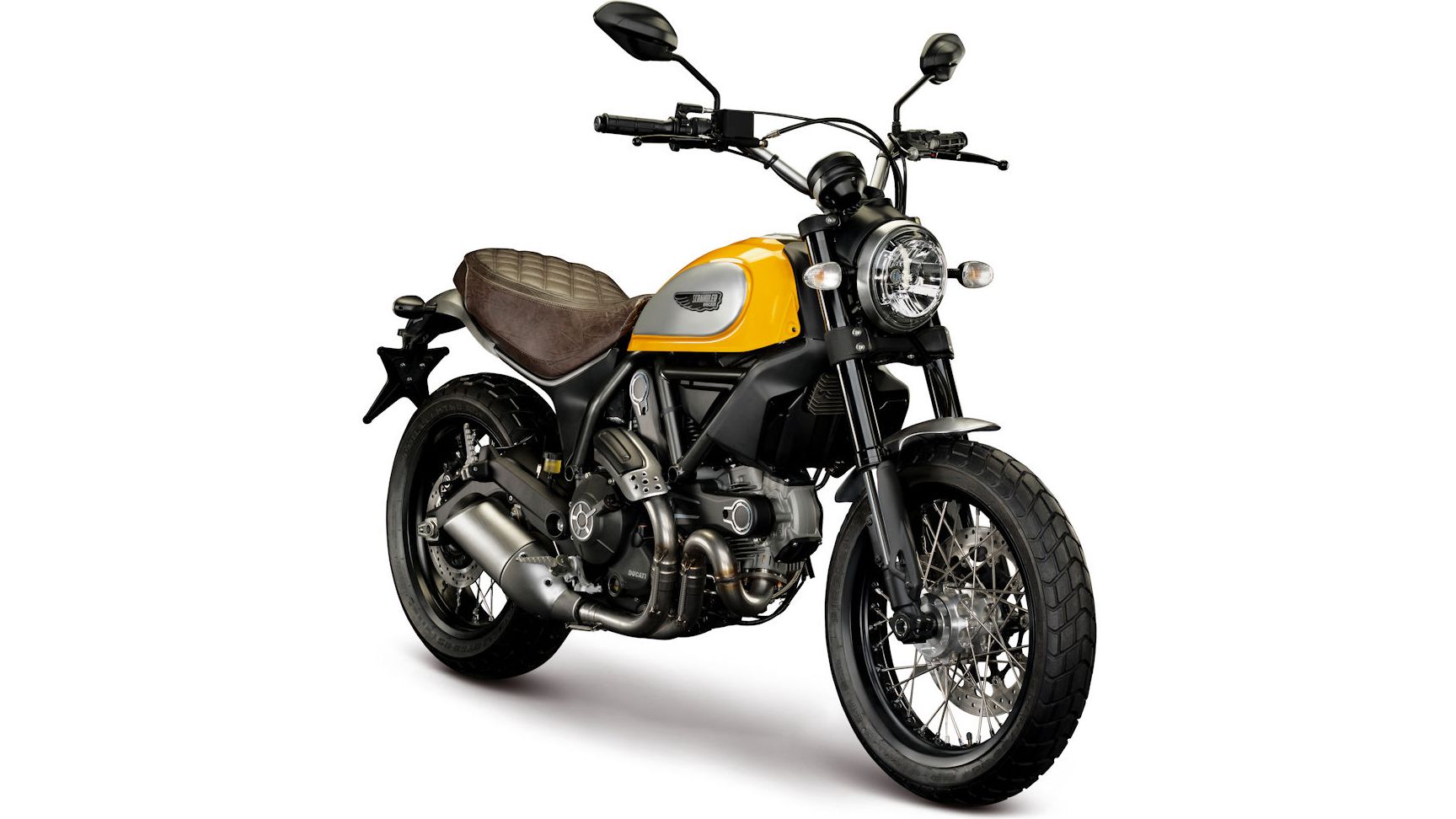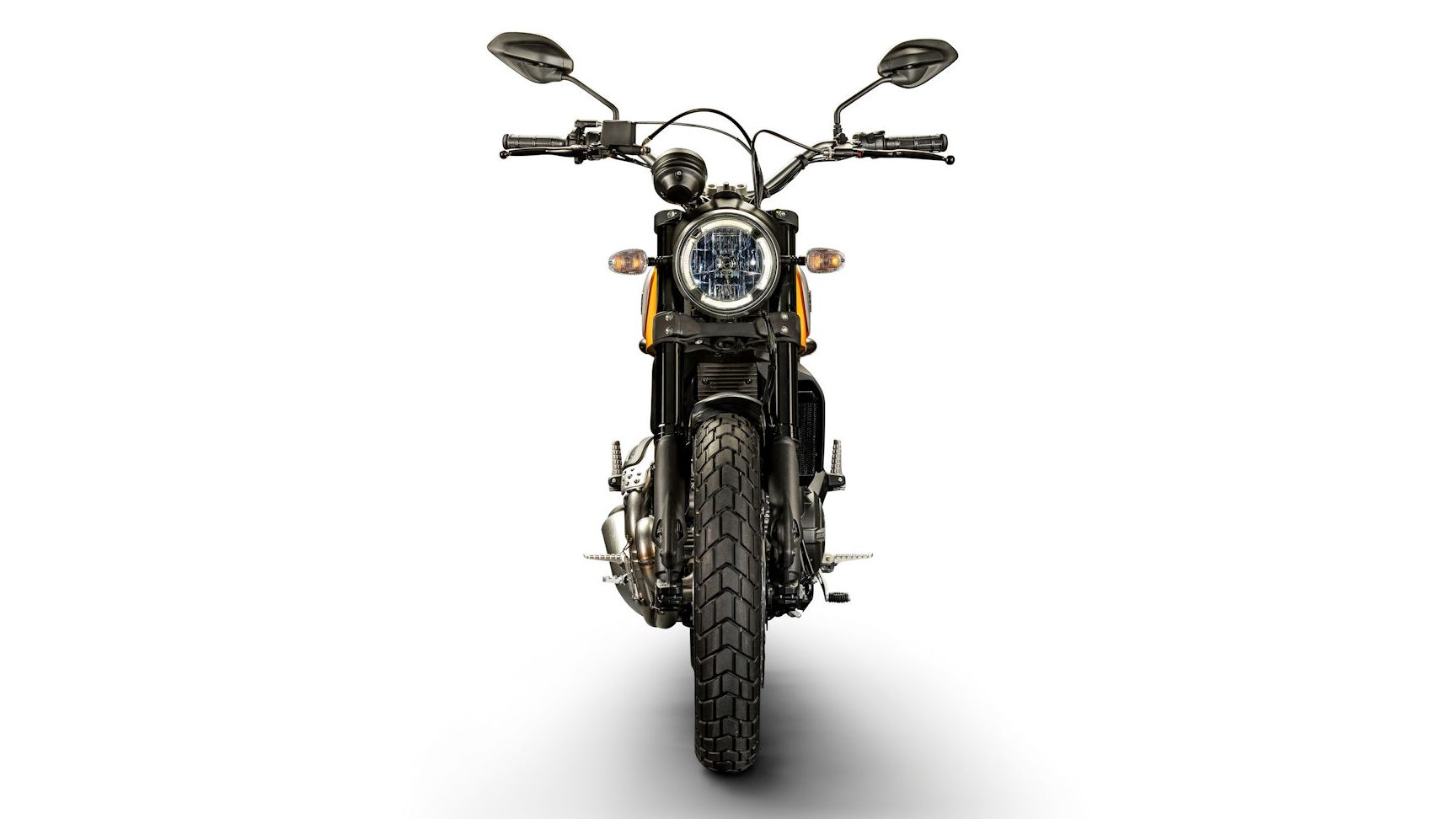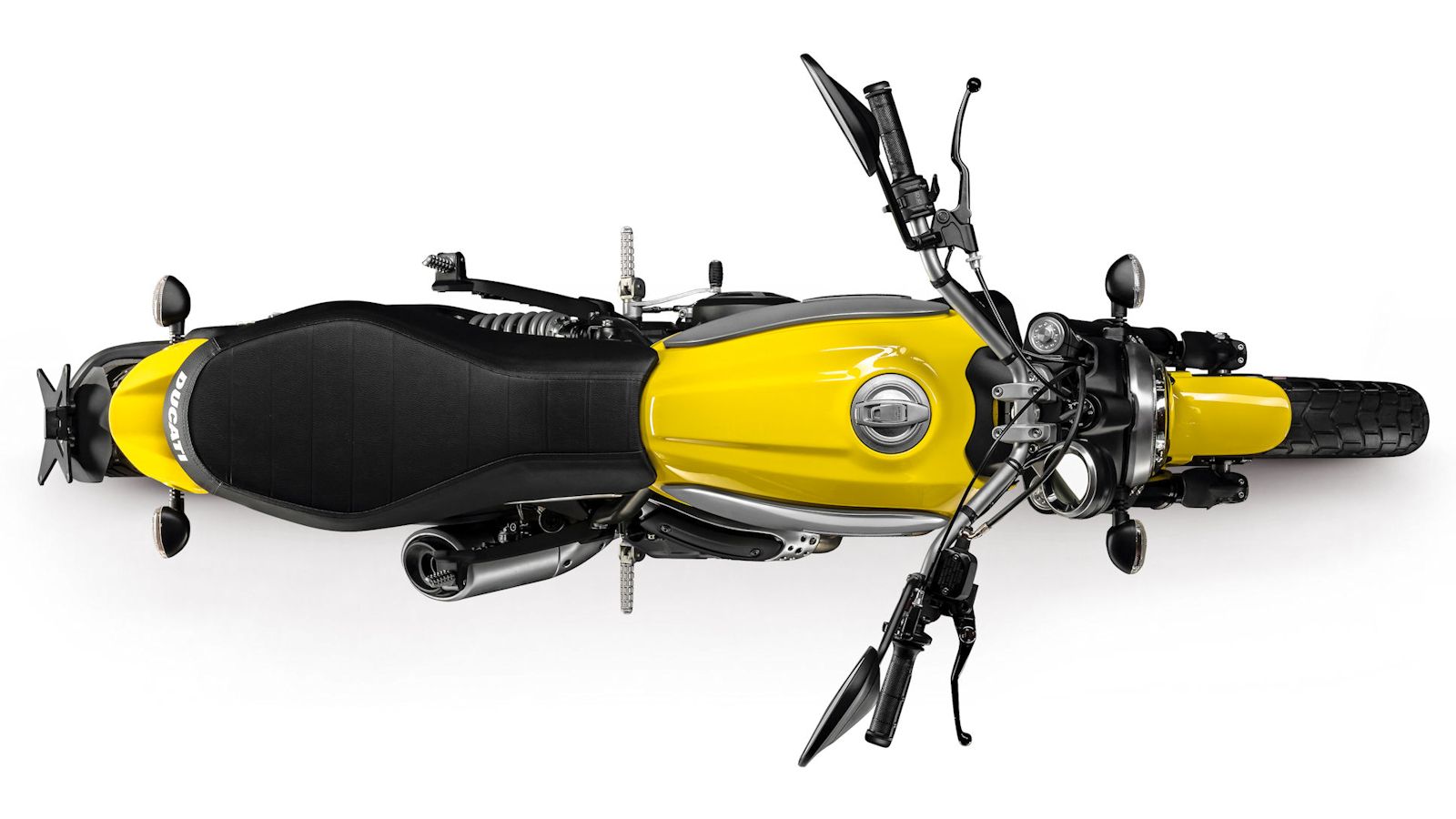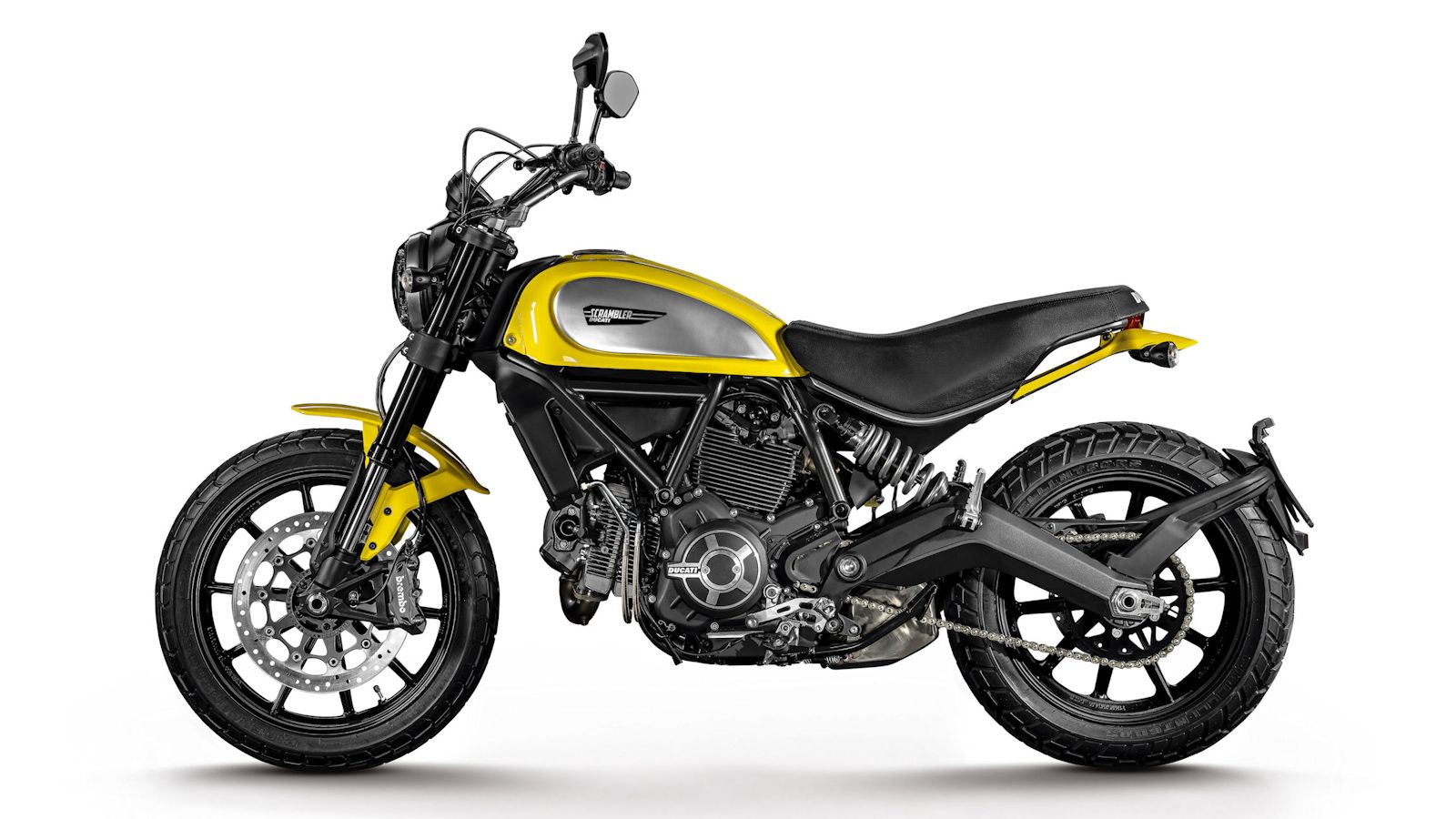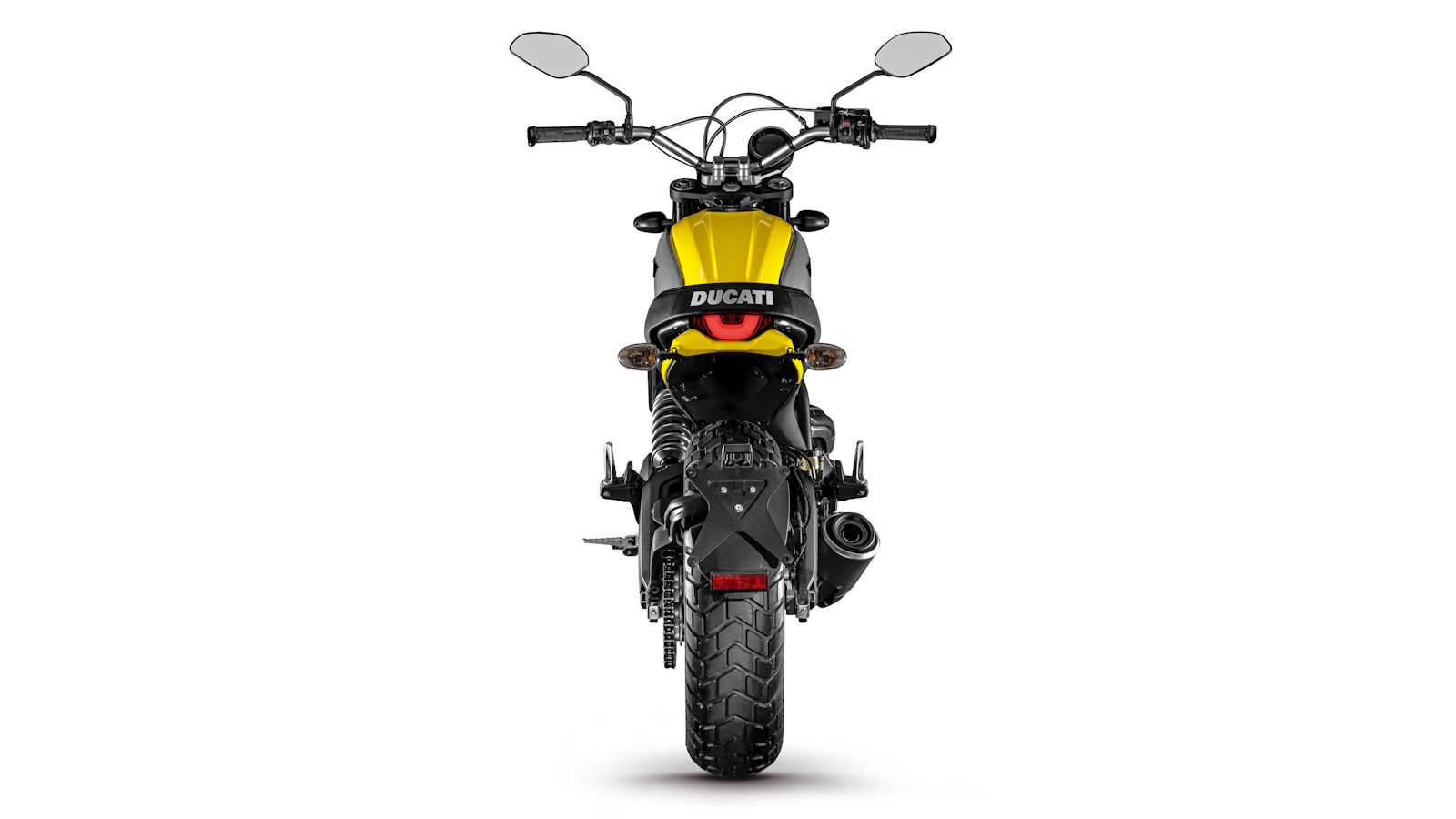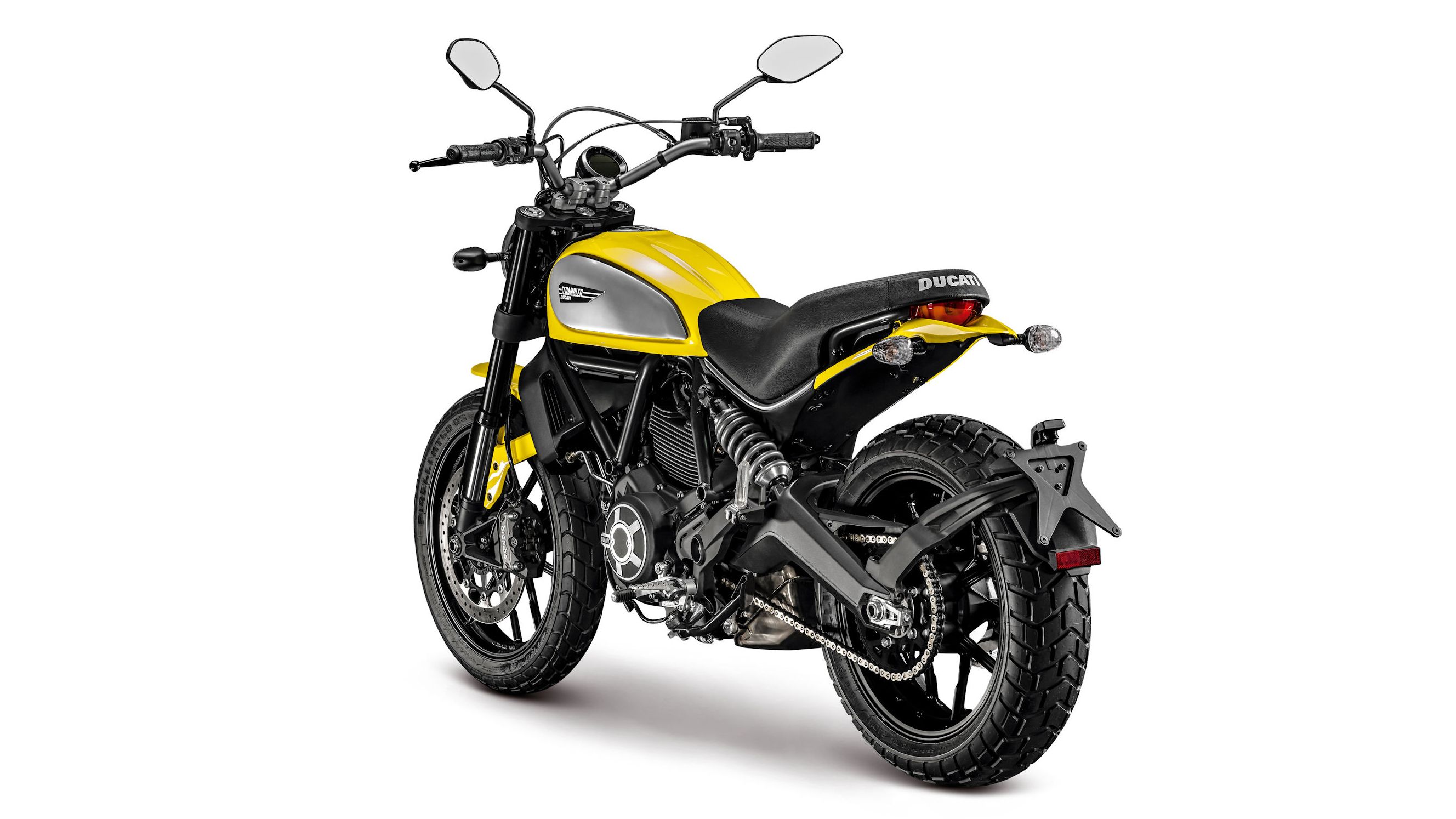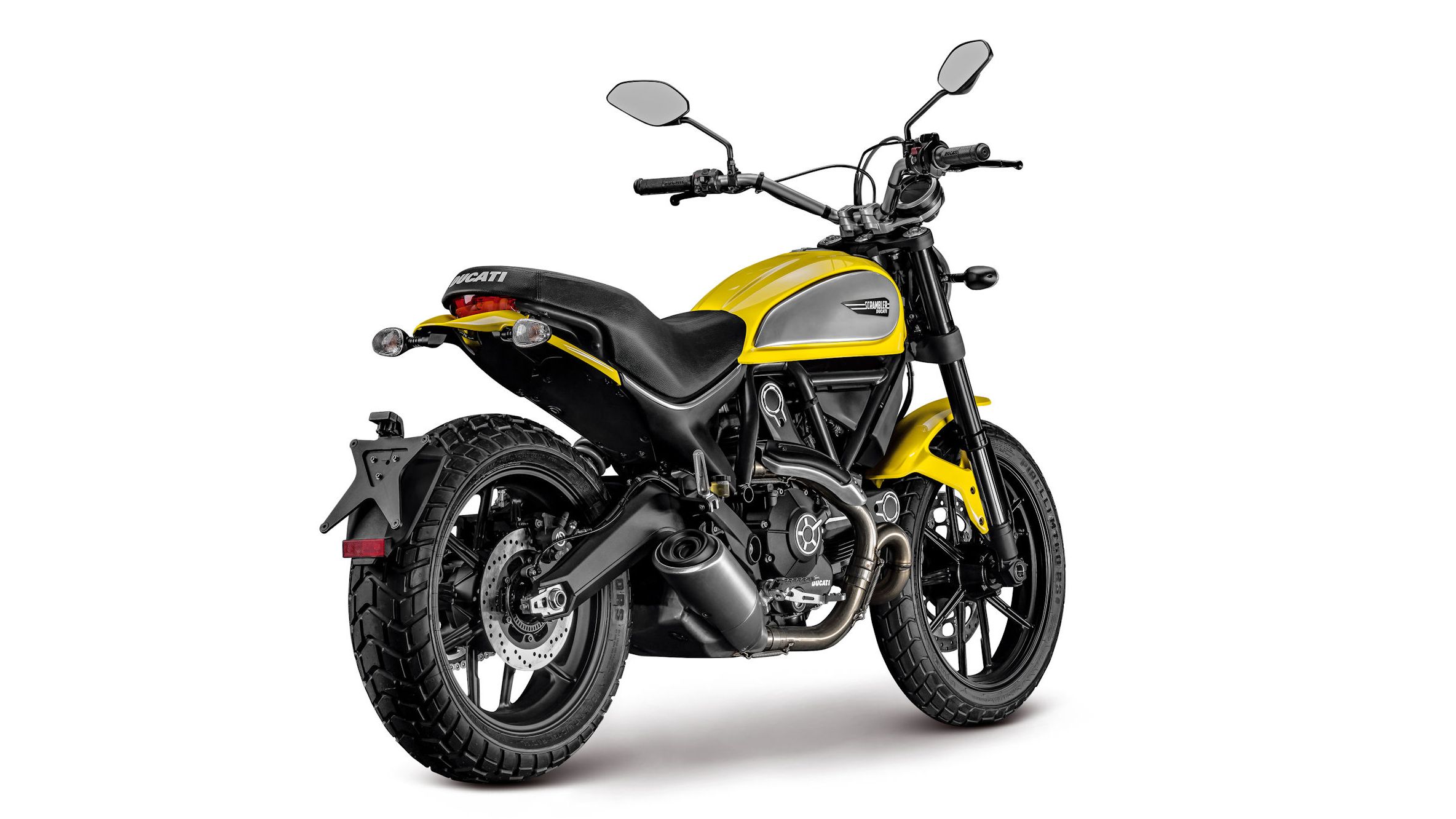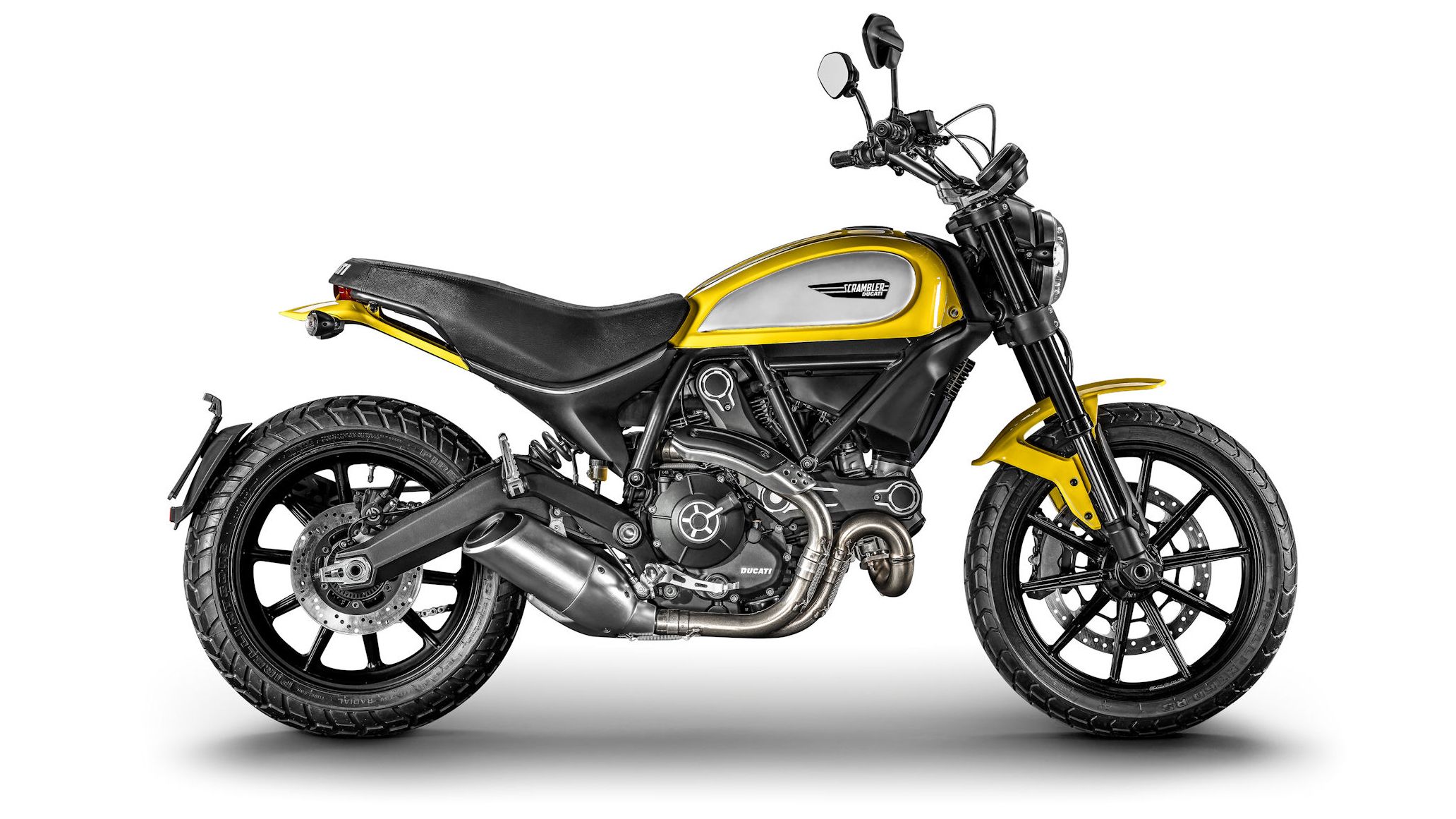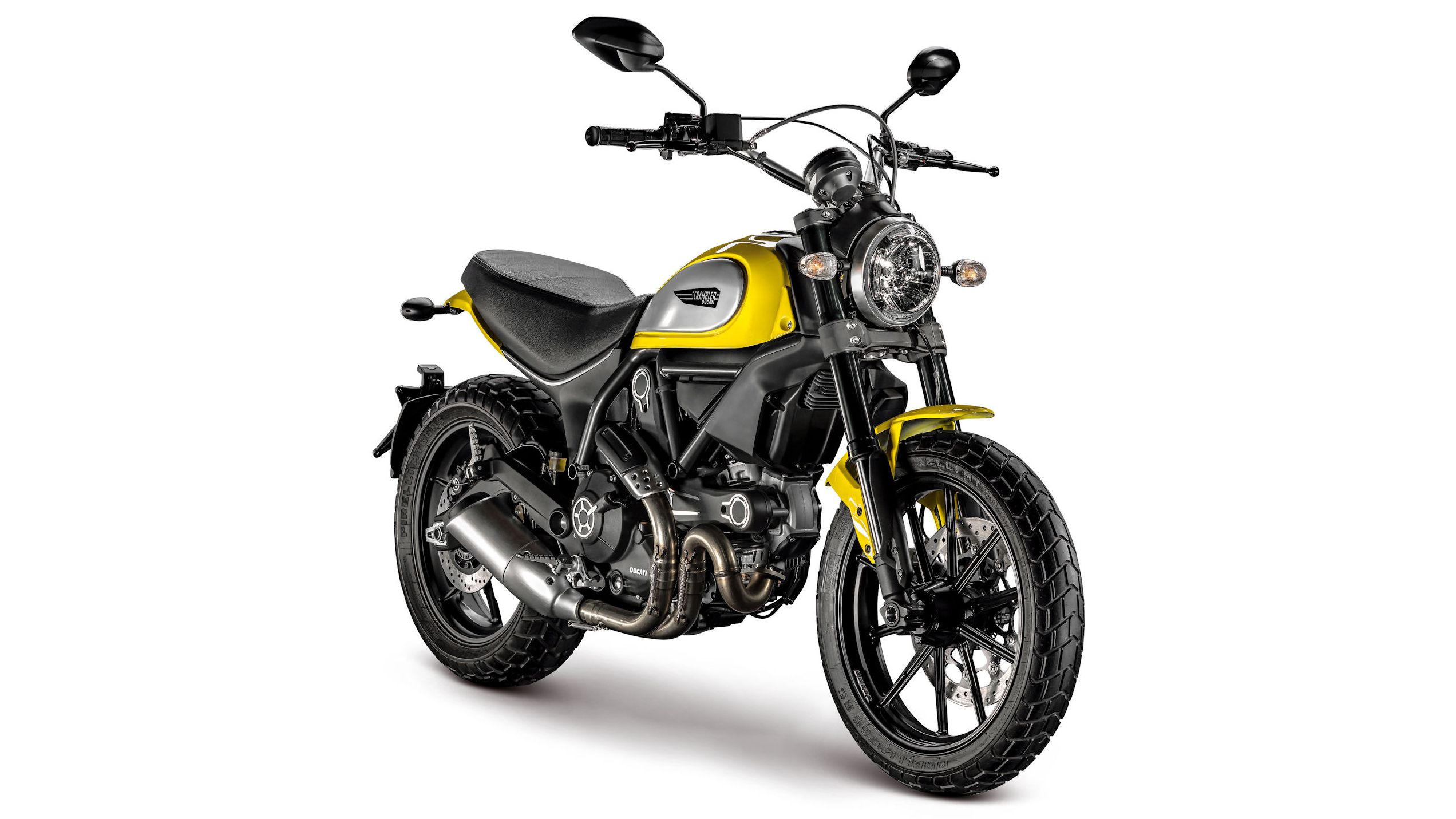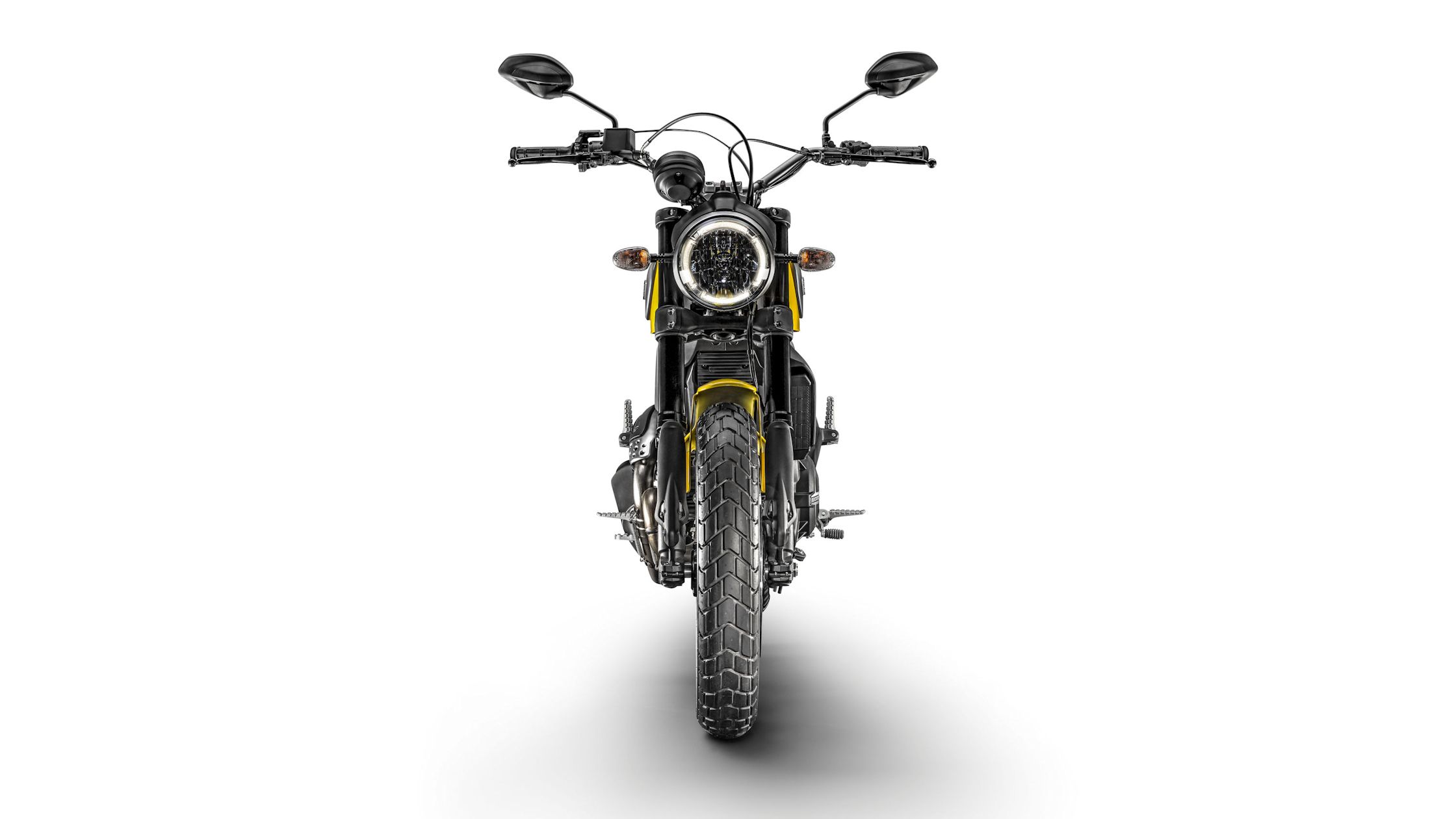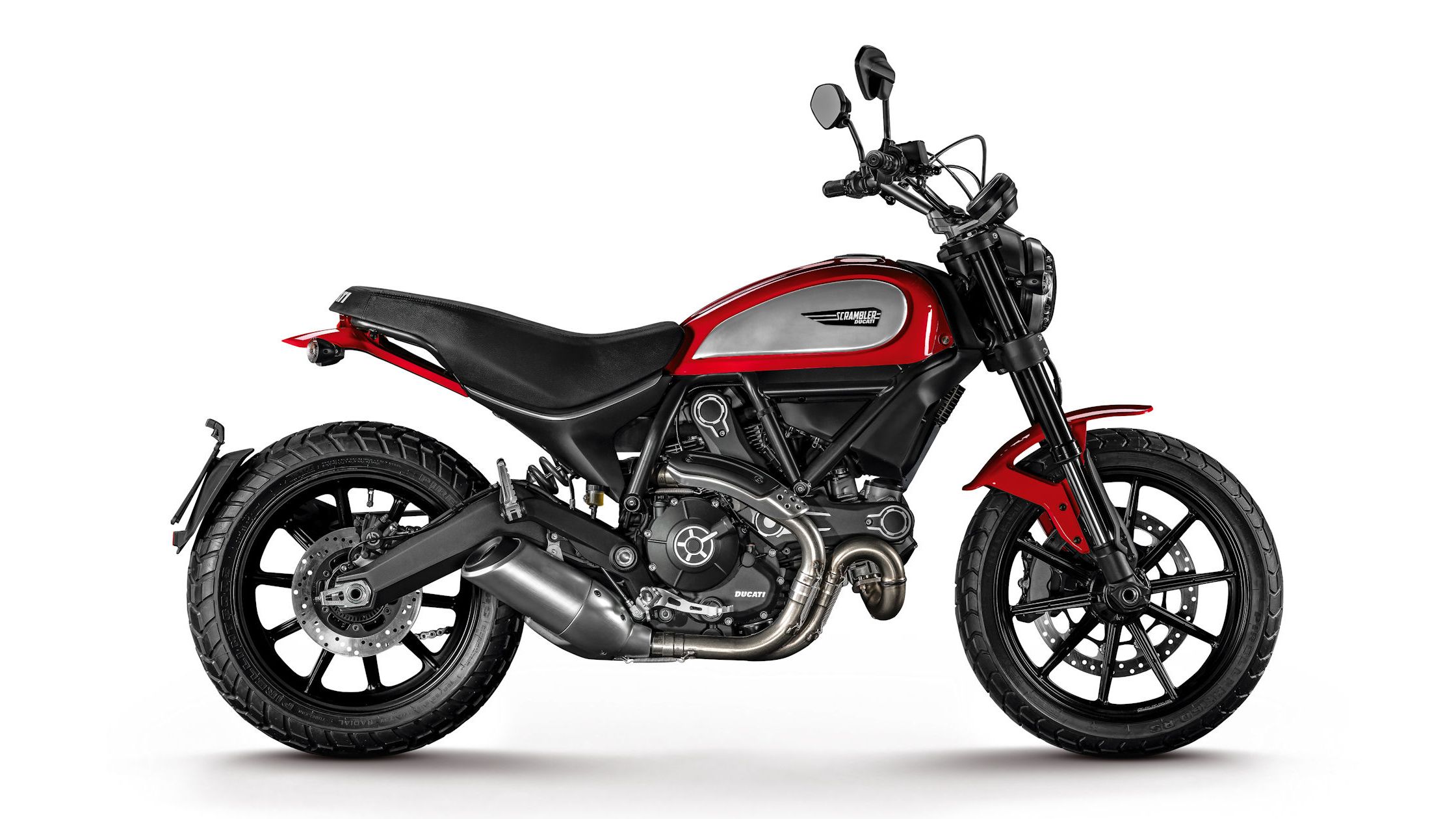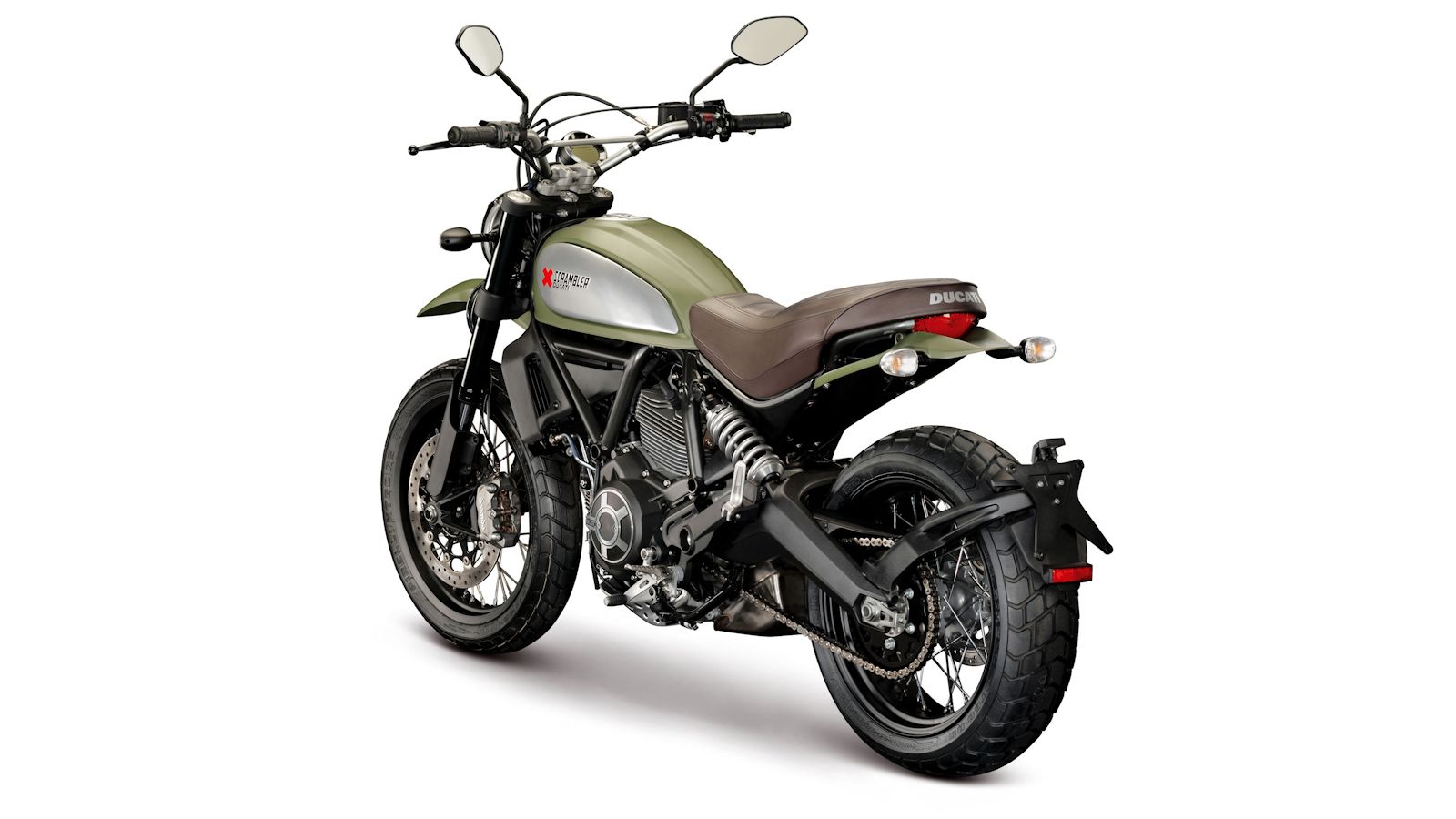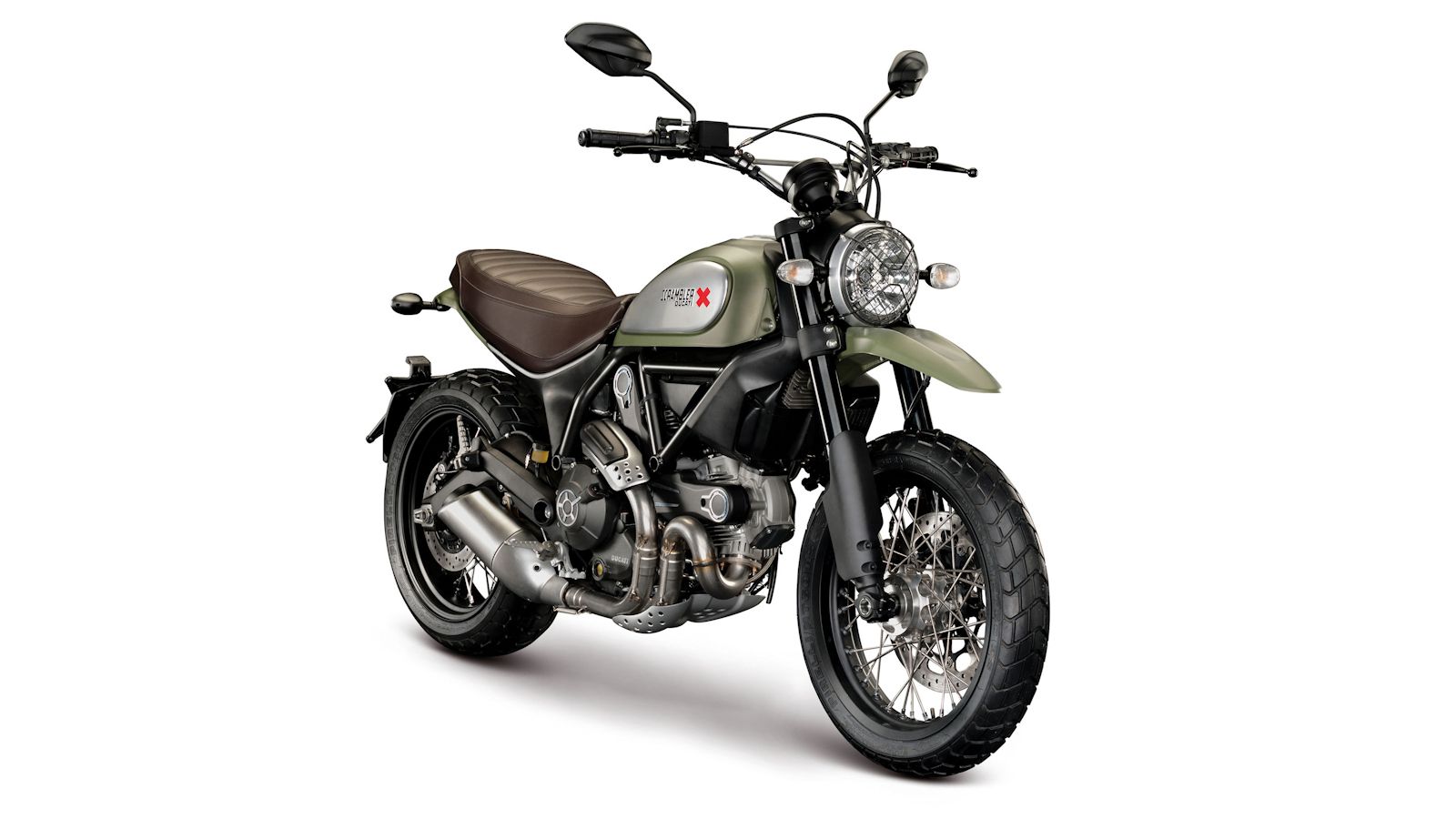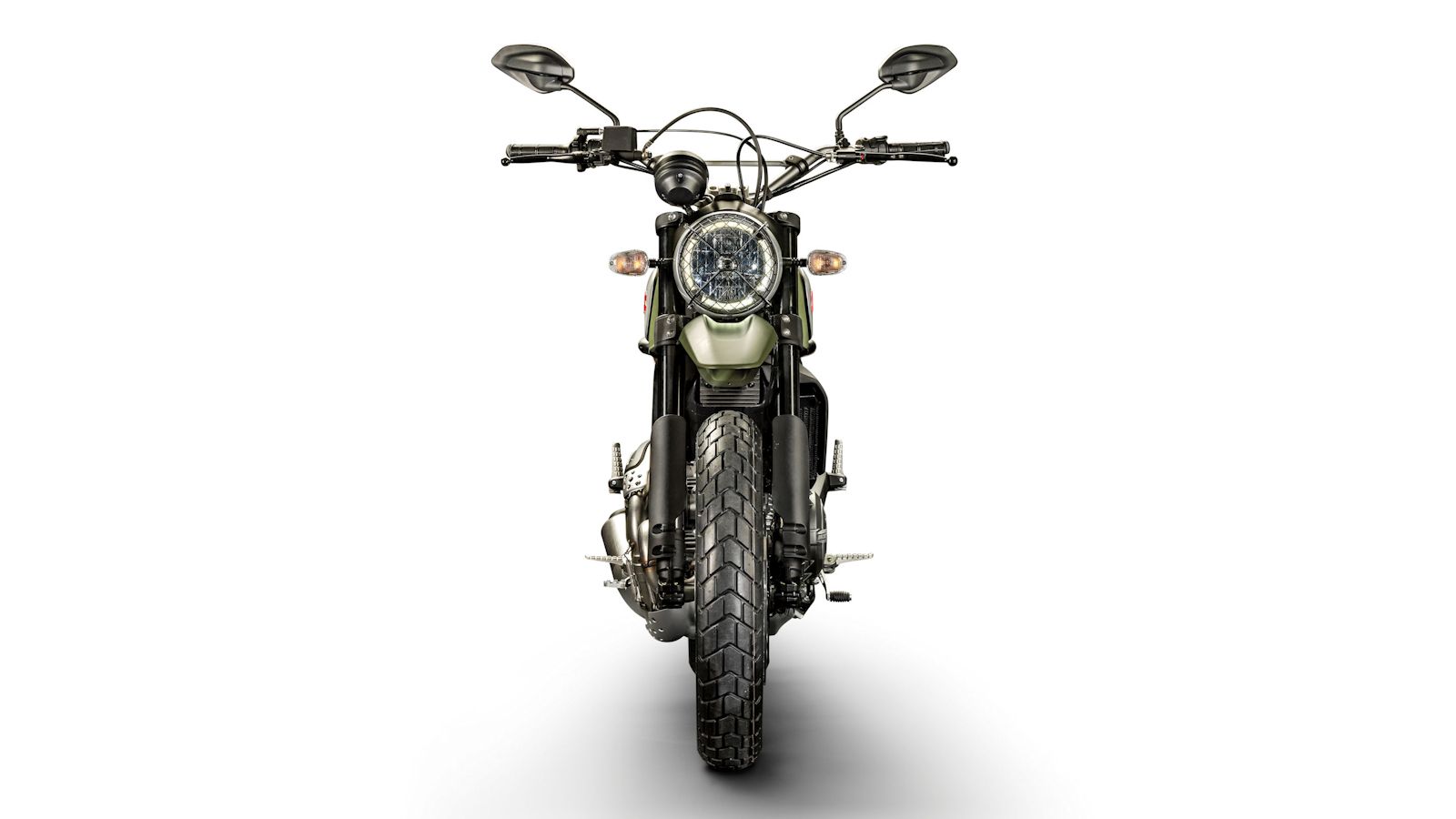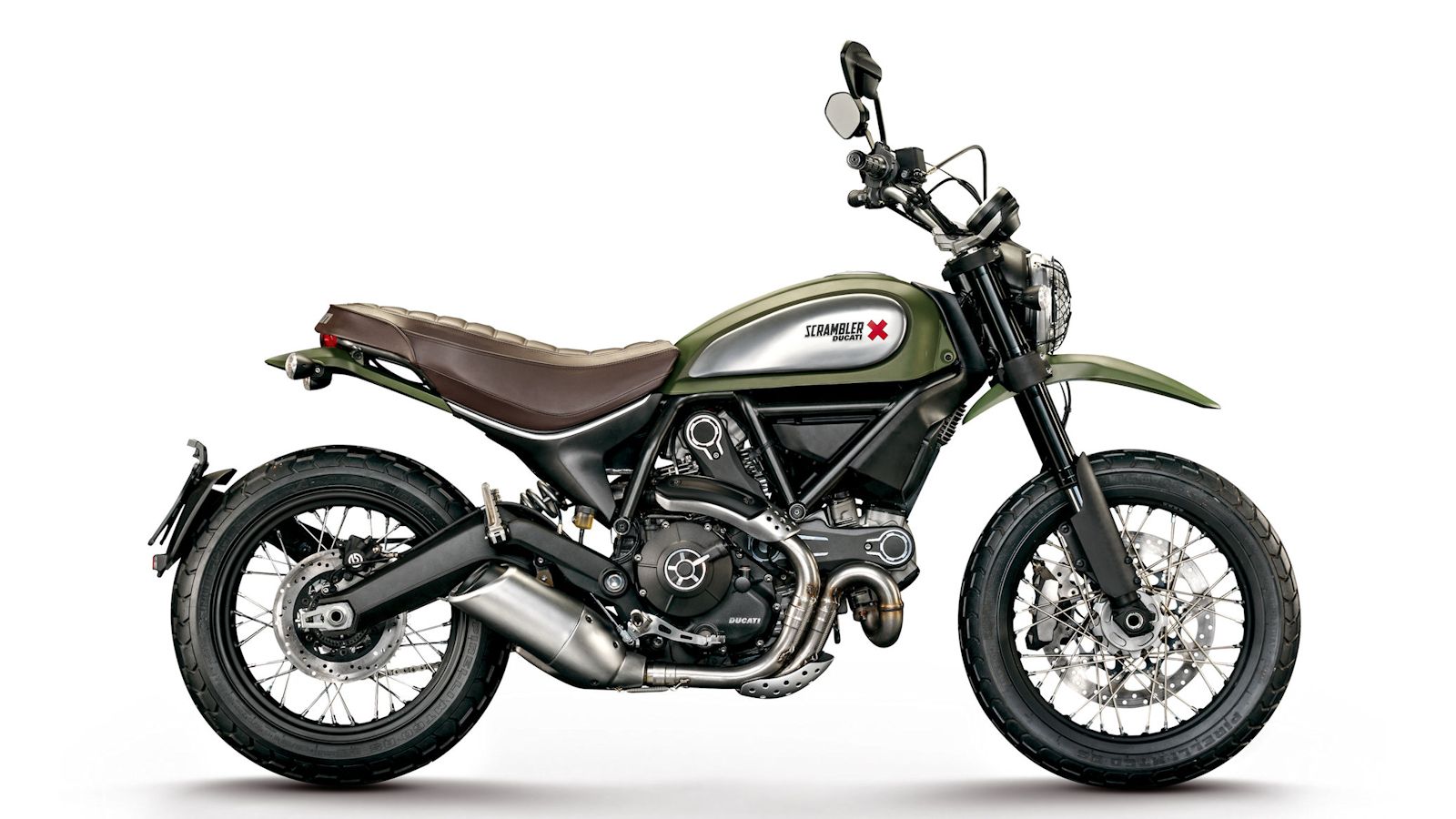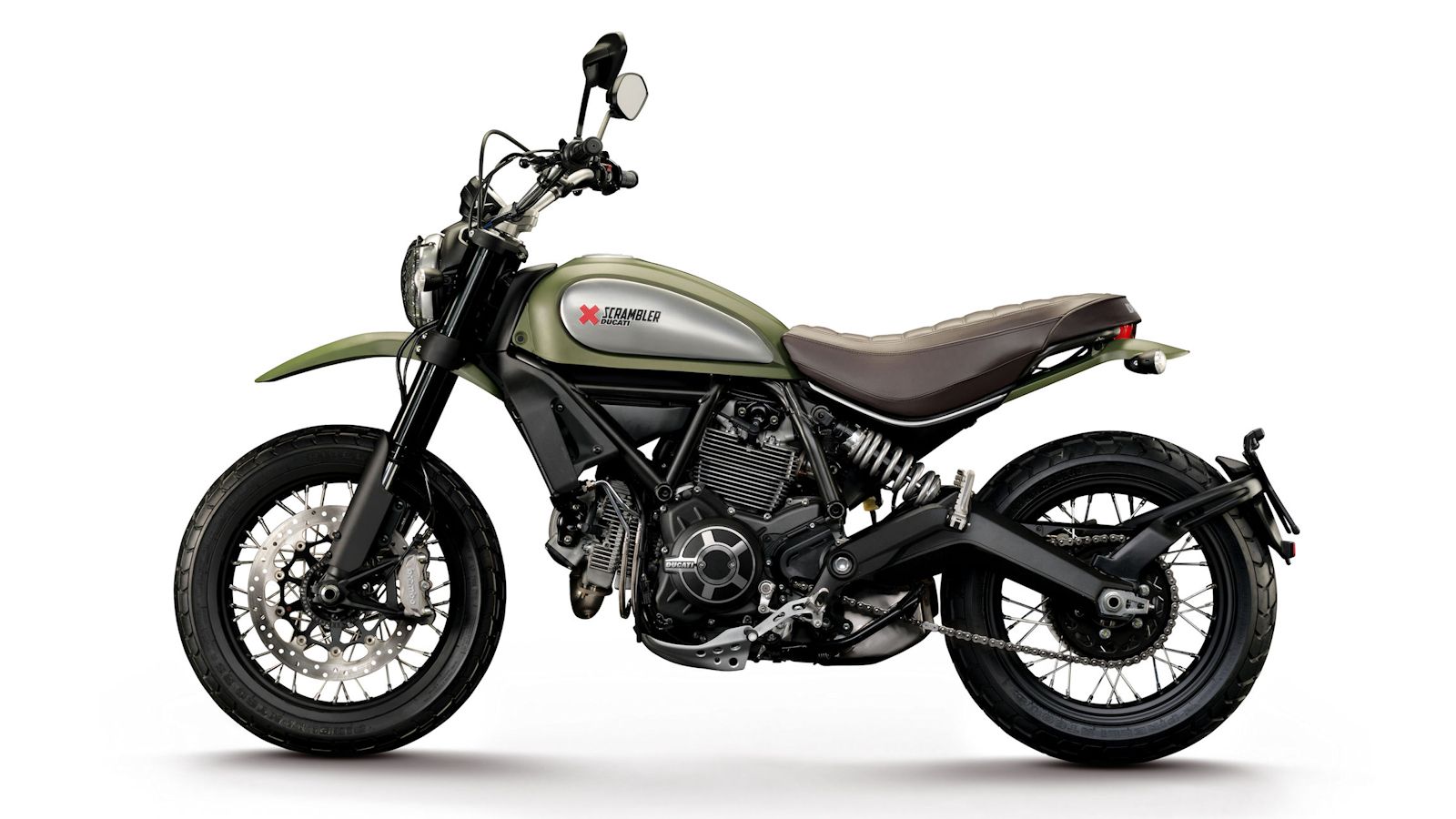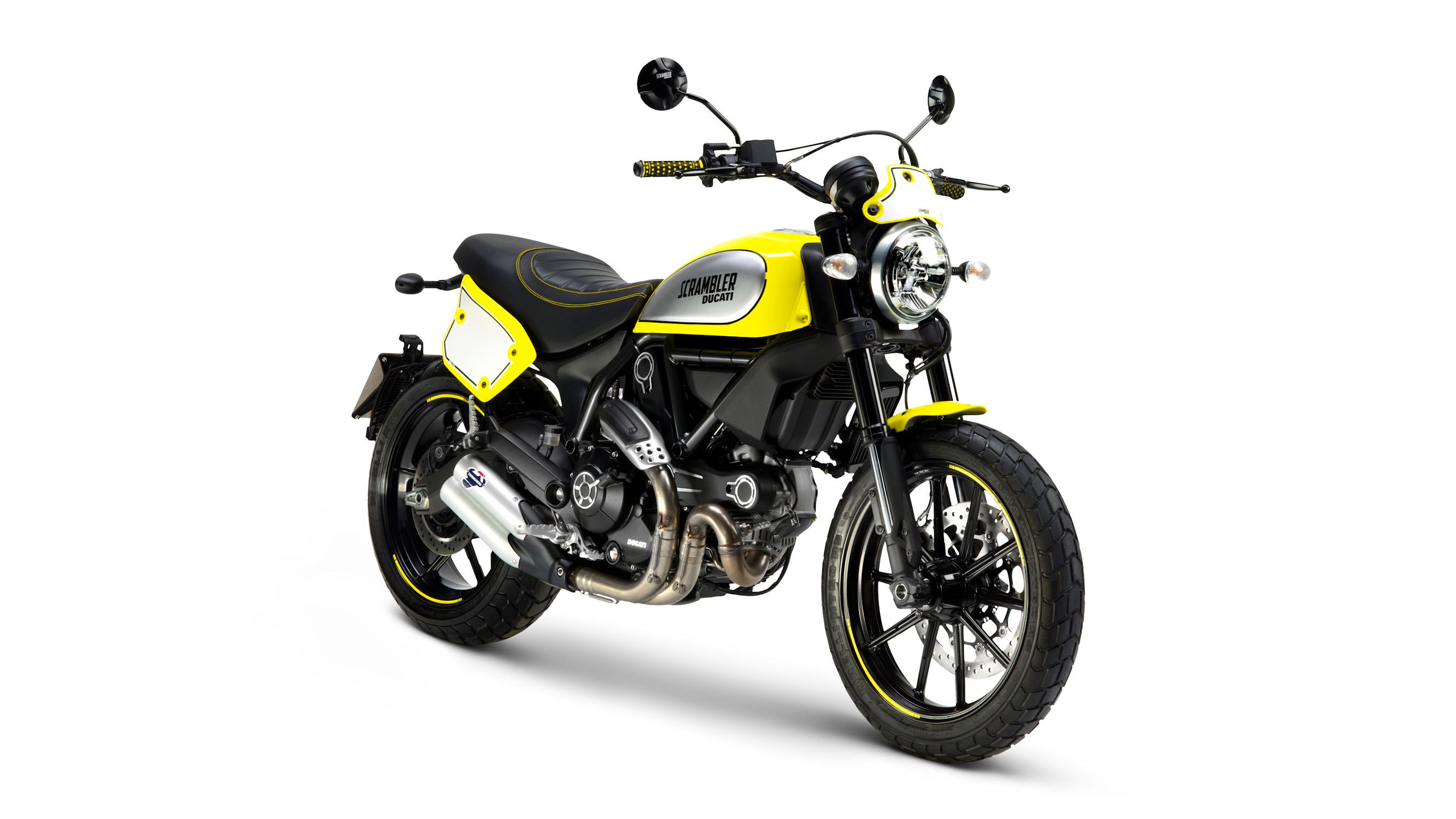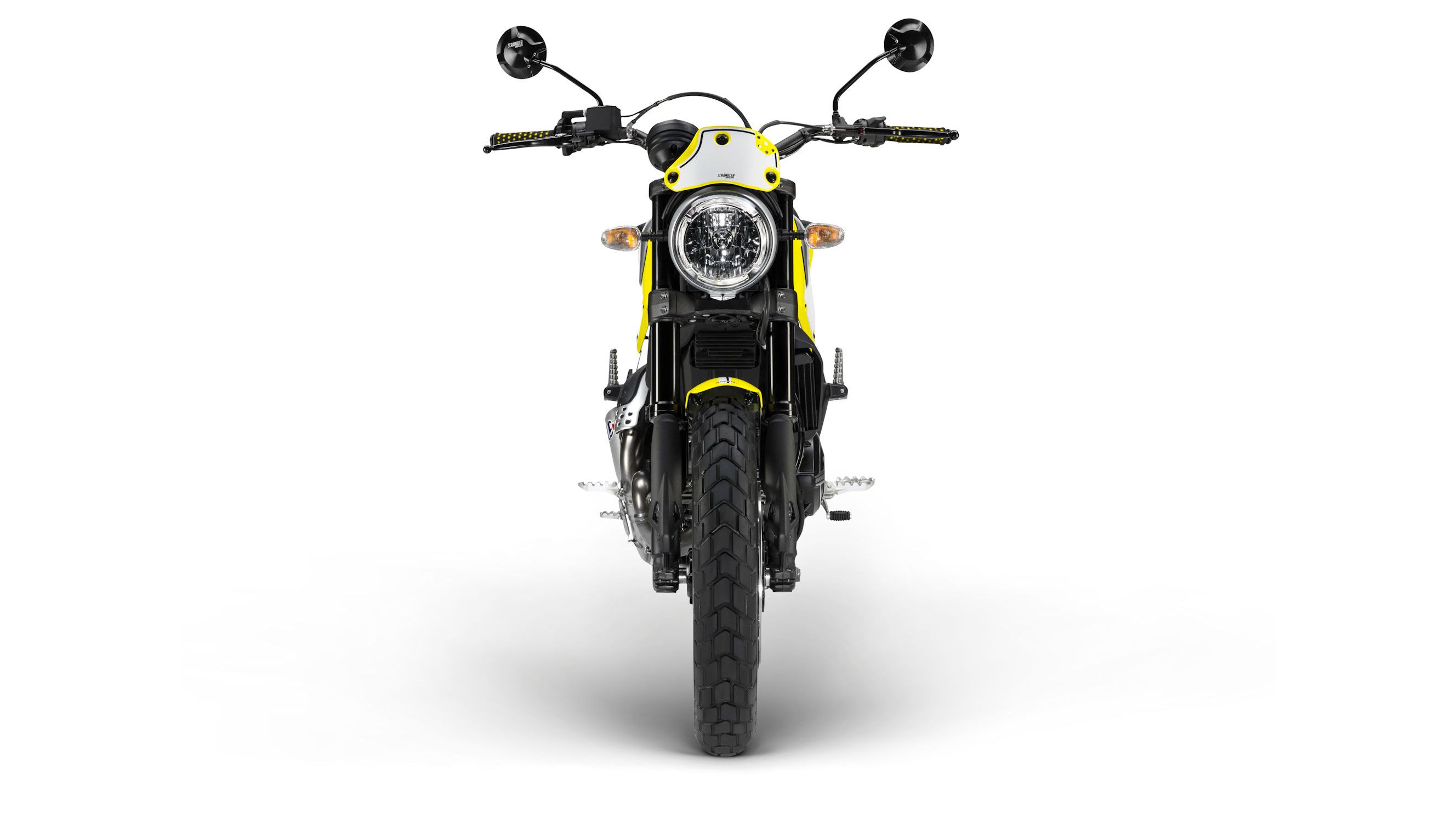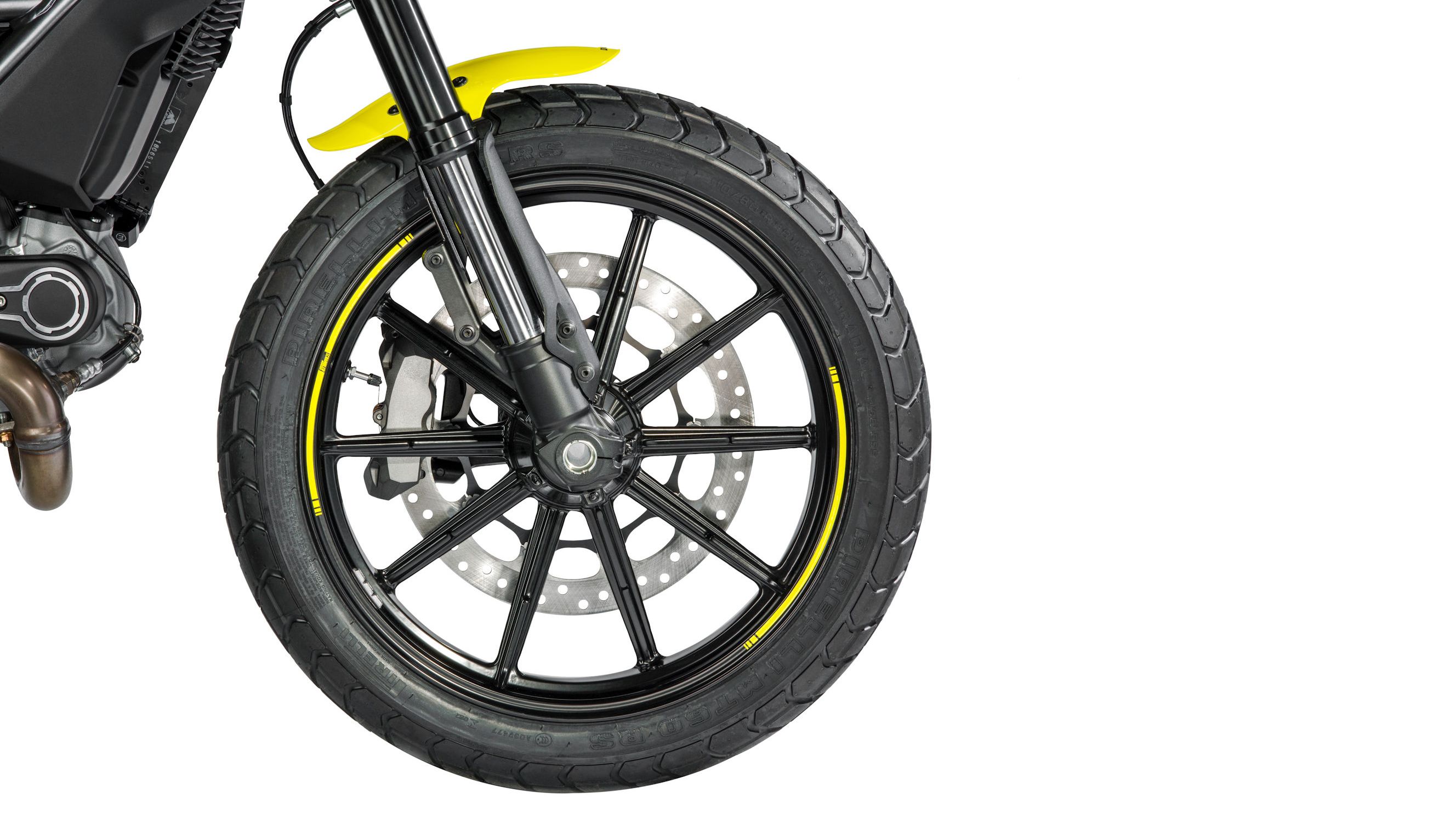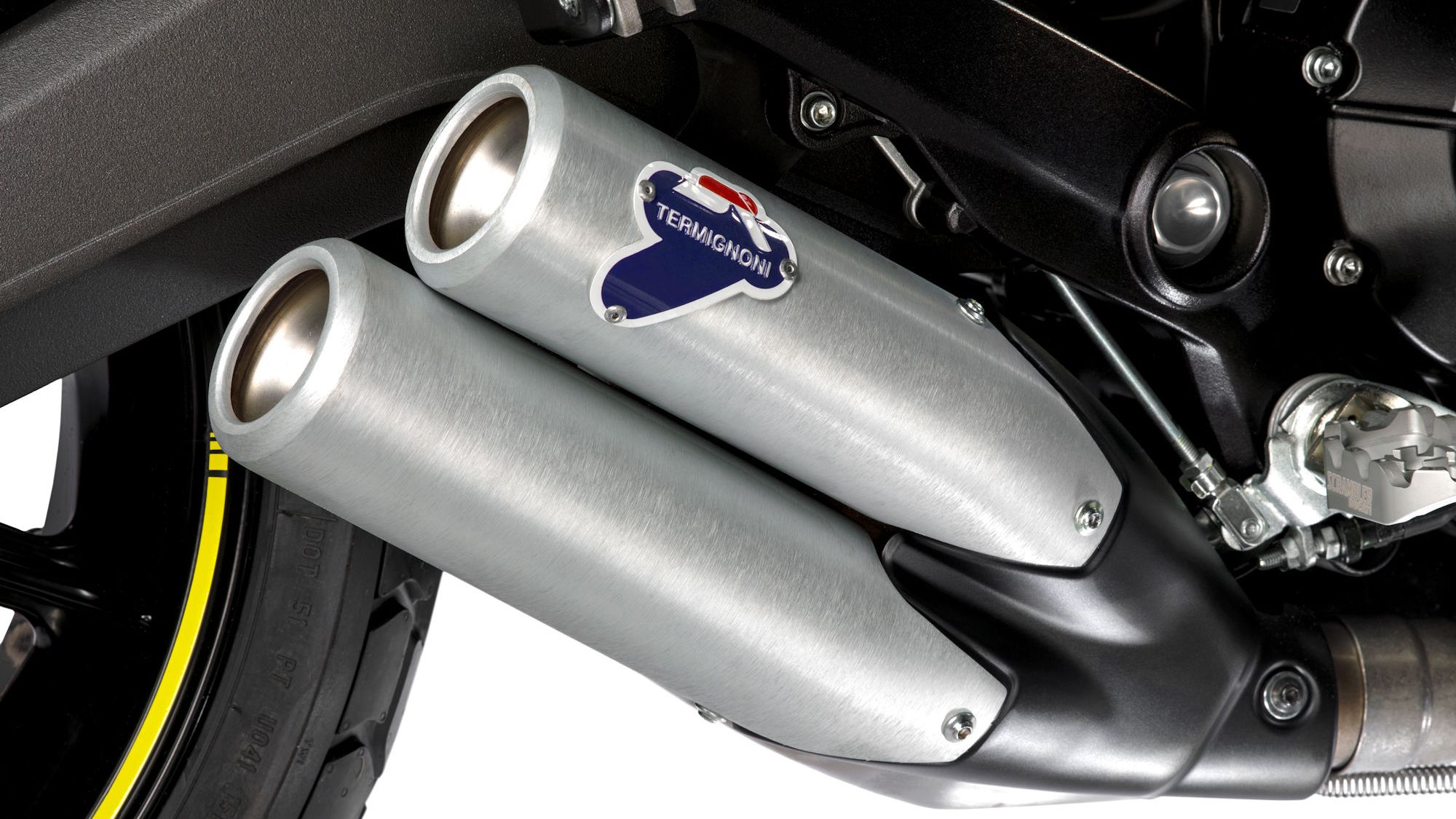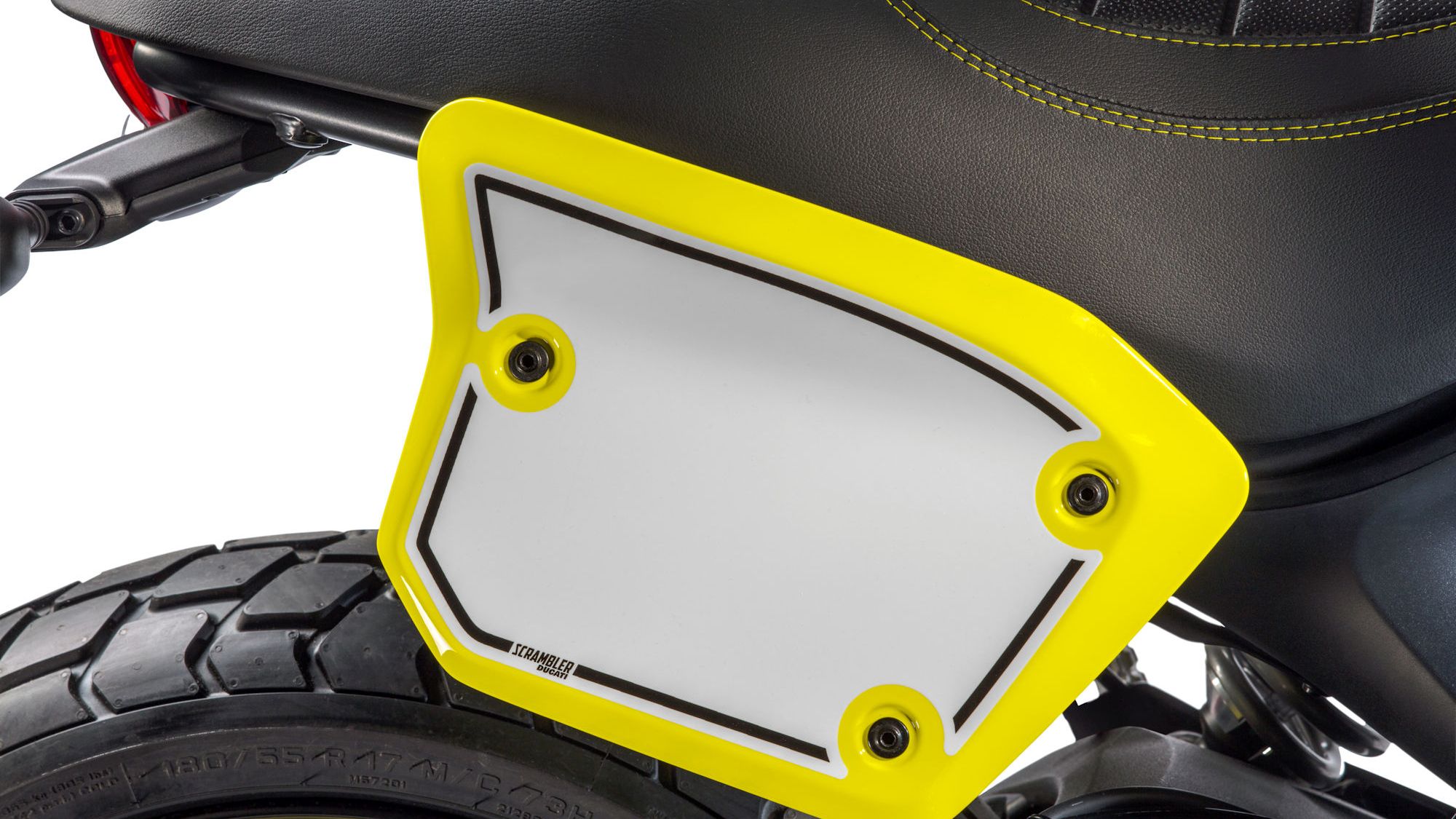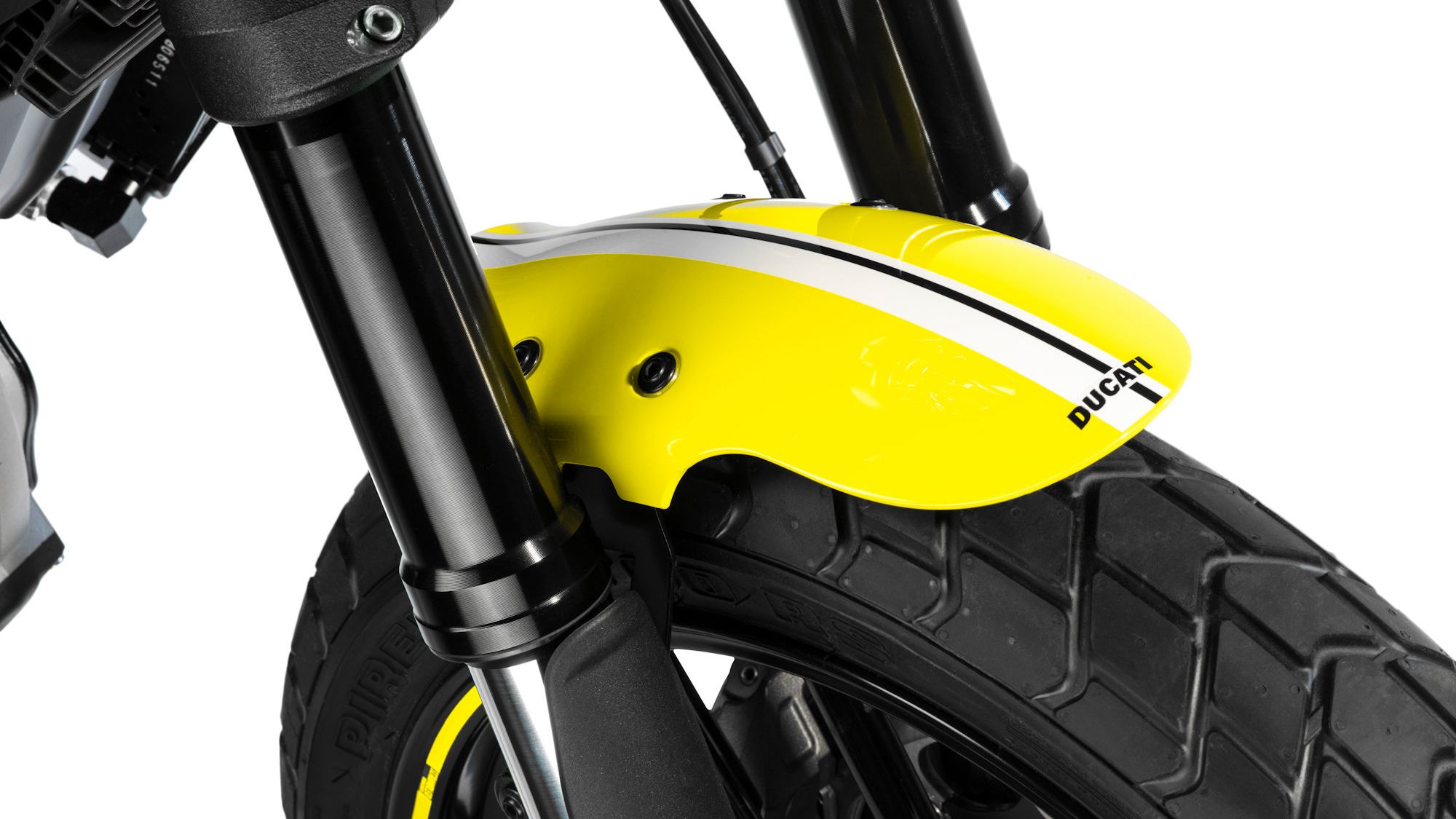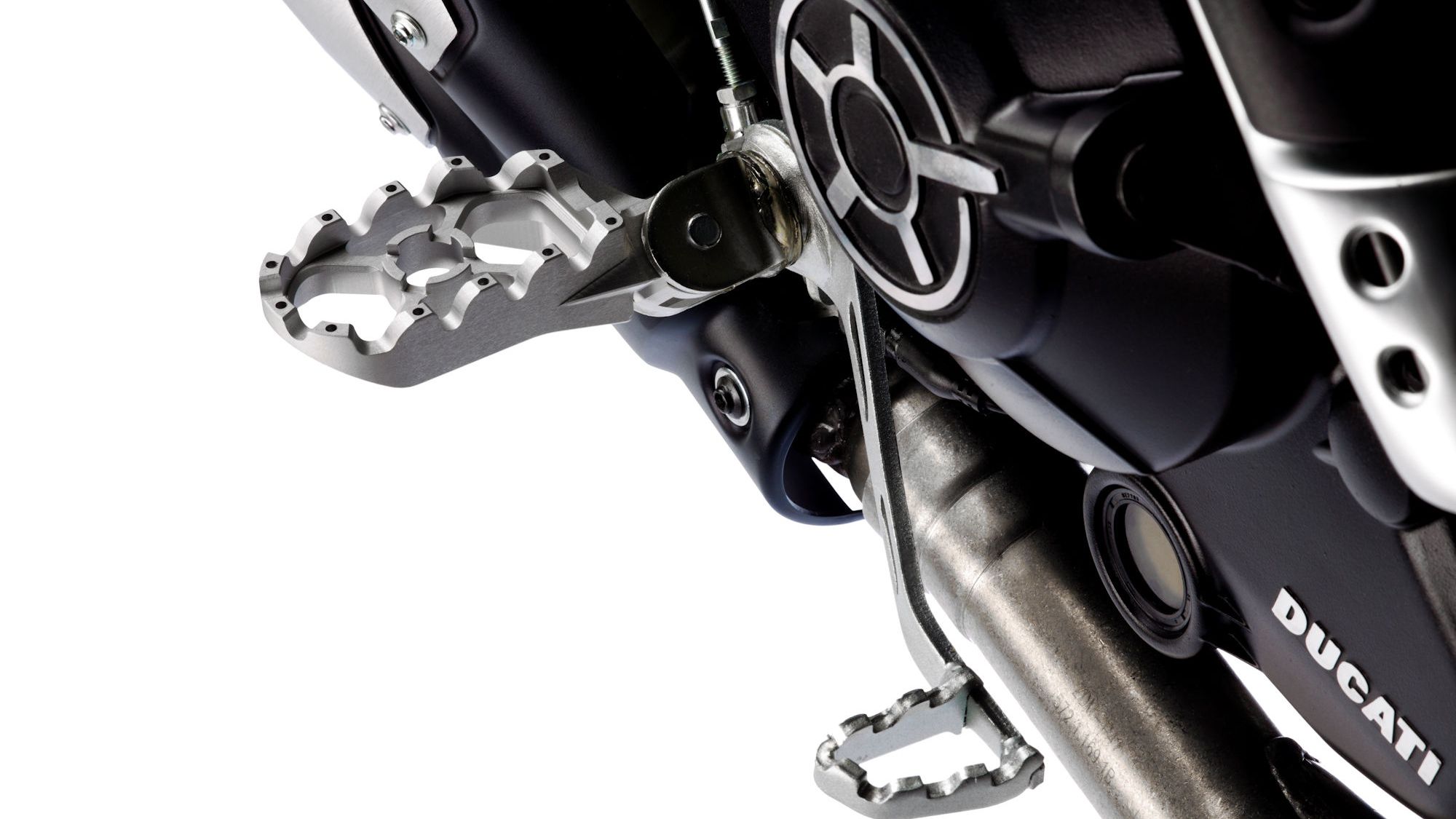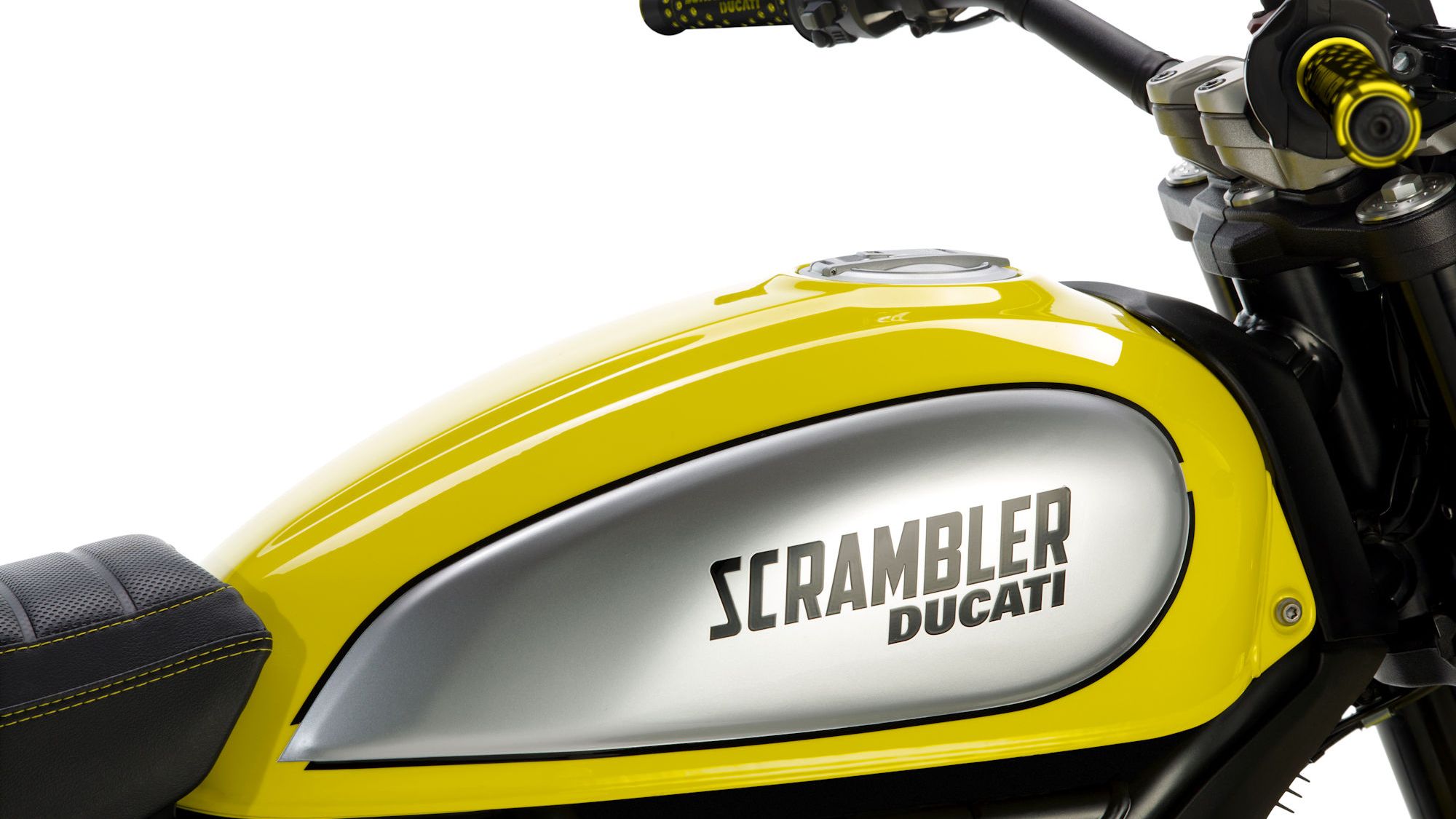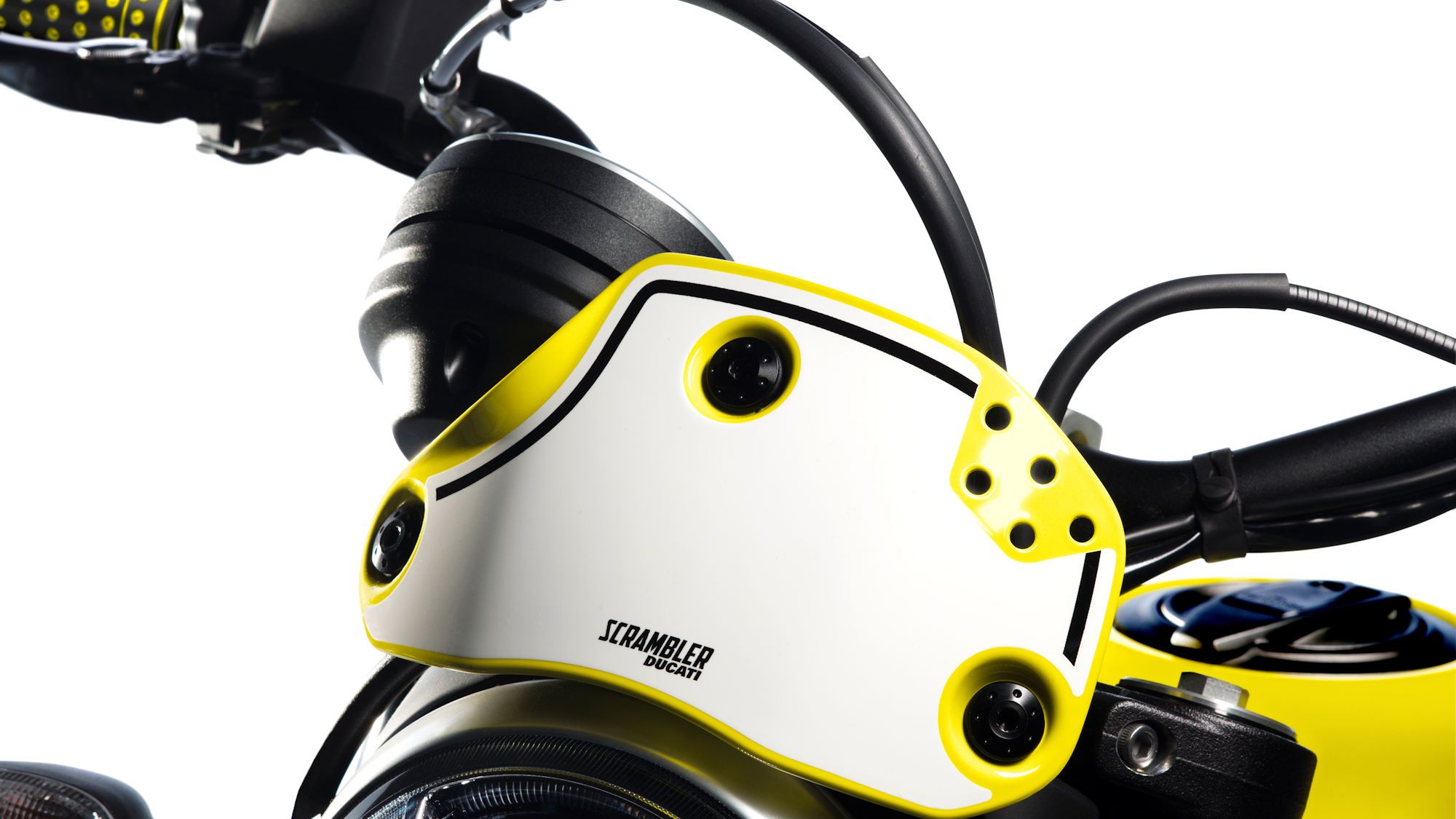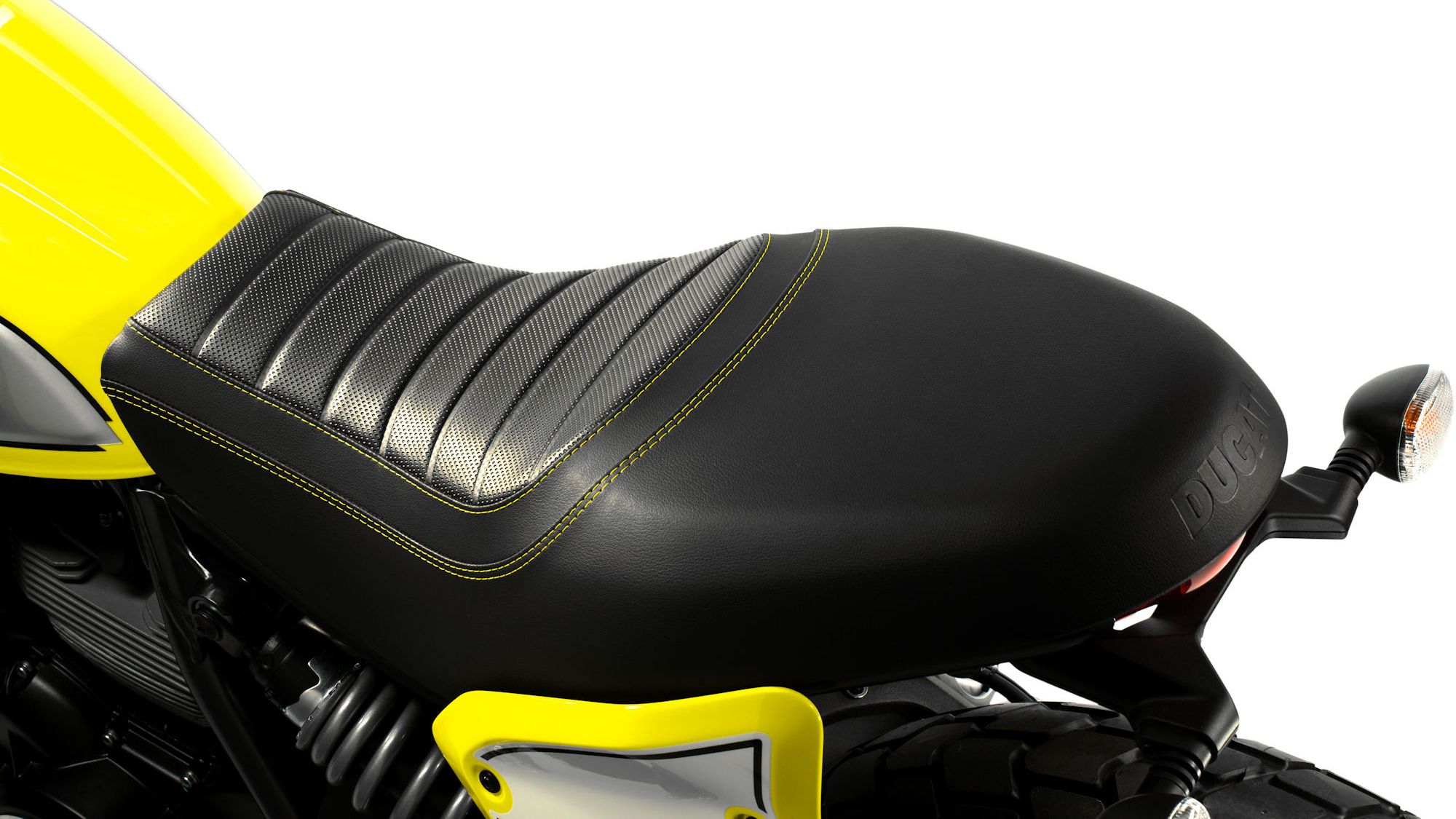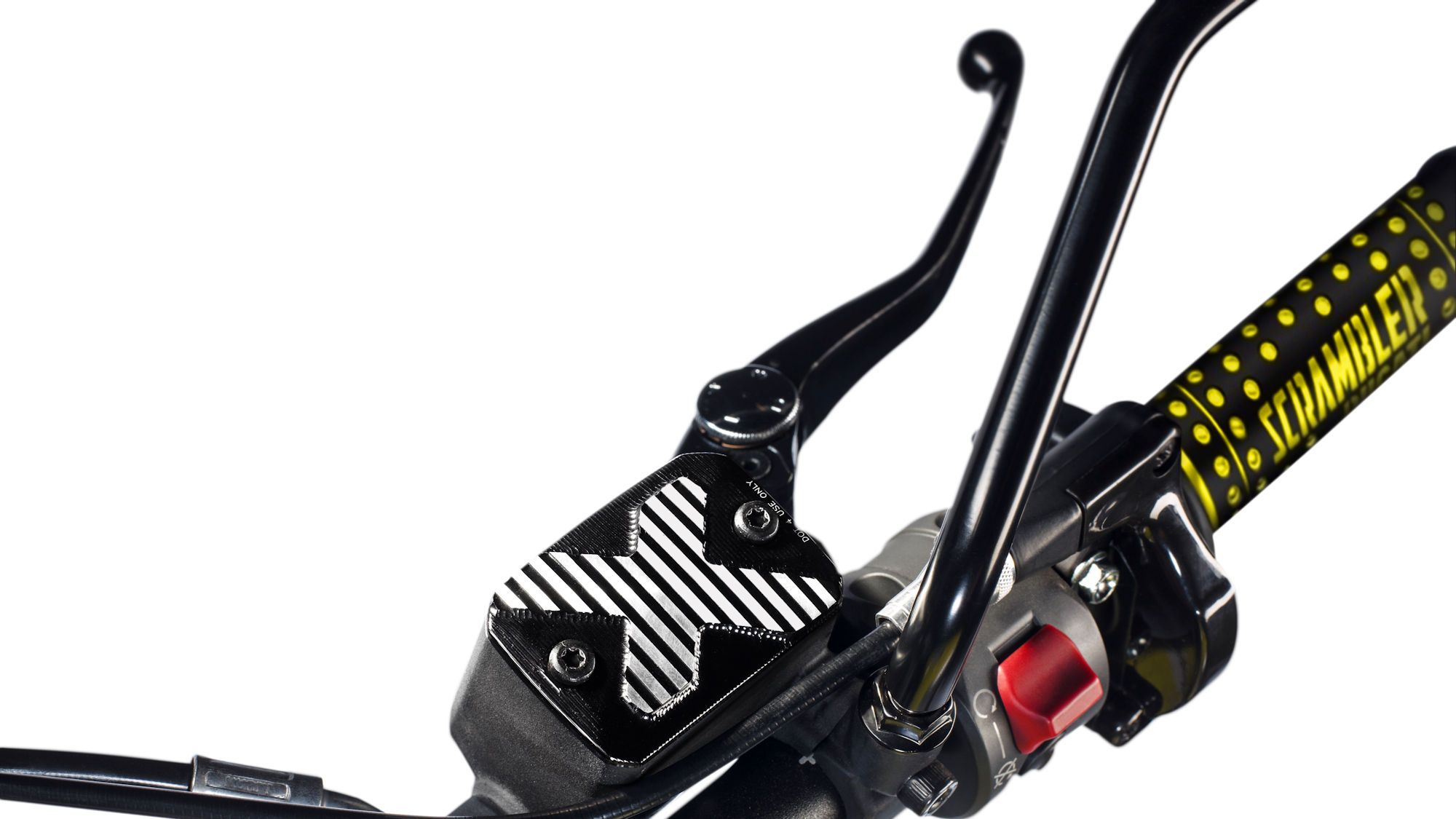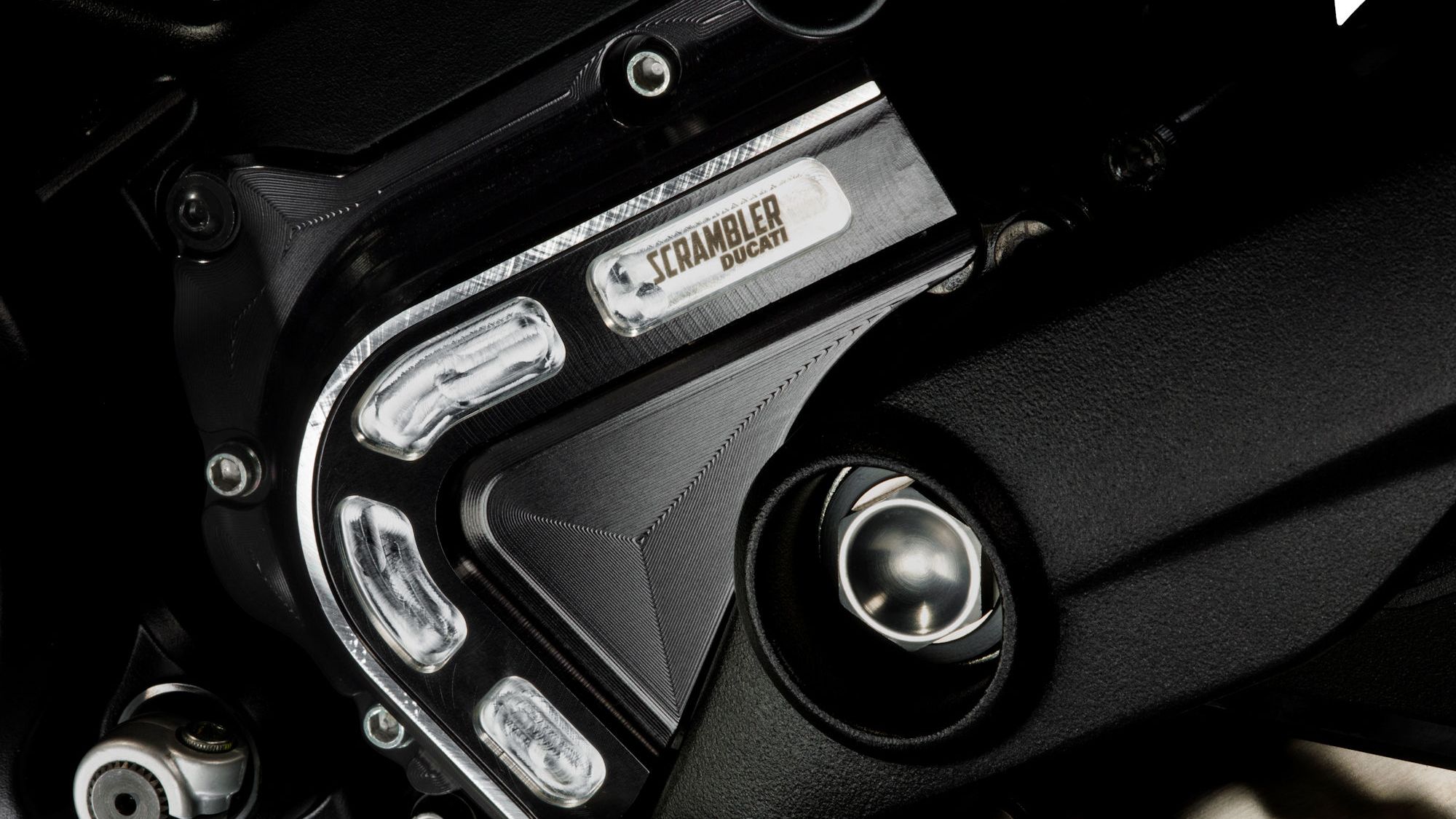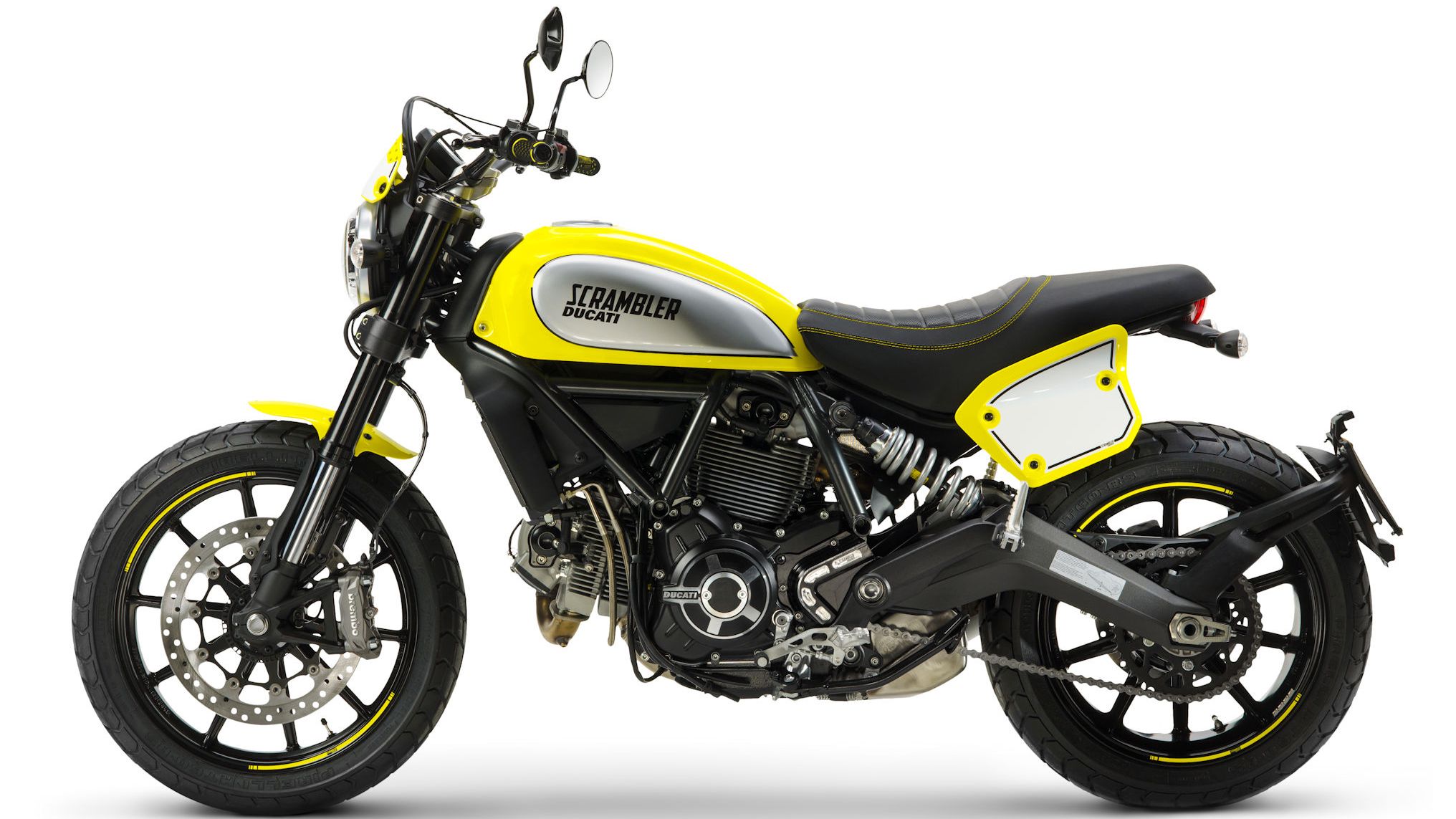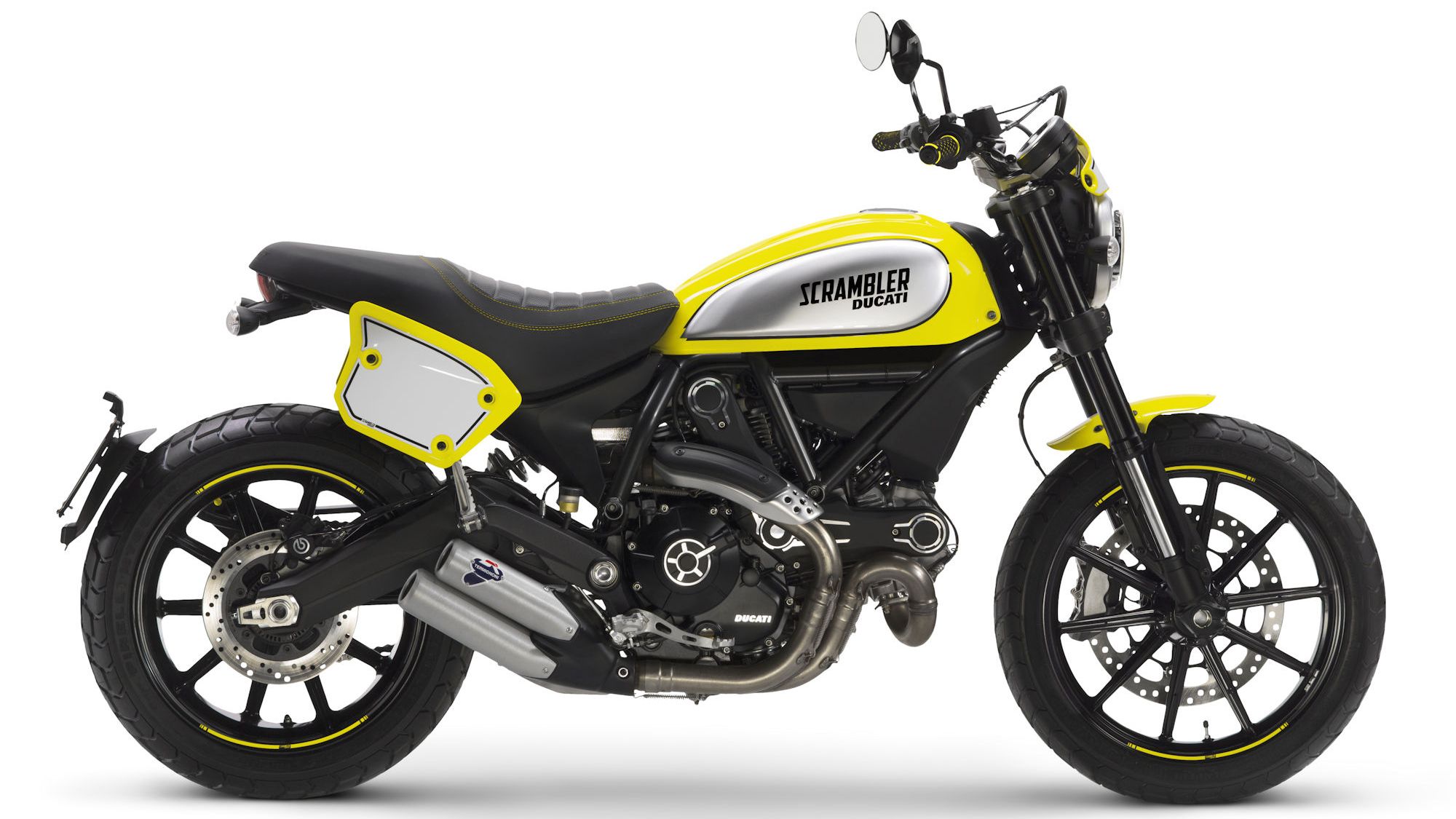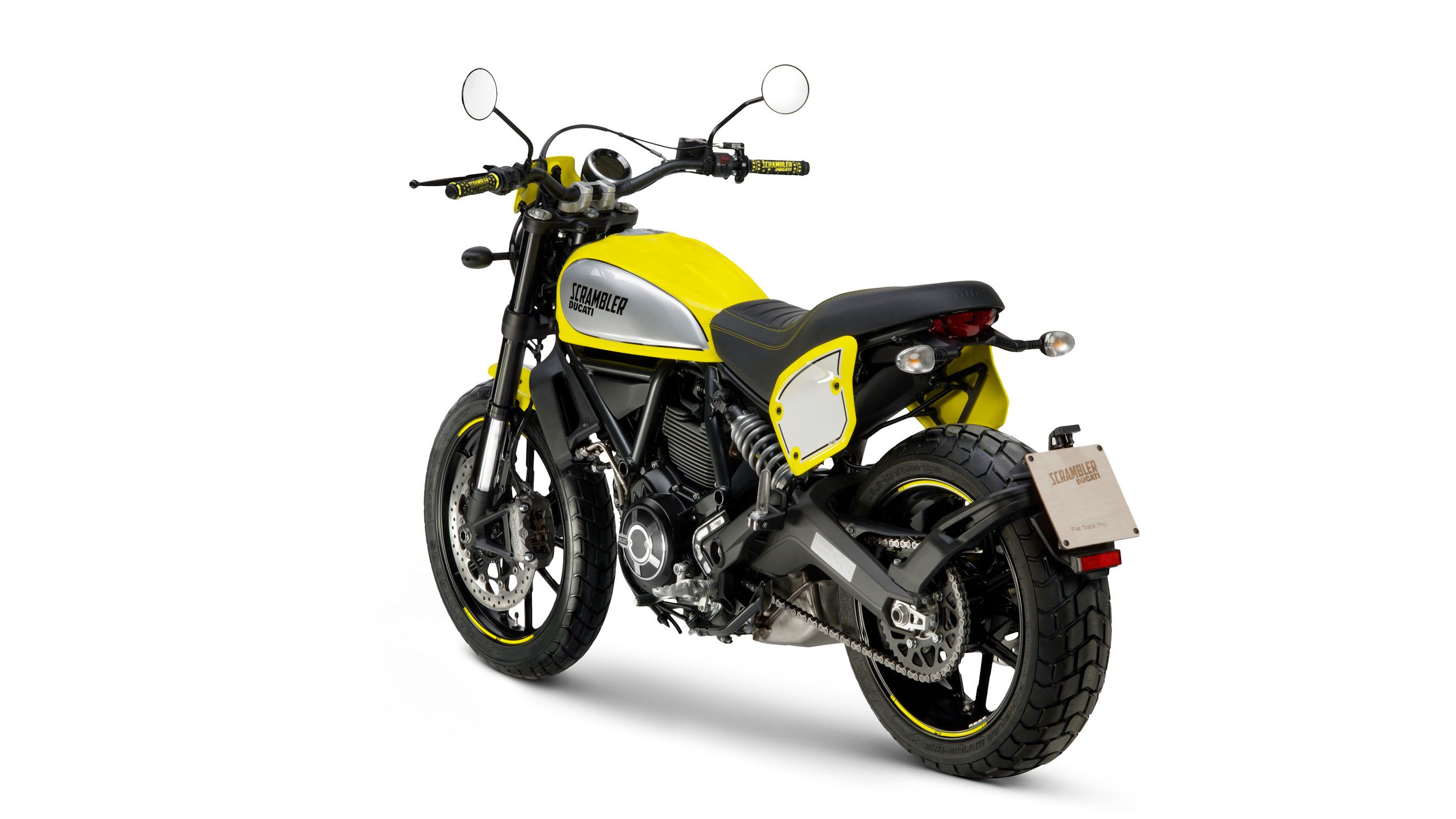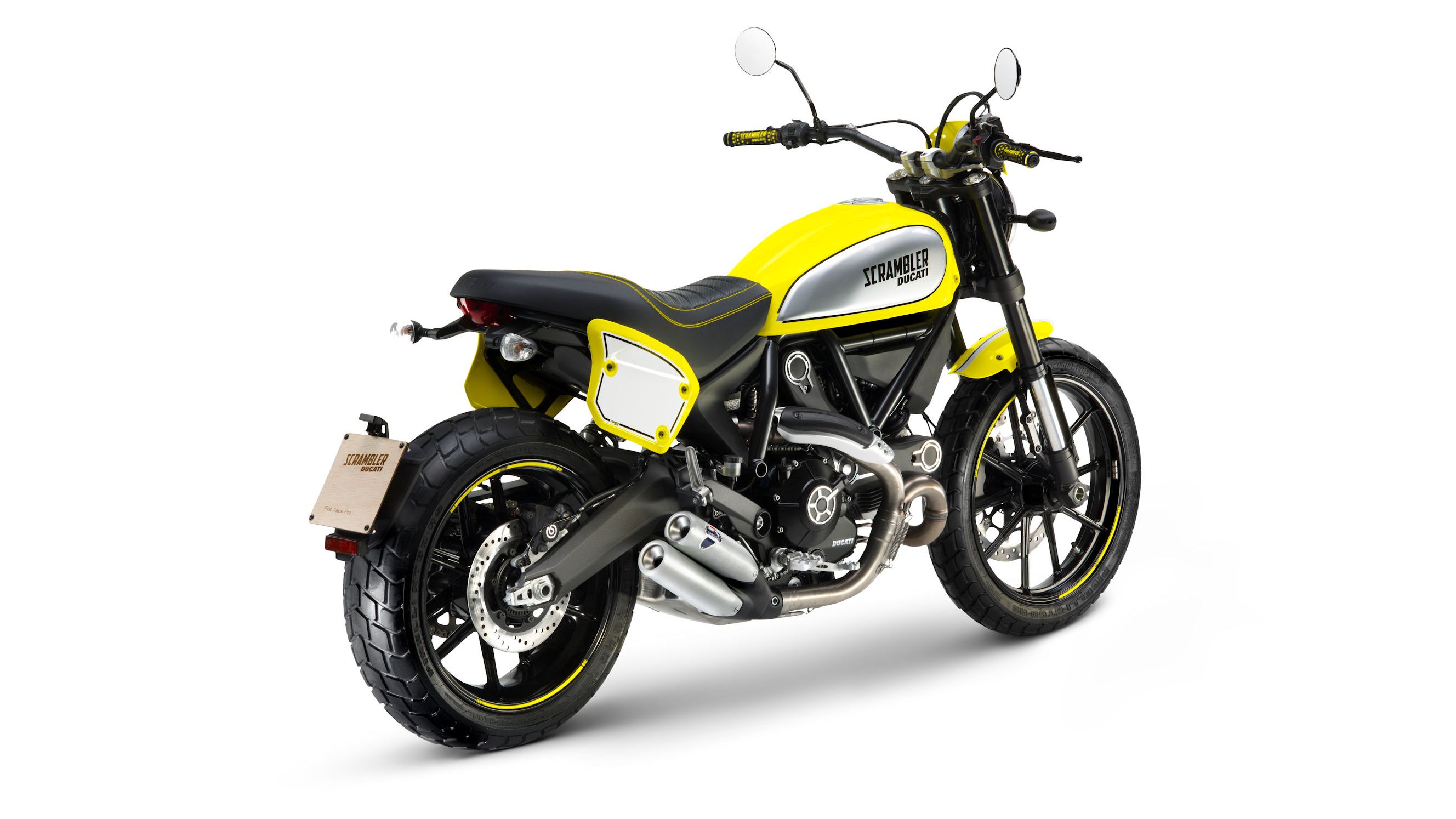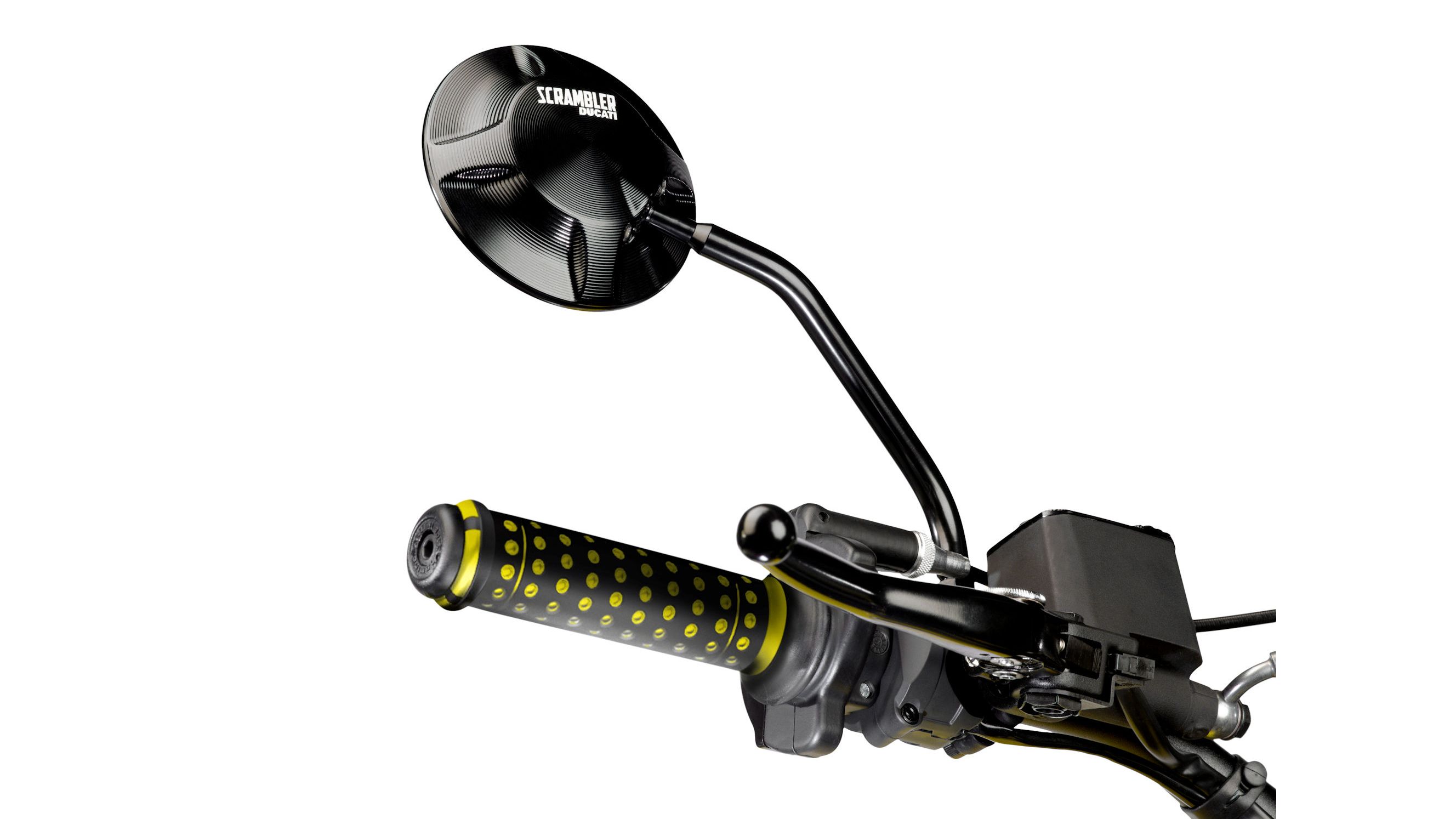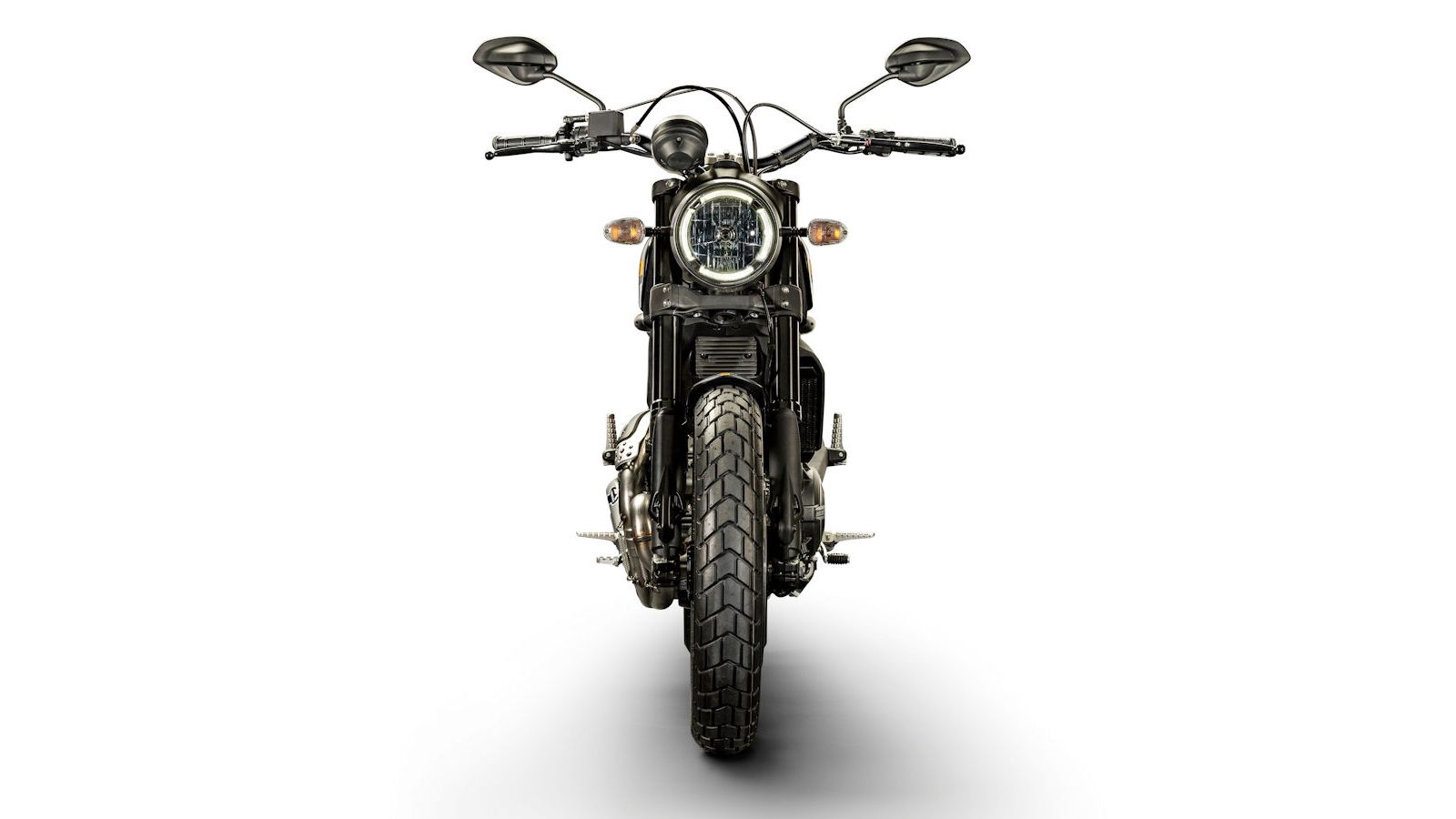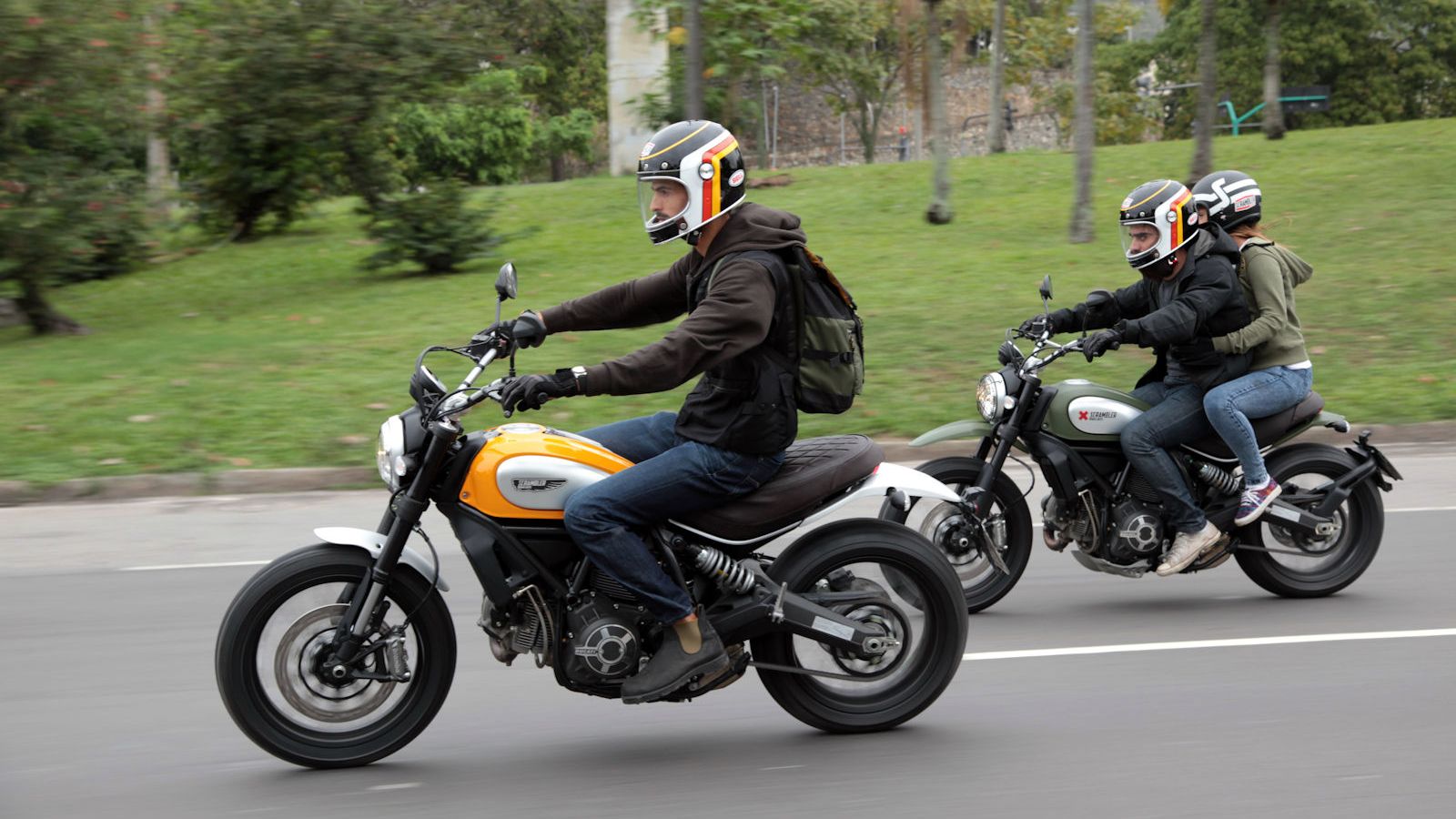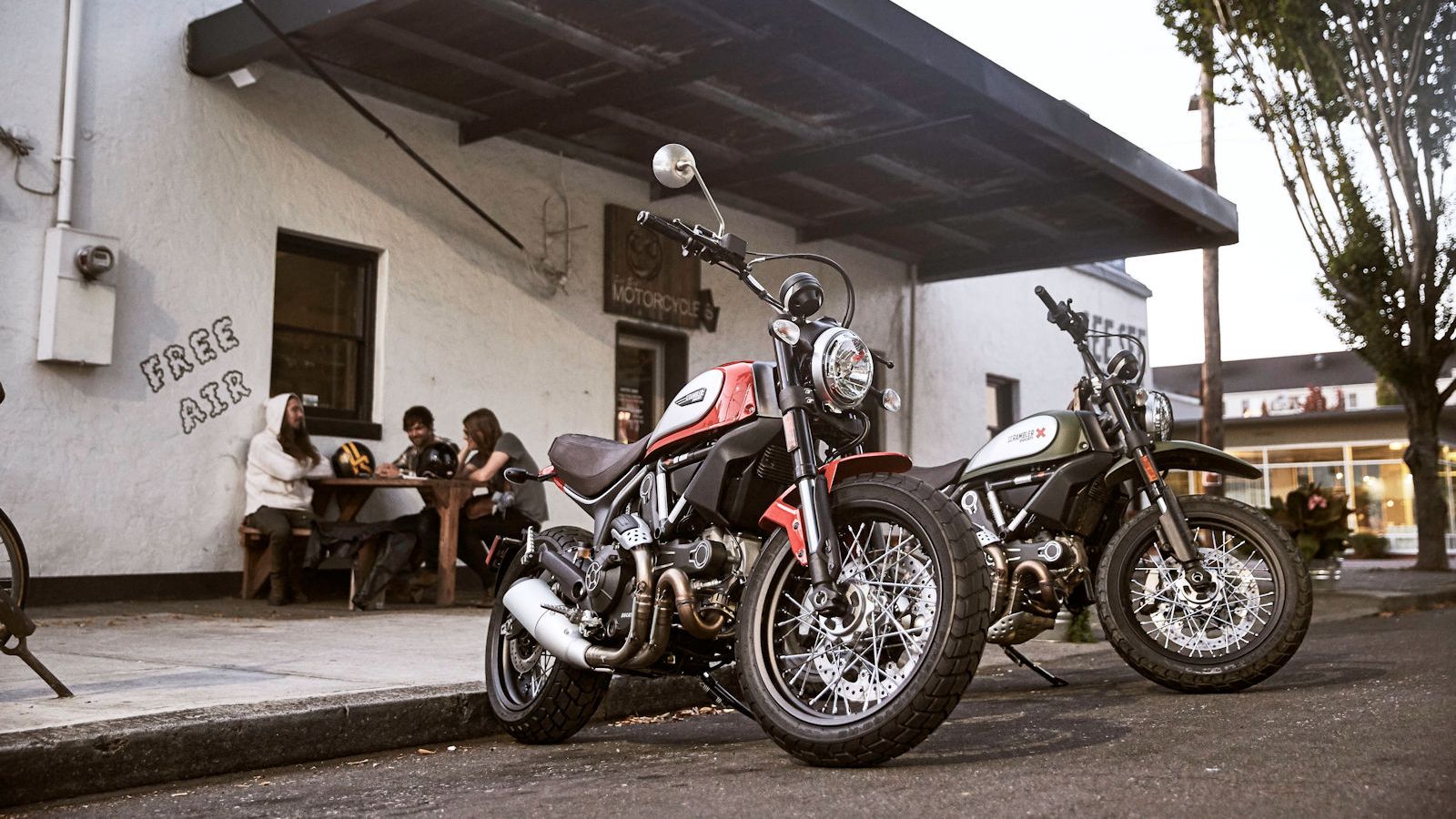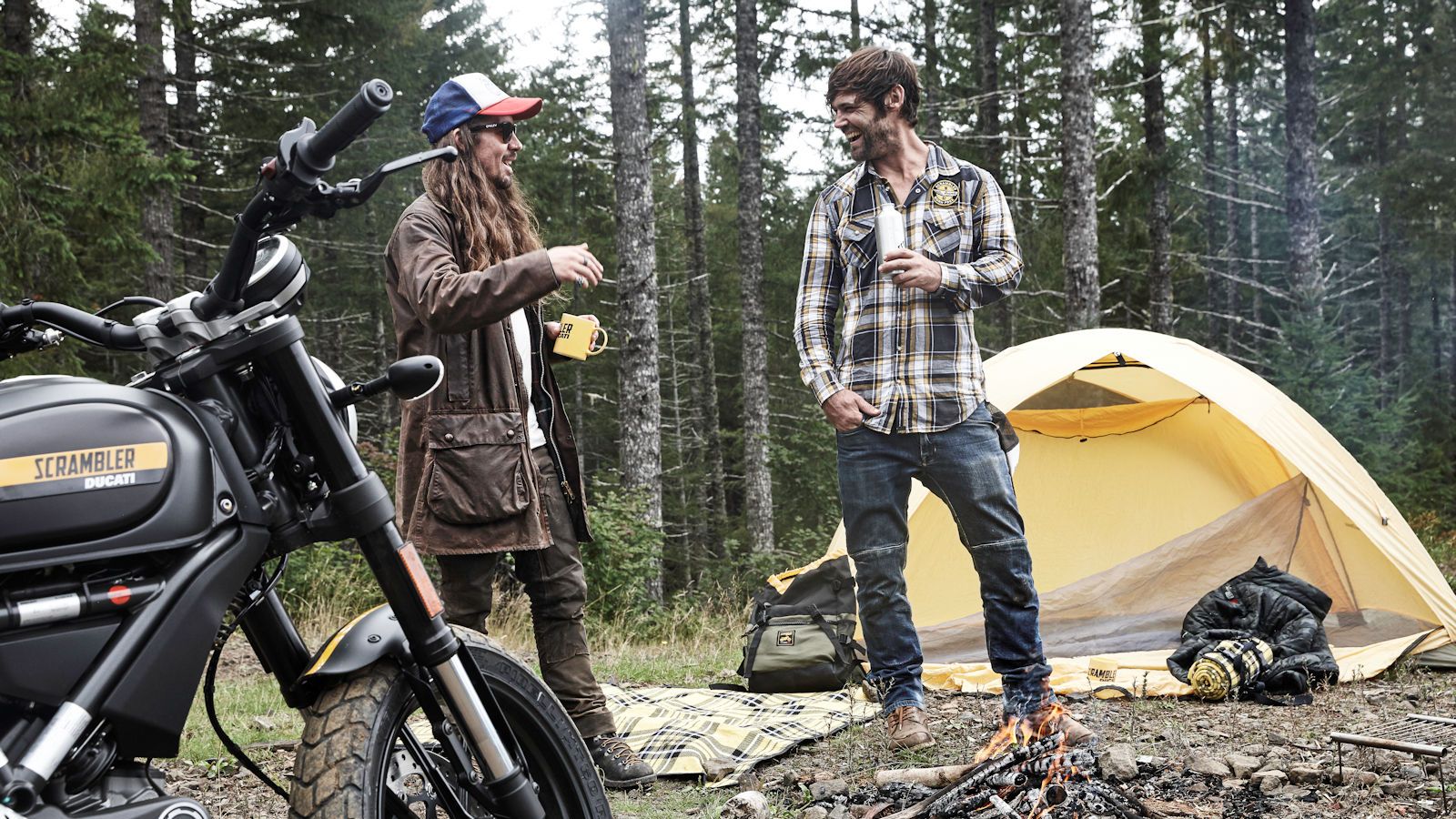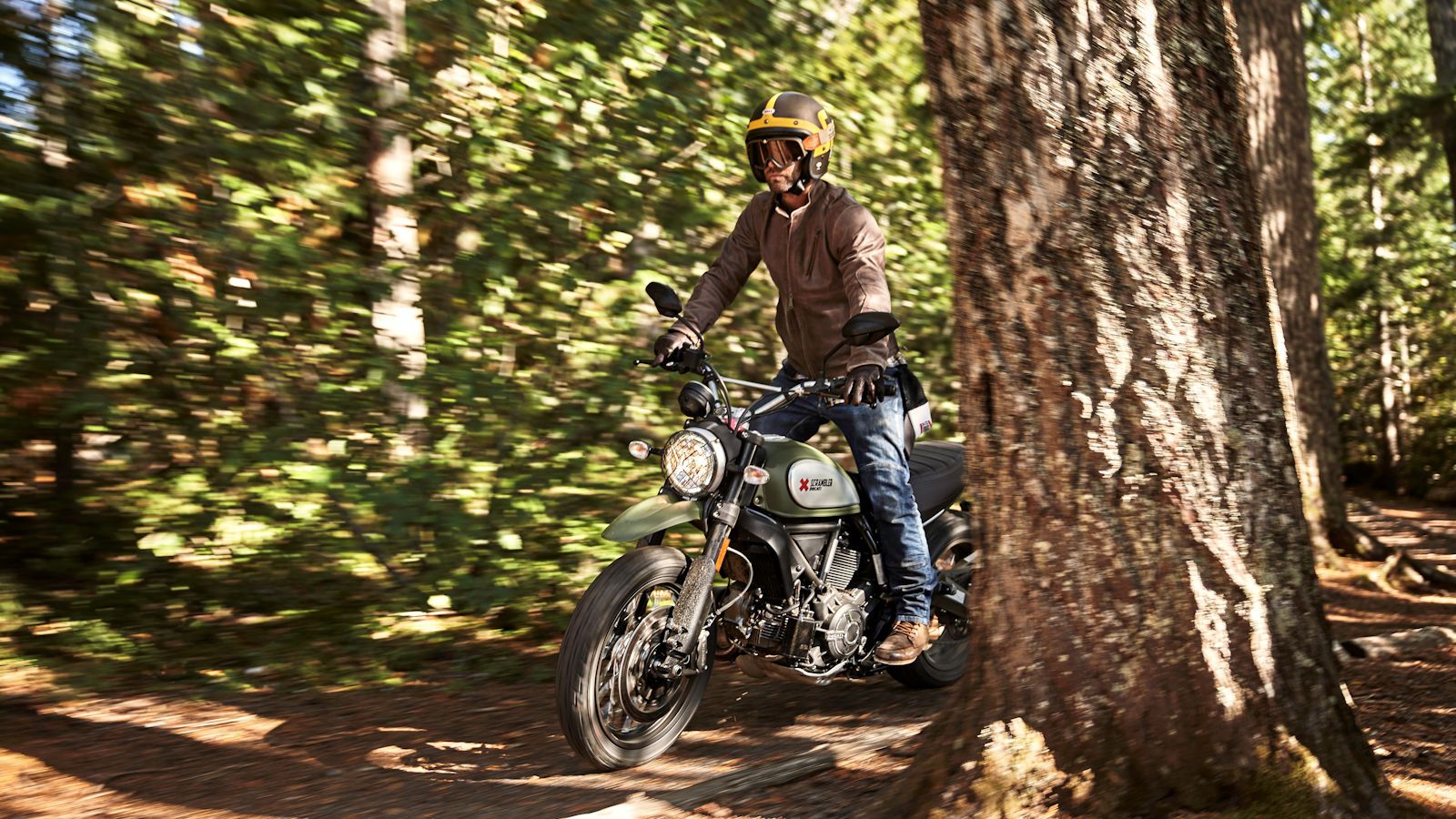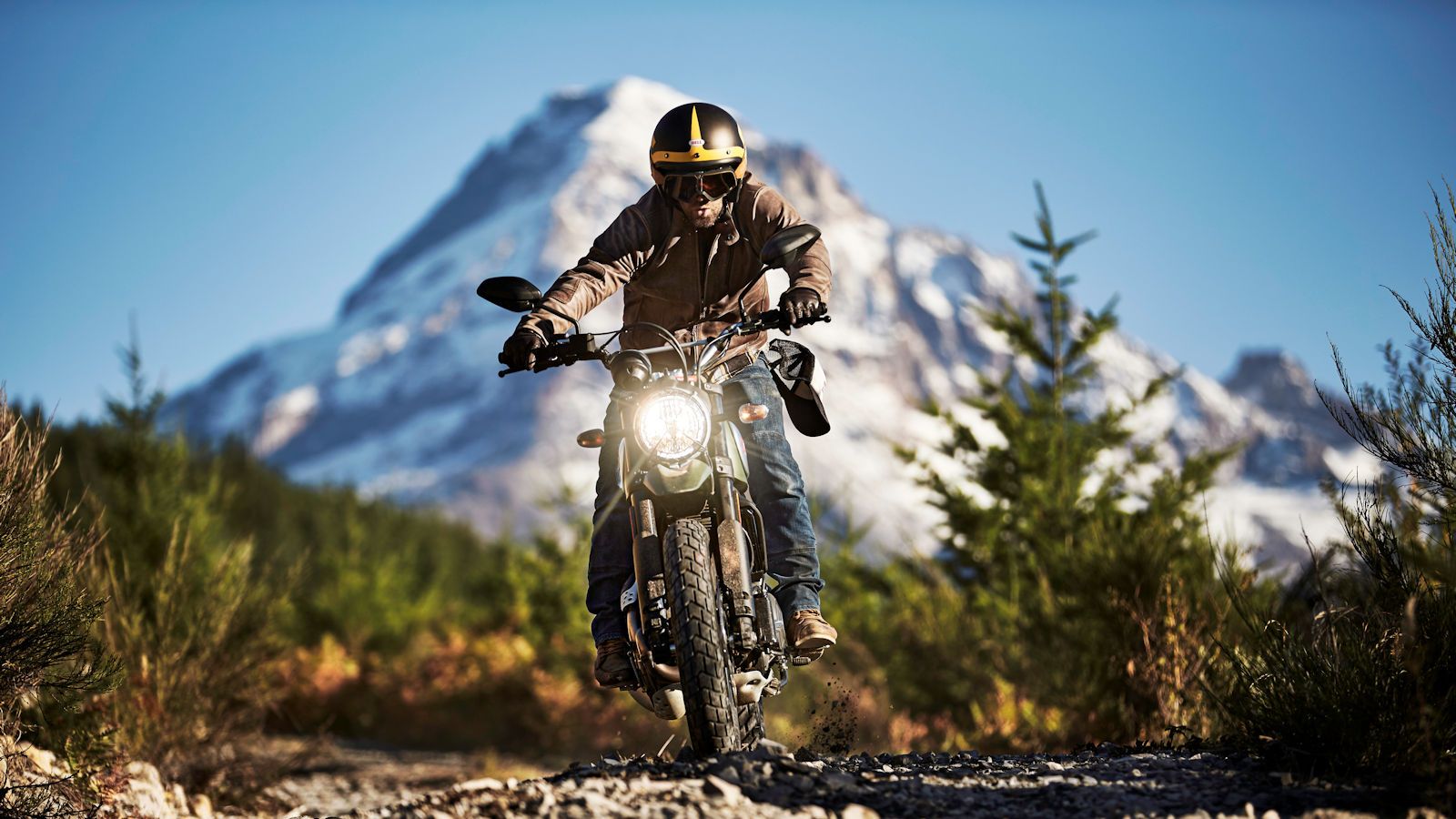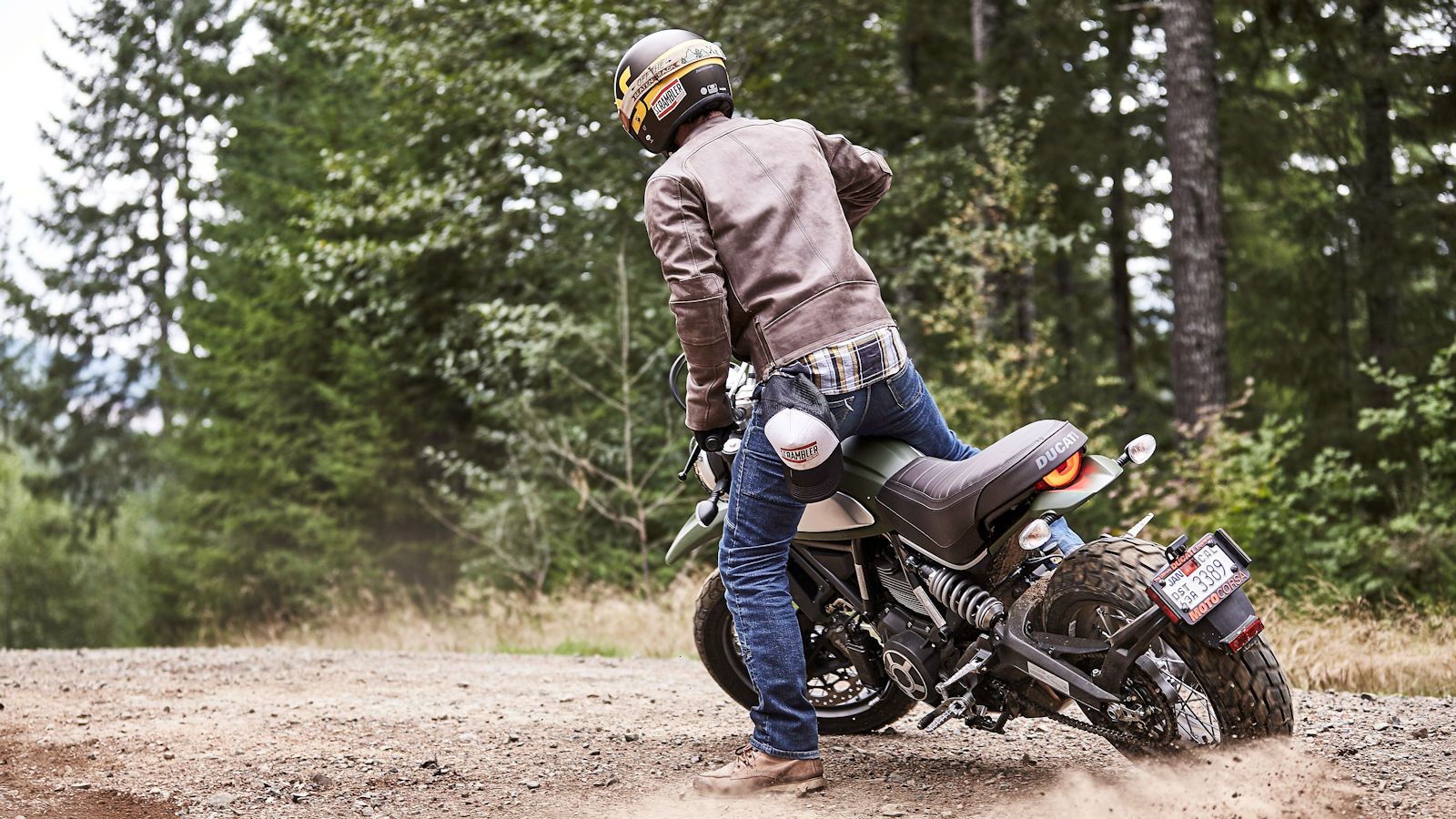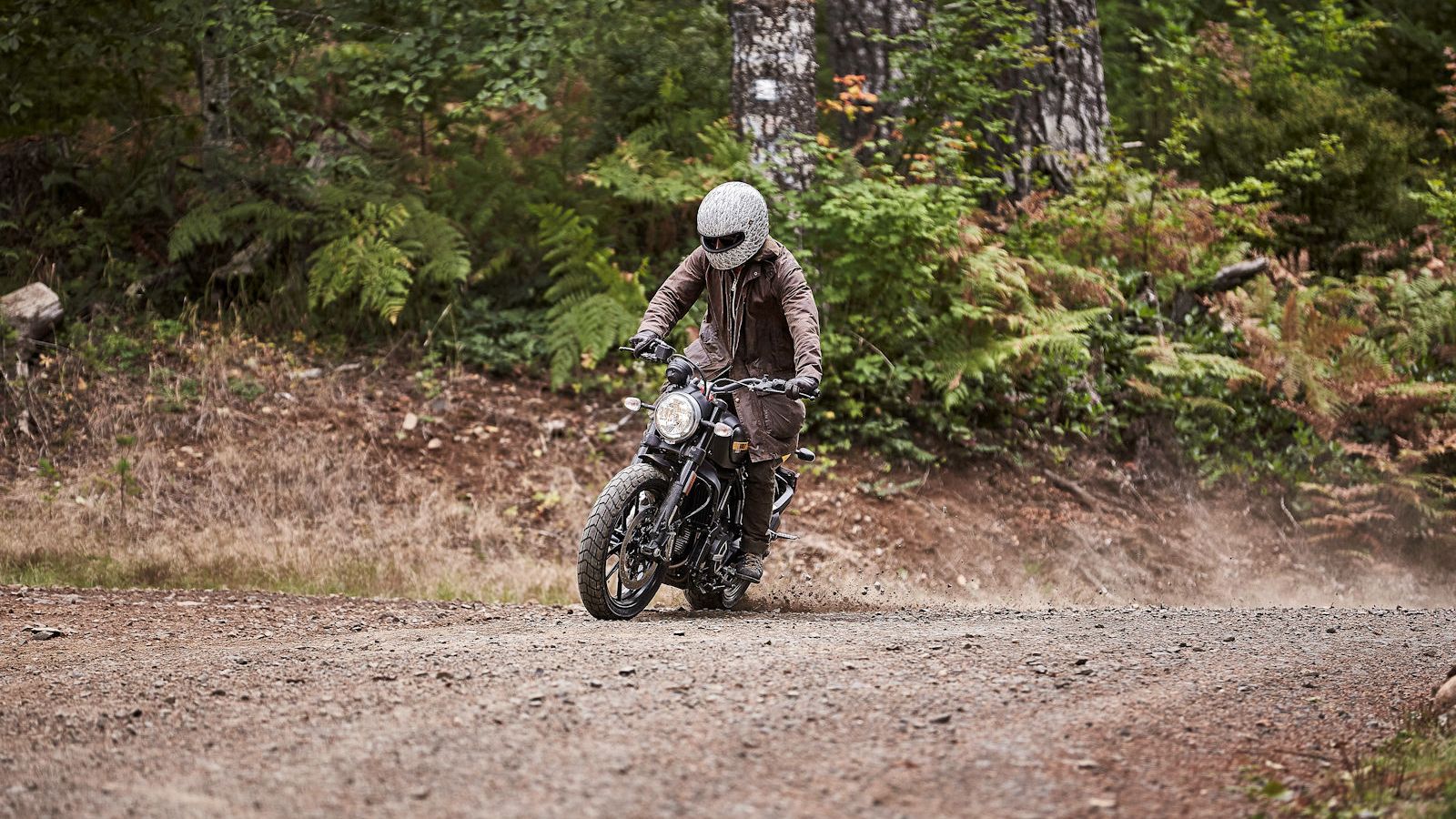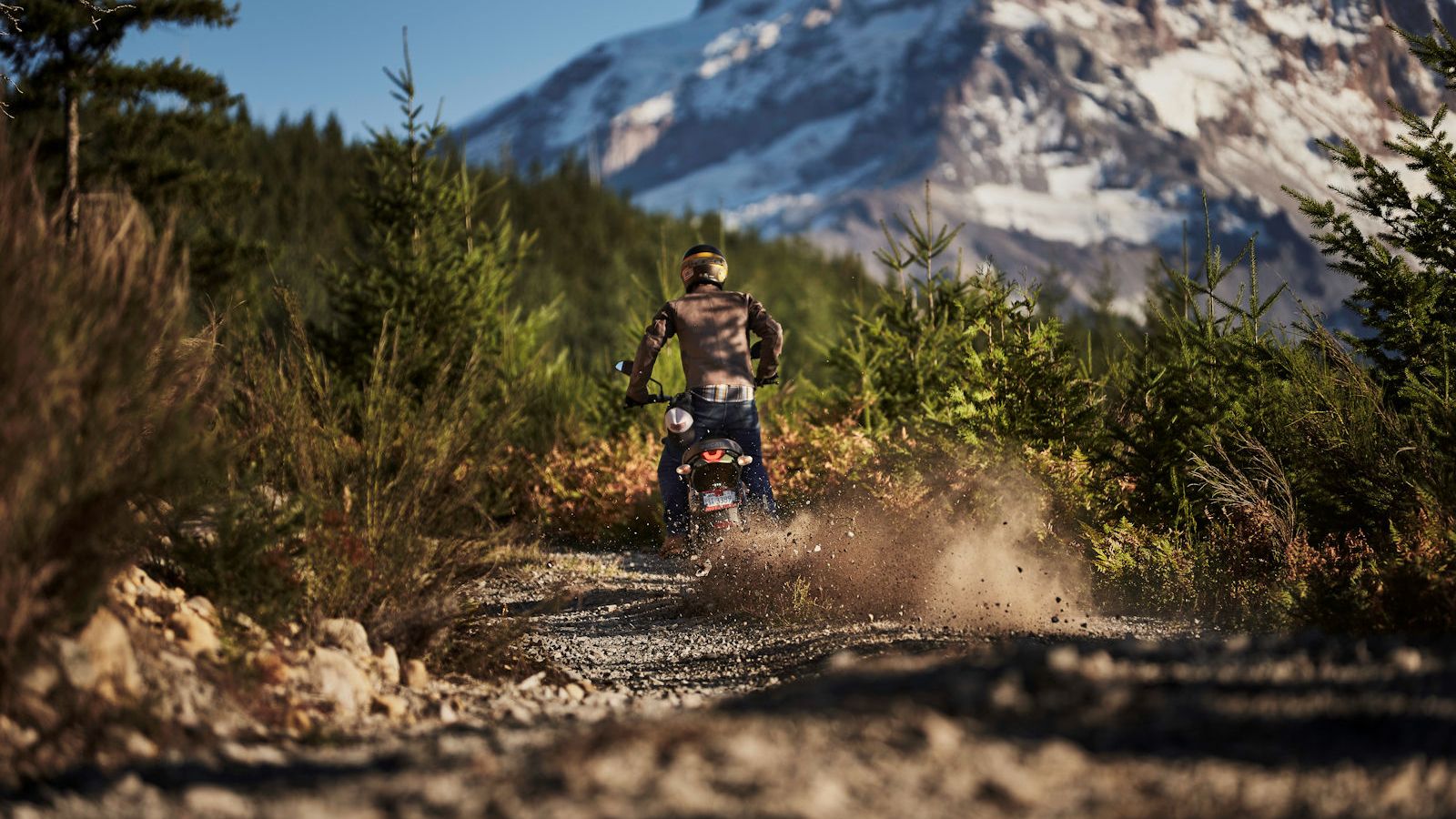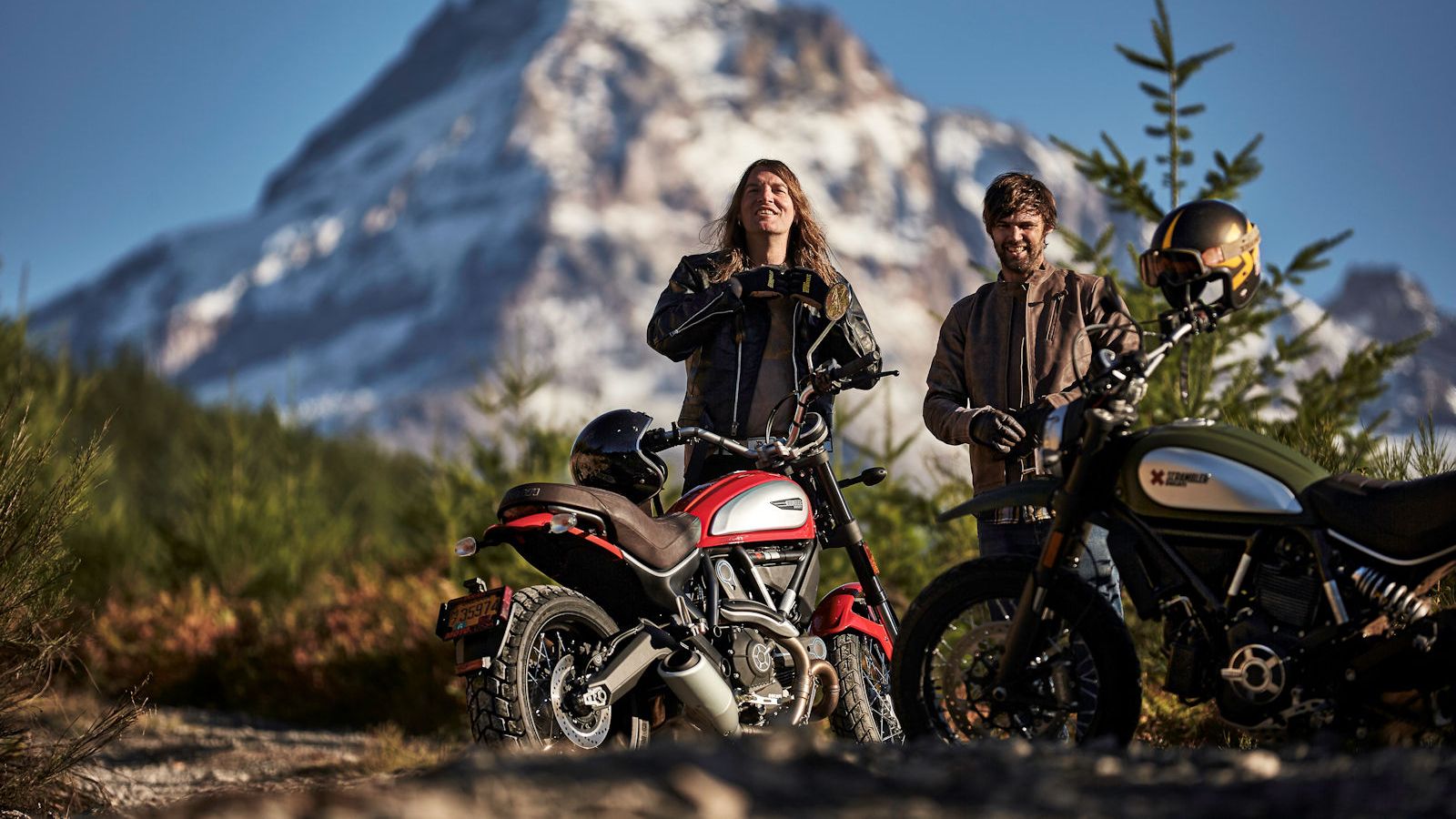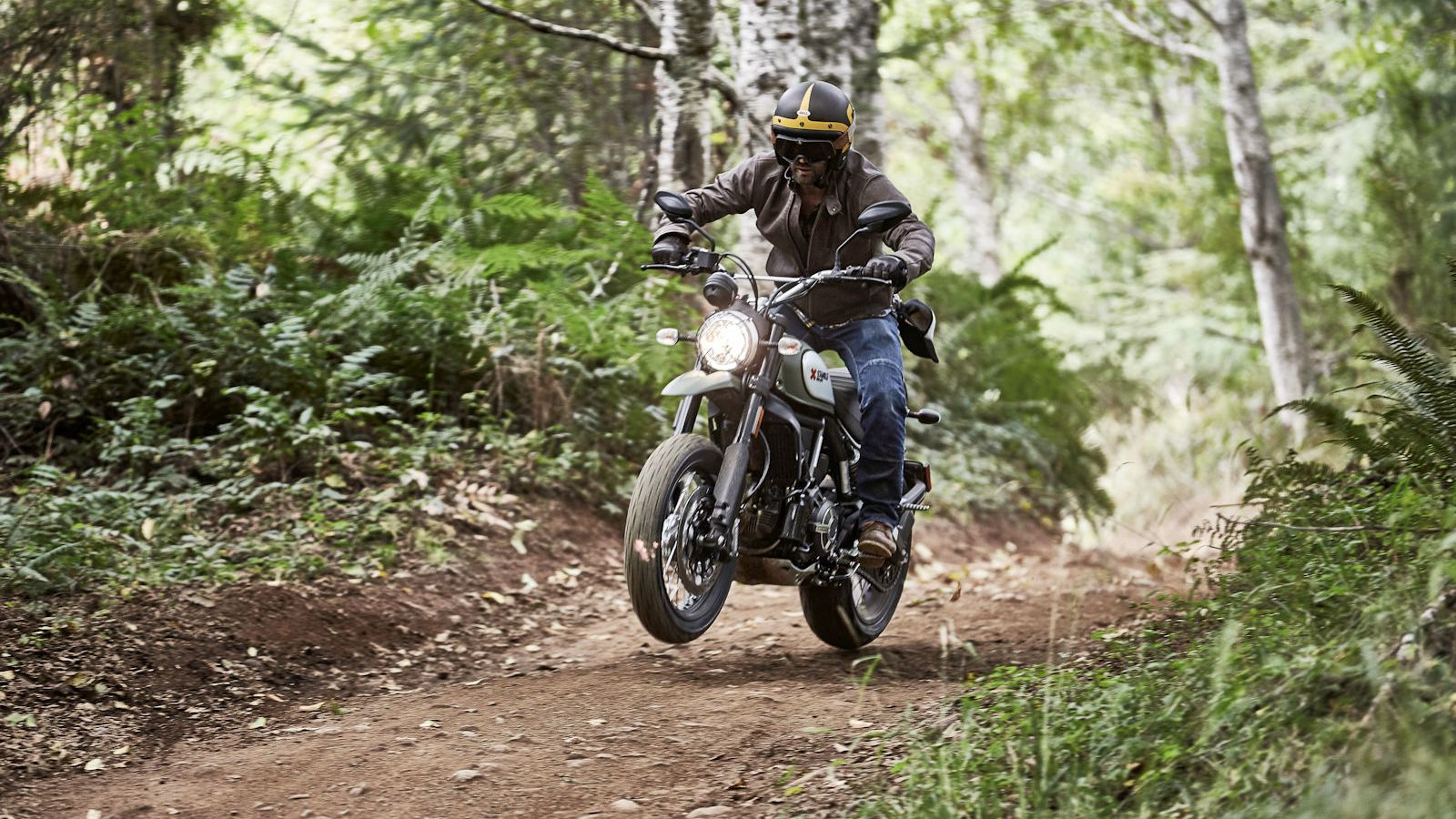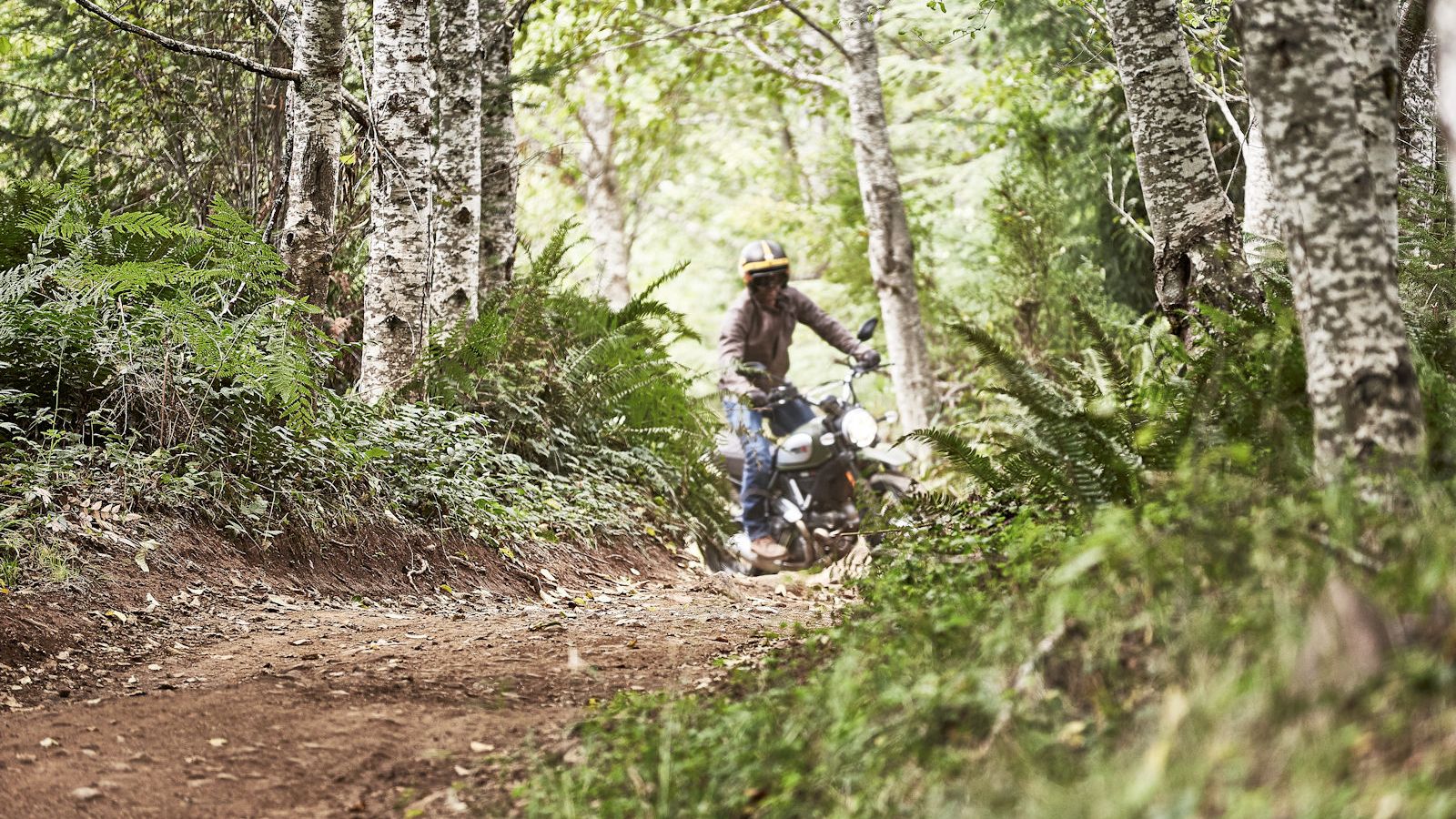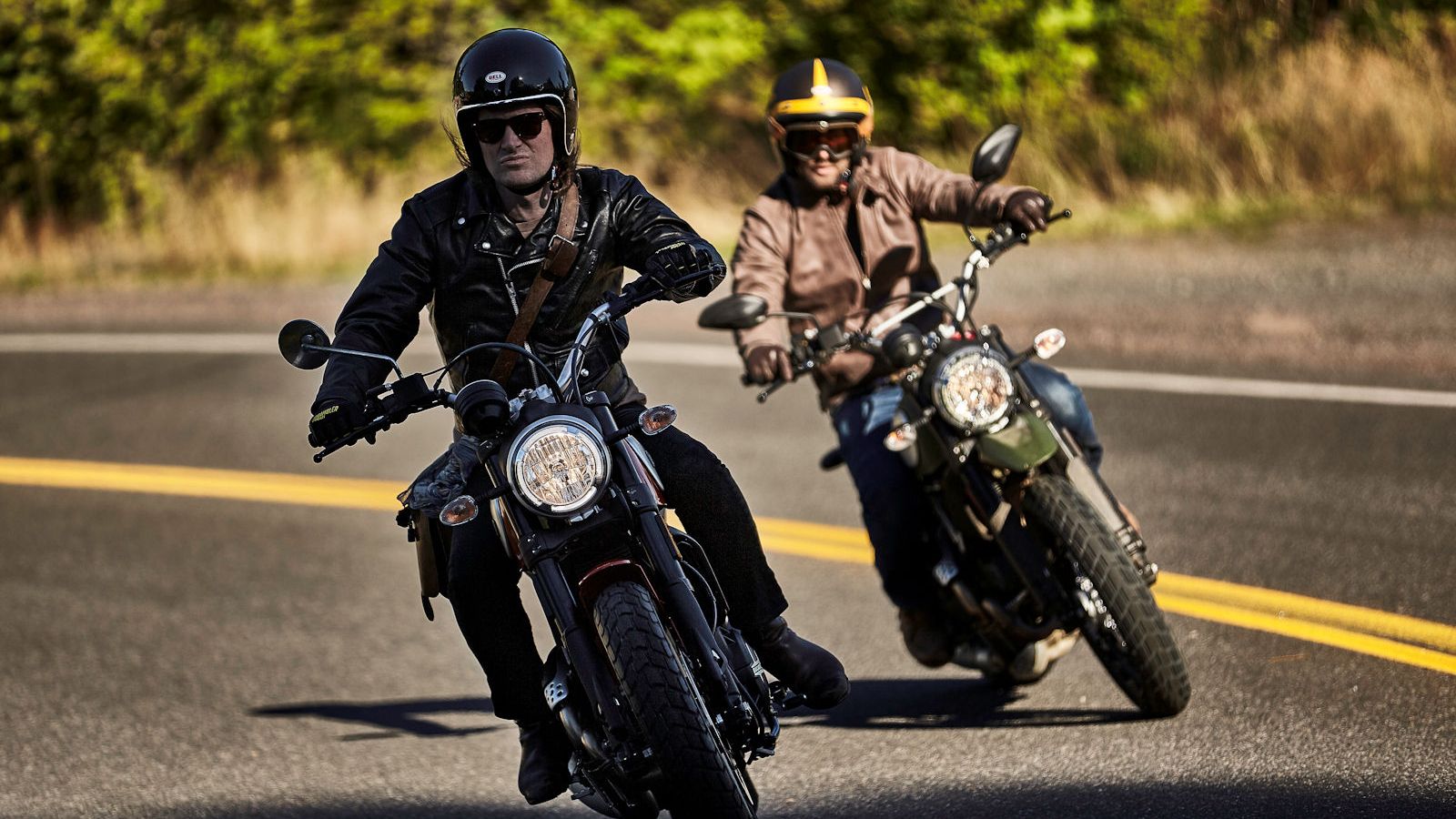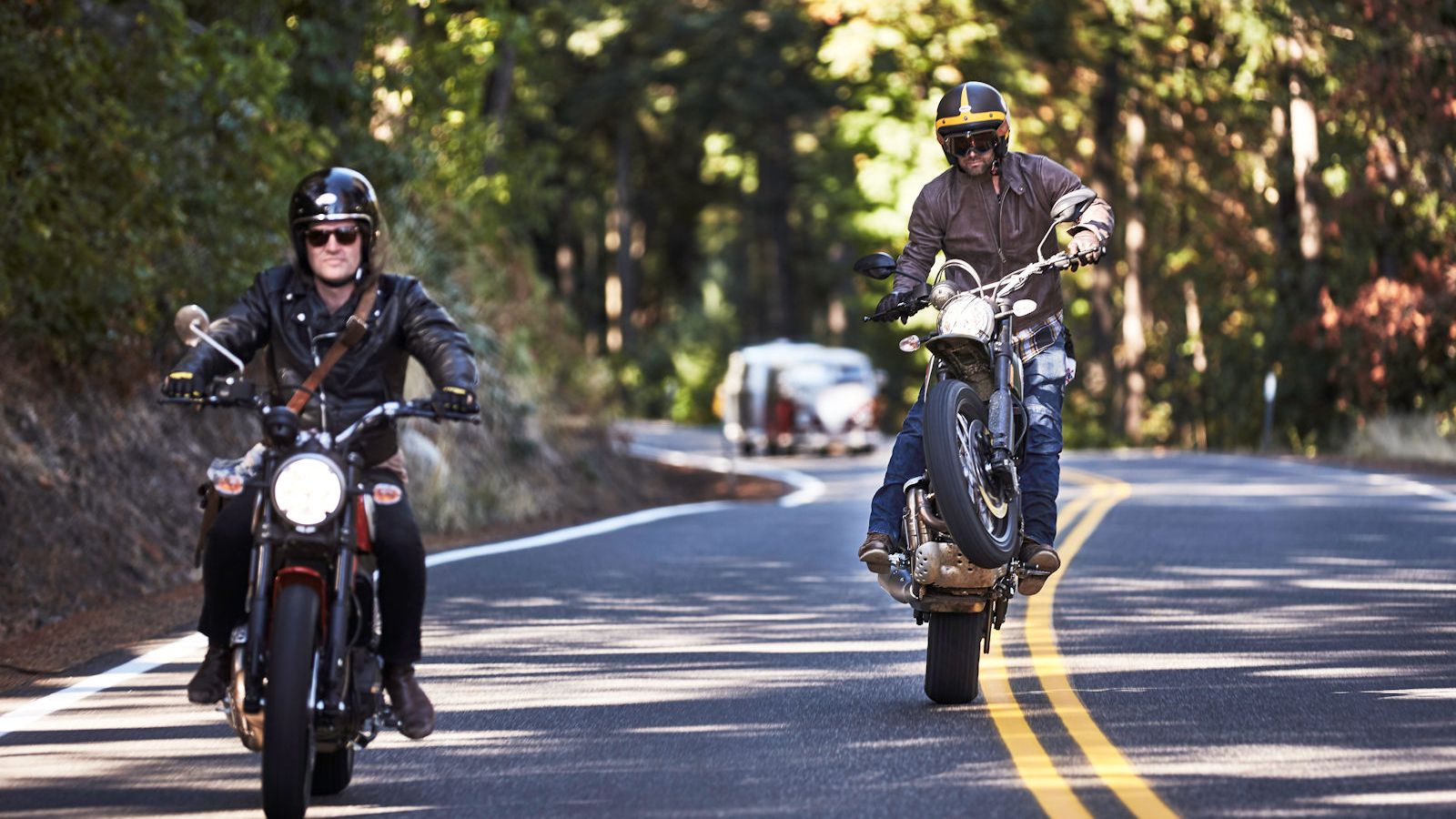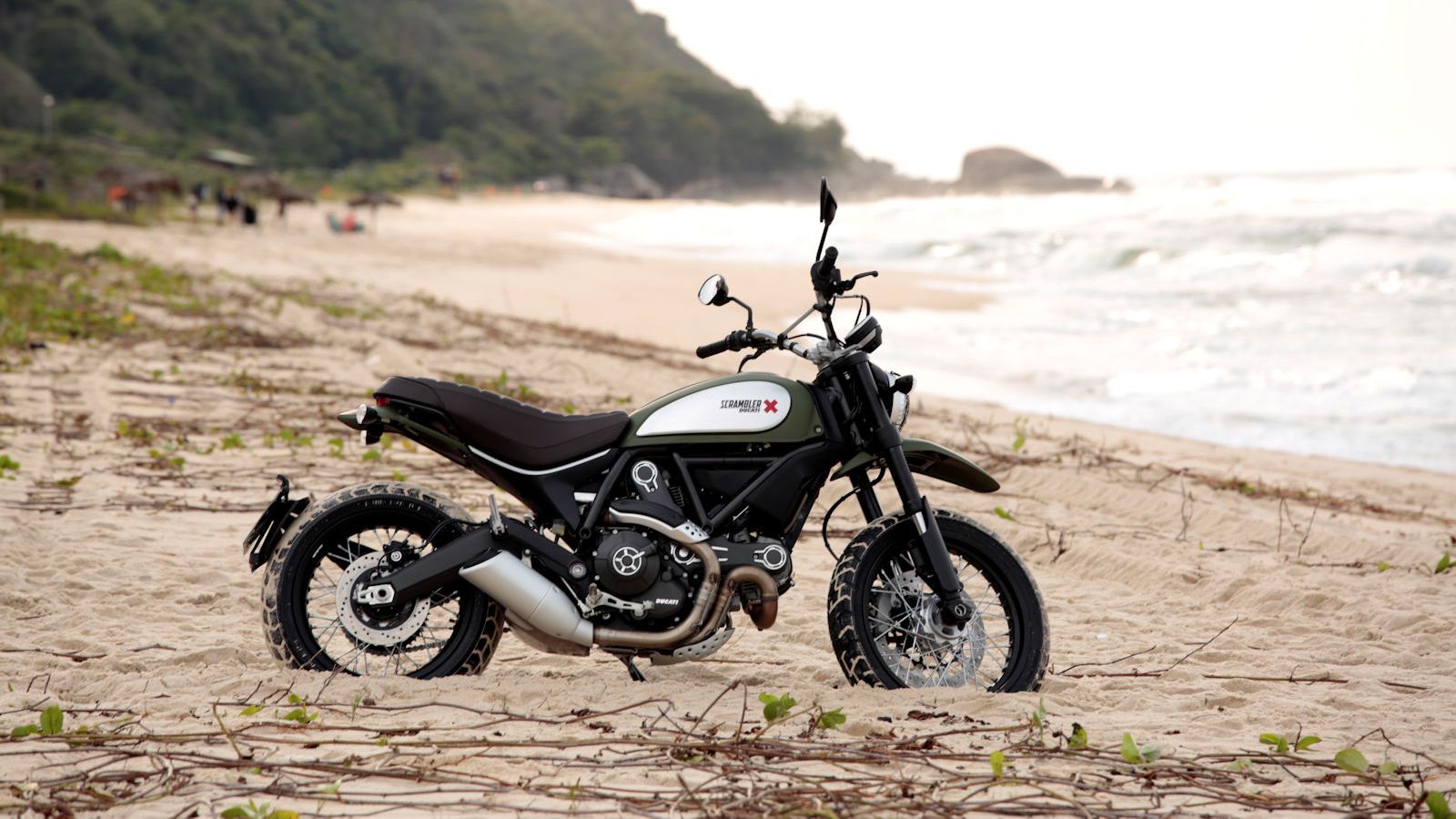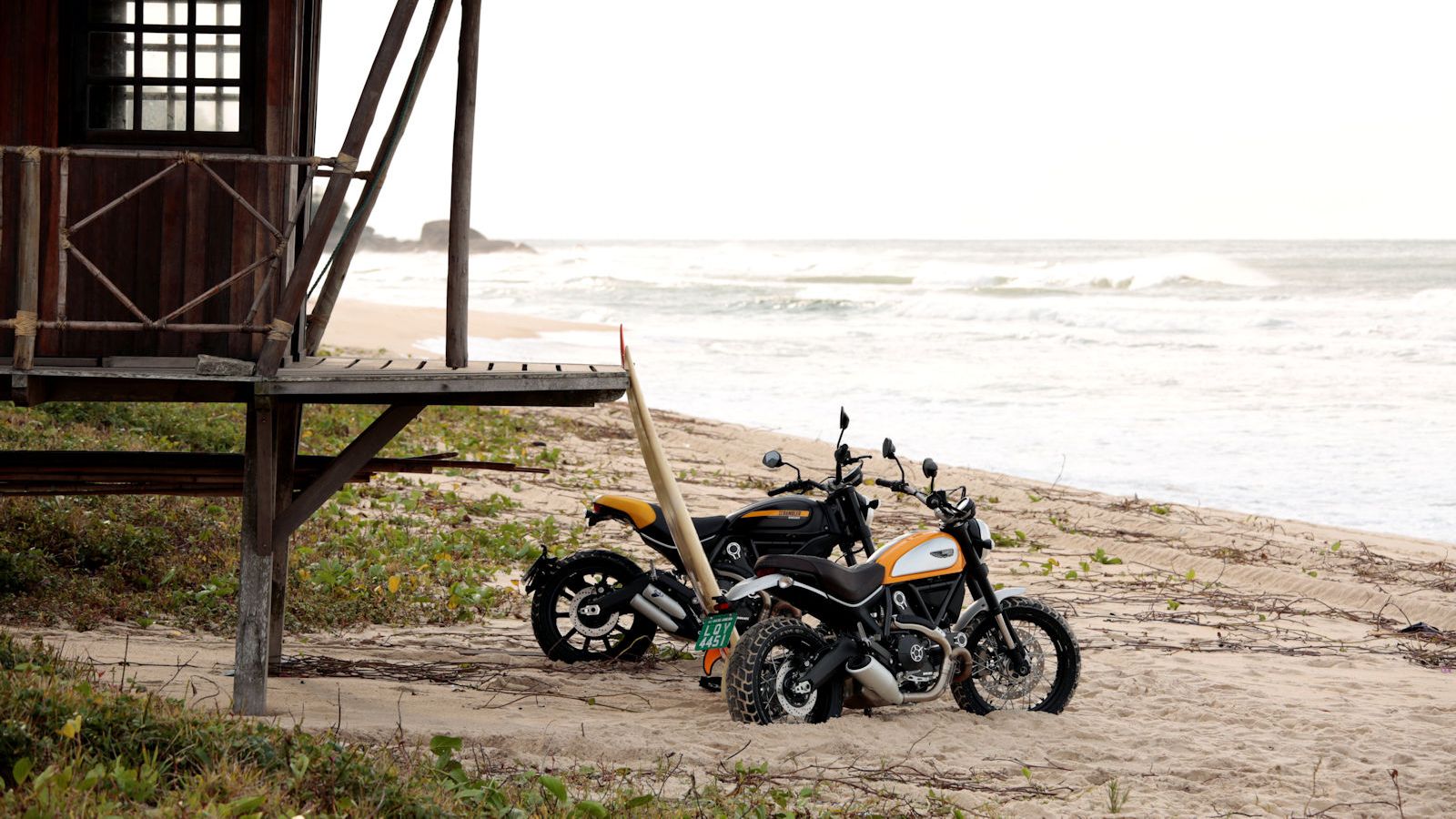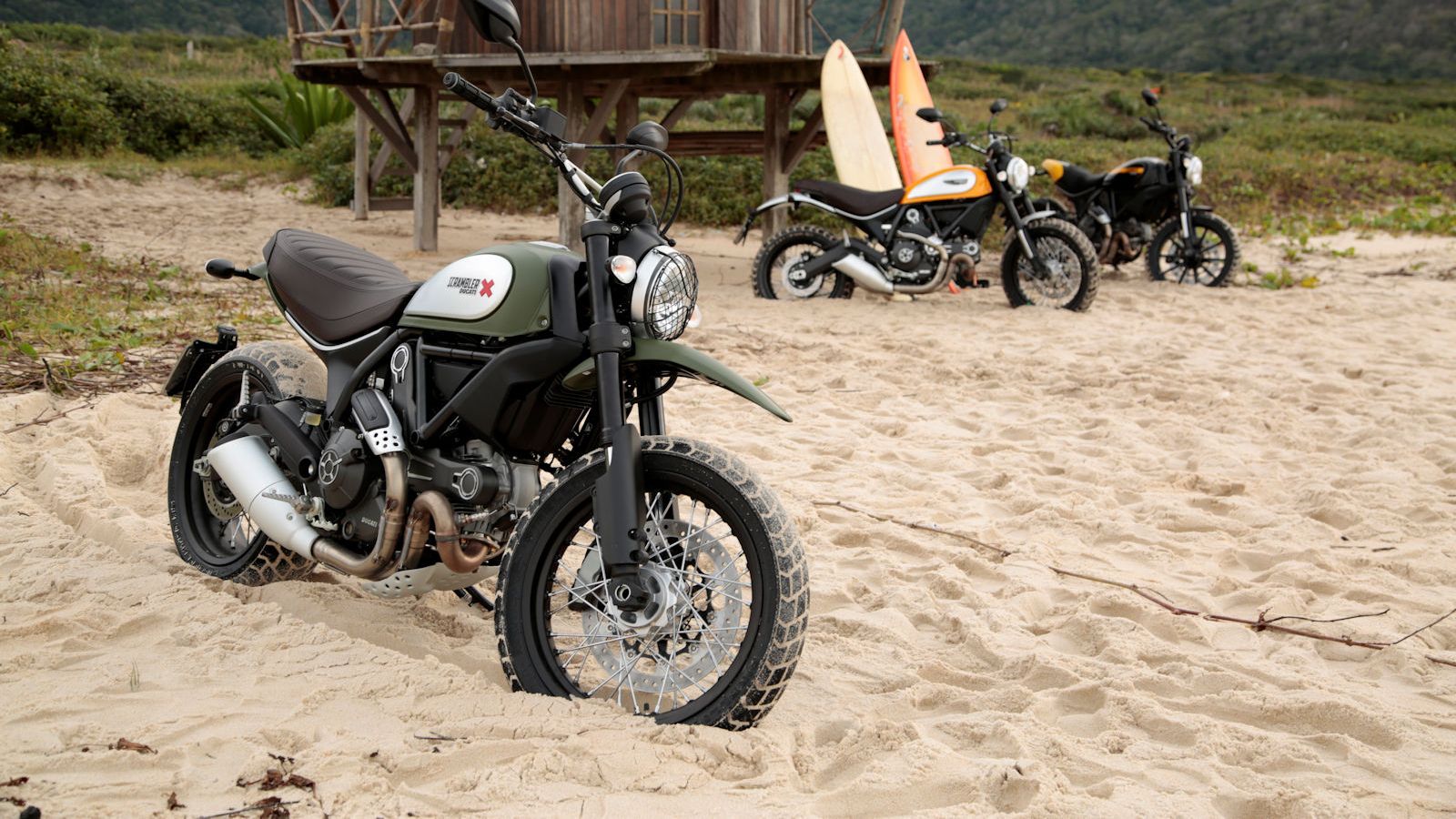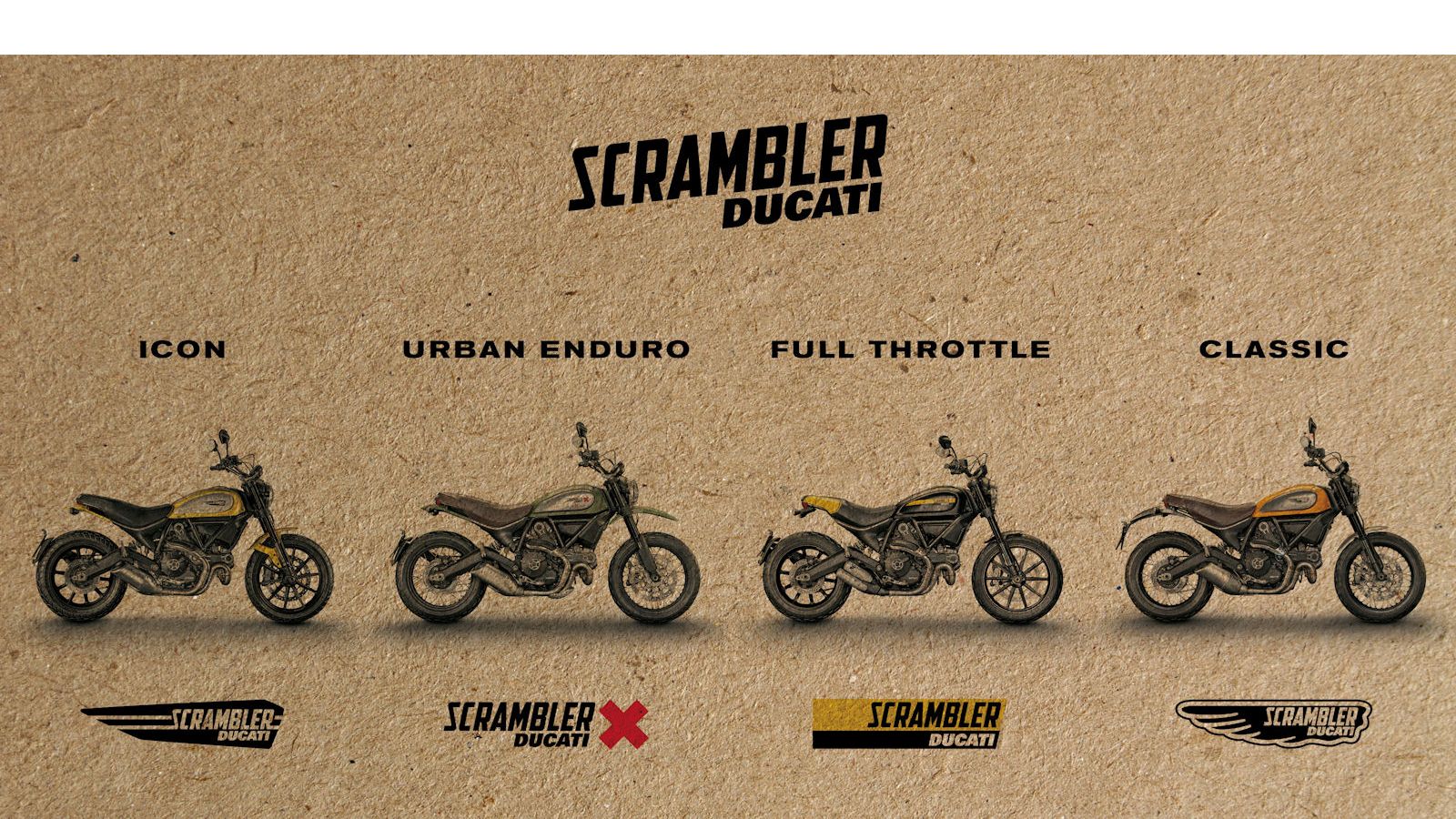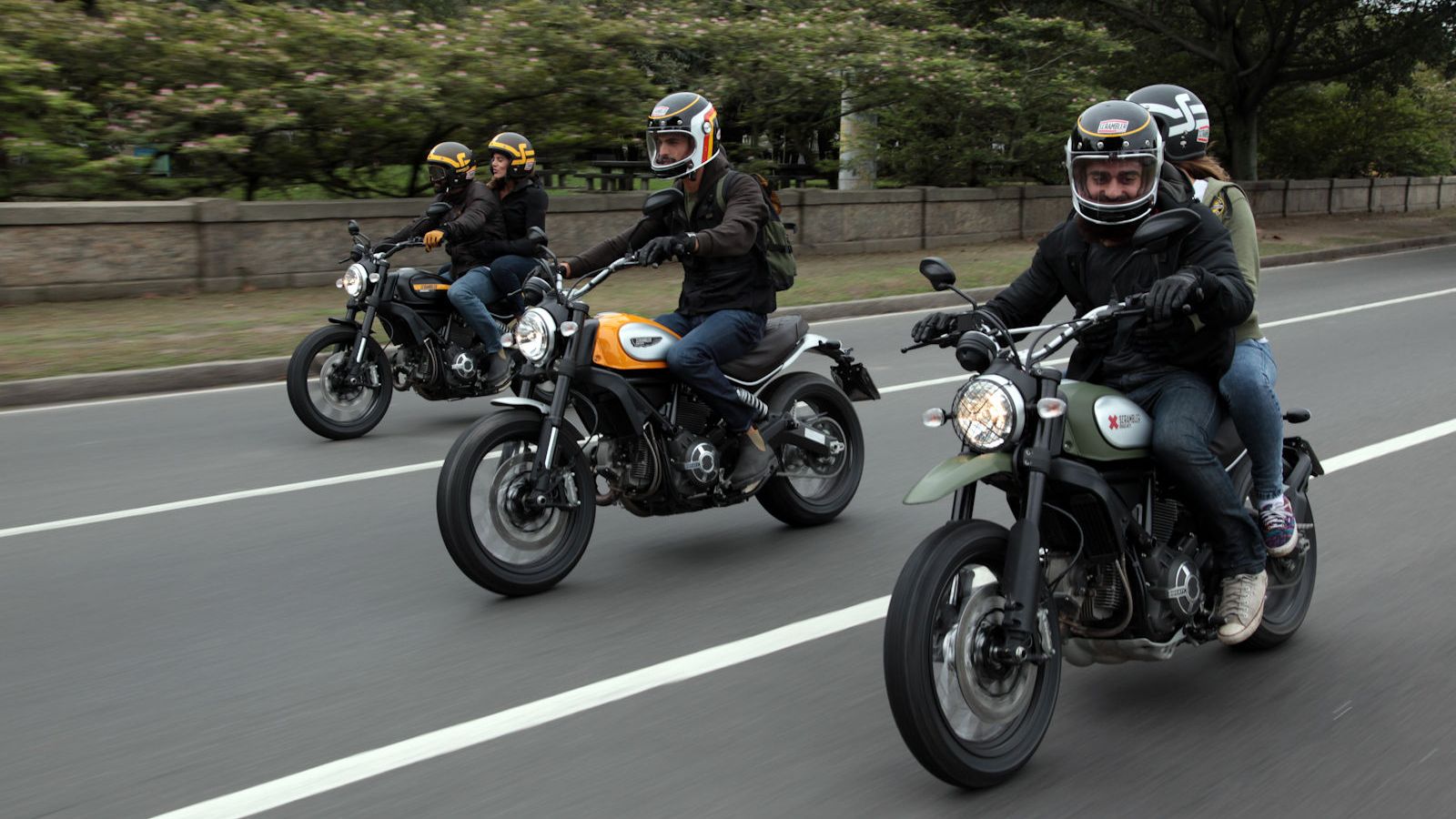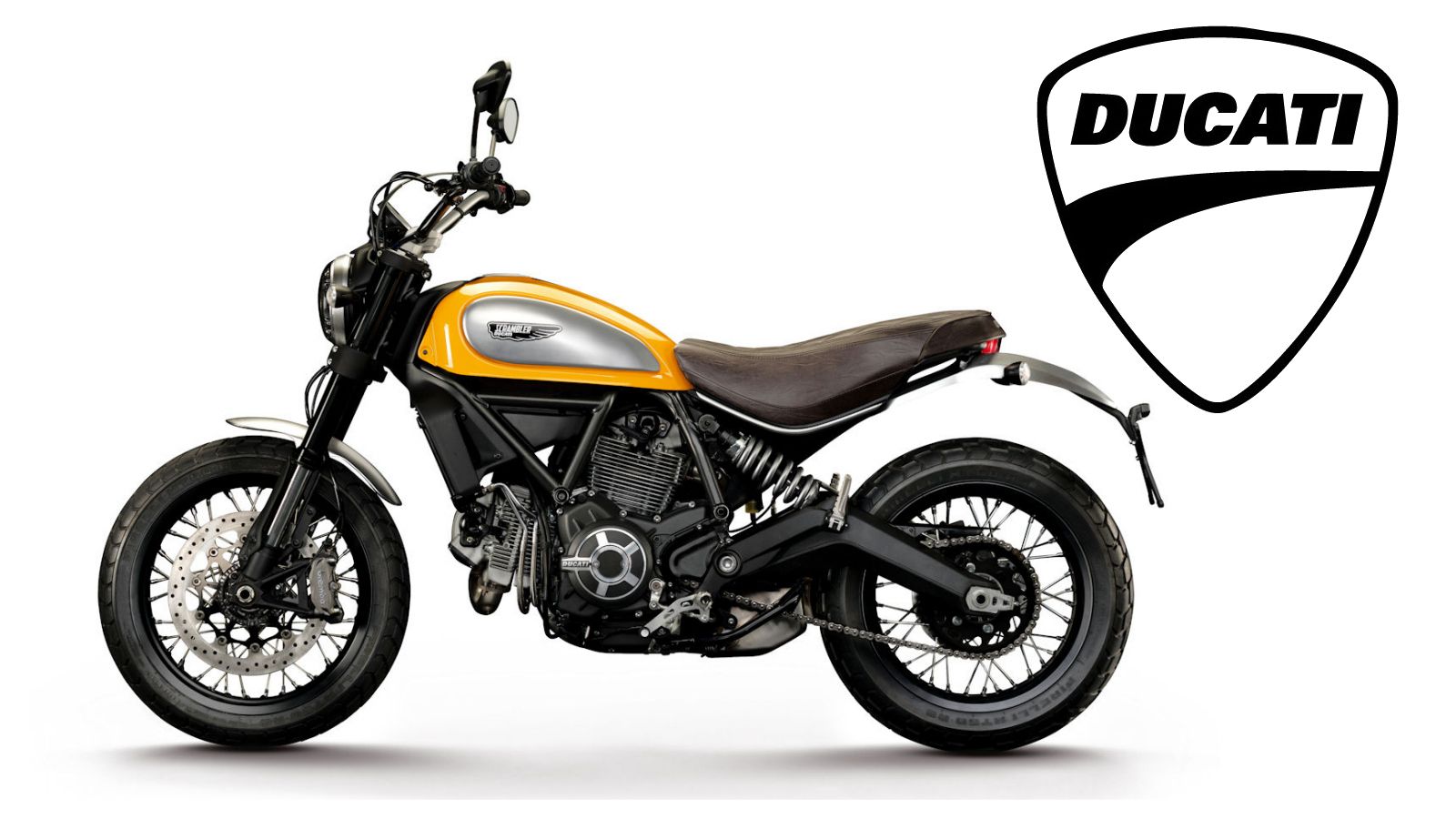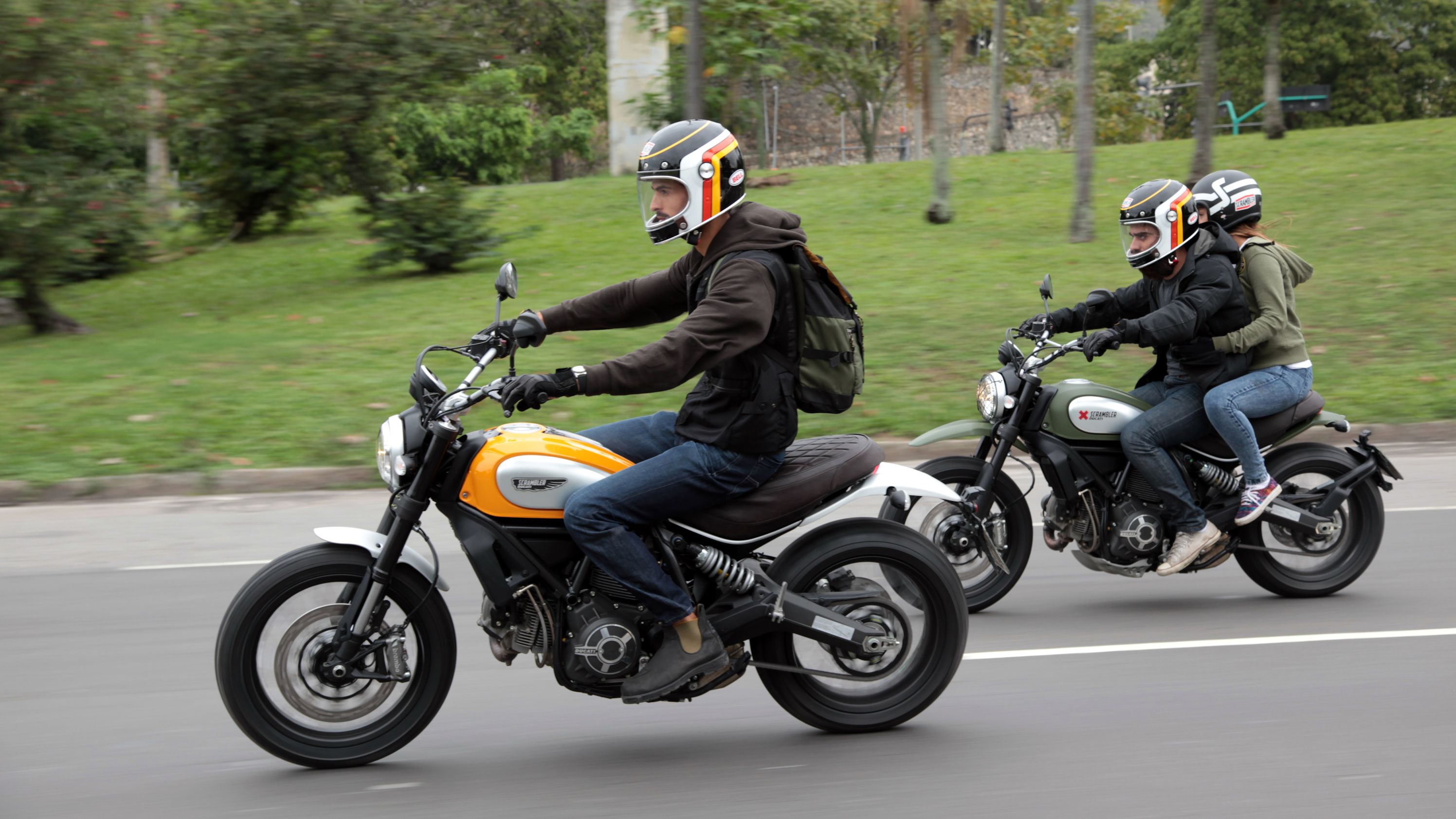The 2015 model year saw four new Ducati->ke622 products built for a rather niche market; the Scrambler->ke4393 family that includes the '70s-themed Classic, the flat-track race inspired Urban Enduro, the Full Throttle which combines an amped-up, flat-track race look with an urban hooligan touch and the Icon, a basic, modernized version of a traditional scrambler that serves as a blank canvas for riders looking to make a statement.
Ducati treated us to another branch on the Scrambler family tree in 2016 with the Flat Track Pro, another oval-dirt tribute bike that takes the racing->ke2345 references to the Nth degree. So far, it seems the Scrambler family is popular with a younger demographic, and I have even heard old-school styled Scramblers referred to as Hipster bikes. It figures, considering the dual-purpose nature of the family that provides decent road performance and maintains the ability to access, shall we say, alternative routes? Today I want to take a look at these five models, and check out the various subtleties and nuances that make each one unique.
Continue reading for my review of the Ducati Scramblers.
2016 Ducati Scrambler
- Make: Array
- Model: 2016 Ducati Scrambler
- [do not use] Vehicle Model: Array
Design
According to the factory, designers approached the Scrambler family not as a retro-version of the “original” scrambler-type rides, but as a reflection of where the Scrambler family would be had production continued uninterrupted since the original run. Overall, the results carry unmistakable genetic markers from the “Old Guard” models, leaving us with what Duc calls a “post-heritage” panache.
Each of the Scrambler siblings comes with badging unique to the model, as well as other little accents, color variations and details to further differentiate them from each other. All of the Scrambler models share the following common features; steel fuel tank, a small LCD instrument cluster, an USB port for mobile device charging and under-seat storage.
Icon
Generally, all of the Scrambler siblings follow a common thread, and if you look hard enough, you can see shades of the original Ducati Scrambler, or of a million '70s UJM home-jobs that used to be on the road. Minor variations in design abound across the range. In terms of seniority and design considerations, I consider the Icon to be the main trunk of the tree. A small front fender with a bobbed flare at the trailing edge gives it a little custom flavor, and the low tank and gentle swale at the saddle keep the upper lines relatively straight, but not so straight as to be boring. A teeny-tiny little rear mudguard arrests rear tire fling in a narrow arc just wide enough to keep your back dry. All-in-all, a really basic, clean and compact little fun machine.
Classic
On to the new additions to the family. First off, let's look at the Classic. It comes with a small front fender sans flare, and a quilted, brown leather seat with an extended rear fender in a style prevalent in the 1970s. Really, the Icon has fairly classic looks to start with, so it didn't take much effort to ramp up that old-school vibe.
Urban Enduro
The Urban Enduro is more about a particular function, rather than just going for a variation in décor. A tripletree-mounted mudguard leans more toward a dirt bike->ke295 or dual-sport design; fitting considering that the original scramblers were the predecessor to the original enduro->ke3133 bikes, which in turn gave birth to the dual-sport class. Wire mesh over the headlight protects from rock damage, and the ribbed, brown leather seat rides over a minimal subframe with just a hint of the painted sheet-metal color. An aluminum engine guard completes the off-road ensemble for the Urban Enduro. Not just built for looks, this model is meant to actually hit the trail->ke741.
Full Throttle & Flat Track Pro
For the final two models, the factory seemed to stick to a particular theme, namely, the flat-track racing culture. Serving as a tribute bike, the Full Throttle comes with the teeniest of front fenders under lowered, nearly drag-bike style handlebars. The seat forms a pilot's butt-bucket with a minimal, two-tone pillion area and even the paint job reaches for race day with a black base and Race Yellow racing stripe.
Taking it up another notch is the Flat Track Pro that comes with a sporty flyscreen over the tiniest fender, a black, ribbed seat that was definitely not designed for long-term passenger use. A race-day number plate on each flank makes the final push into showroom racebike territory, which makes this Scrambler model a ride for actual flat-track racers, or people who wish they were.
Chassis
A Trellis frame made of tubular steel members serves as the common skeleton for the family. This style of frame comes with several inherent benefits. It's fairly rigid with just the right amount of give in the system to help take the edge off the nastiest bumps and it forms a sort of cage that protects the sides of the engine.
This is a lightweight system, made even lighter by the stressed-engine design that uses the mill to complete the frame and eliminates a whole section of tubing. Less important to performance, but still important, is the fact that exposed Trellis frames look really cool, and leave the bike with a clean, unclunky foundation. This layout gives the Scrambler family a compact, 56.9-inch wheelbase, and an 82.7- to 85.2-inch overall length, with the Classic obviously coming in longest with its '70s style rear fender.
Steering geometry is set up for agility with a 24-degree rake and 4.4-inch trail, and the bars swing through a 35-degree arc, lock to lock. It seems to me that trail figures that fall between 4- and 5-inches represent a good balance between stability and maneuverability, and so the Scramblers are right in the middle of the range: neither twitchy nor wooden in the turns.
Seat height is fairly tall for such a small ride at a stock 31.1-inches high, but despair not, oh ye of the vertically challenged, the factory offers an accessory seat that will drop that down almost an inch to 30.3 inches. Before you get too excited, the stock seat has a reputation for, shall we say, a firm ride to be kind, and I shudder to think how hard the reduced-height seat might be. It may well be worth the trouble to run the higher seat and deal with tiptoes once in a while.
Kayaba sees to the suspension all the way around with 41 mm, usd front forks, and a coil-over, offset monoshock that springs off the dogleg swingarm and comes with adjustable preload. Wheel travel is consistent across the board at 5.9-inches, front and rear, another compromise that falls between street travel and full, off-road->ke450 range of motion.
The Icon, Full Throttle and Flat Track Pro come with blackout cast wheels, while the Urban Enduro and Classic models come with laced aluminum rims. Frankly, I think the laced wheels look better, but admittedly, I don't know what specific concerns flat-track racers have, and perhaps the mags perform better than spokes when flying around a dirt oval sideways. Now that I think about it, a wheel with more lateral stability would have certain benefits, but honestly, I wonder how many buyers are realistically ever going to see a dirt track, let alone compete on one. Just sayin'. The wheels are nearly symmetrical at 17-inches rear and 18 up front.
Brembo sees to the wheel-binding action with a four-pot caliper and 330 mm disc up front, and a single-pot caliper and 245 mm disc in back. Given the 410-pound wet weight, I think the single front brake is sufficient, especially given the size of that front disc, which is about as big as they come. ABS provides overbraking protection, and can be turned off, but it's an all-or-nothing proposition with no option to disable only the rear for those time when you actually want the ass end to slide for you. Still, at least you can turn it all off and take your chances relying on skill alone, as riders have done for the past century and more. Remember kids, electronic safety nets are no substitute for skill and experience, you heard it here first.
Drivetrain
Engine design likewise is consistent across the range. Duc used its L-Twin -- what we would call a 90-degree V-twin -- to power the family. This air-cooled mill runs two-valve heads actuated by Ducati's anti-valve float Desmodromic valvetrain. The benefit of this system is that rather than using springs to close the valves, the engine uses a separate push-open and pull-close cam, a system that eliminates spring harmonics at higher rpm, resulting in higher revs without running the risk of loss of performance at best, or valve-to-piston contact at worst.
Historically, this system is known to have high maintenance requirements with short service intervals, and this engine is no exception with a 7,500 mile valve adjustment interval. Not a huge deal, but something you will get to look forward to that hydraulic-pushrod riders never have to even think about. Course, they spend that time thinking about valve float instead.
An oversquare engine, the bores measure out at 88 mm with a 66 mm stroke for a total displacement of 803 cc. Induction is managed by a 50 mm throttle body with electronic fuel injection and a pair of Lambda probes and a catalyst in the exhaust to help minimize emissions and meet Euro 3 requirements.
One complaint I hear over and over has to do with the abrupt nature of the throttle response, namely that it's a little herky-jerky coming off the stops. It does smooth out further up the throttle range, but I wonder if Duc could improve upon that with a simple, cam-shaped or even elliptical throttle cable mount at the throttle-body end. (Wink nudge.)
The Icon, Urban Enduro and Classic all come with a clean looking, two-into-one exhaust, while the more race-centric Full Throttle and Flat Track Pro run twin-bore, Termignoni performance silencers for what looks to be a two-into-one-into-two system, or perhaps a true dual exhaust with separate circuits for each jug, it's hard to tell. Whichever the case, there can be no question that the Termignoni mufflers certainly look sportier.
All this is fine and well, but you know what they say, the proof is in the pudding. Break the crust on this particular pudding and you will find 50 pounds of grunt backed by 75 horses, relatively unimpressive numbers until you consider that a fueled bike plus rider probably won't break the 600-pound mark, so you can expect the machine to respond decisively to throttle input, especially once you get into the torque band that maxes out at 5,750 rpm.
A six-speed tranny handles the ratios, while a slipper clutch couples engine to tranny with an easy pull at the lever and a bit of back-torque mitigation to prevent loss of traction. This is a good thing considering the abrupt nature of the throttle, and should help to lessen the risk, if not the annoyance, associated with sudden variations in engine rpm on the downshifts.
Price
Given the variations between the models, it's little surprise the prices swing quite a bit from bottom to top. U.S. MSRP on the base models within the range are as follows; the Icon rolls for $8,895 or $8,995 in red or yellow, respectively, while the the other three can be had for $10,495 each.
Competitor
Scramblers are becoming fairly ubiquitous anymore, and it seems nearly everyone is looking to cash in on this resurgent genre. With the market flooded with similar-enough models, I decided to look not at one of the Johnny-come-lately offerings available today, but instead visited another brand with a long-standing scrambler tradition; Triumph Motorcycles->ke1864. Of the five Ducati models, the Urban Enduro seems to be the closest in equipment, looks and intended use to the Triumph Scrambler->ke1868, so let's see how they stack up.
Visually, each model carries the unmistakable genetic markers of its parent company, but a scrambler must look like a scrambler, and so both rides fall into something of a common mold. Sure, The Trumpet runs a dual, shotgun exhaust and carries that distinctive tank kneepad and classic parallel-twin mill versus the shaped and tucked-in Duc exhaust and Trellis frame, but at a glance anyone familiar with the genre will immediately identify both as scramblers.
The Triumph Scrambler falls a little short in the brakes department with a twin-pot, Nissin caliper on the 310 mm front disc, and a 255 mm disc in back, also with a dual-piston Nissin caliper. Brakes on the Urban Enduro are a little beefier with a four-pot Brembo caliper up front and 330 mm disc, but really, I wonder how much braking force is needed on proper Scrambler surfaces where traction can be tenuous at best.
Engine size as well sees the Ducati Enduro slip a little compared to the Trumpet, but only in raw displacement. At 865 cc, the Triumph is certainly larger, but puts out only 59 ponies and 50 pounds of grunt, a tad shy of the 75 horsepower (and 50 pound-feet of torque) from Ducati. Bear in mind, the Triumph Scrambler also weighs more at 471 pounds wet while the Duc only tips 423 pounds; a difference that will certainly register on your heinie-dyno.
Triumph does score a win at the till with a starting MSRP under the 10K mark at $9,400, up to $9,900 depending on color choice. The Ducati Enduro starts at $10,495, not a big difference even for buyers on a budget, and probably worth it for the extra horsepower. But, it won't be enough to overcome the brand loyalty of the Triumph customer base, so I look for the Duc to appeal more to first-time buyers without any deep-seated brand fanaticism yet. And who knows, the Enduro, indeed the entire Ducati Scrambler range, is likely to engender some brand loyalty of their own.
He Said
“Love 'em. Like the looks, the classic flavor and Italian spice. Plus, I know the Desmo engines are top-notch machines, if a bit demanding in the maintenance department. I'd like to say that I would like to own one, but I'm a'feared I may be mistaken for a hipster, at a distance anyway. Given my druthers, I'd buy up an old Honda->ke291 250 N or a new Suzuki TU250X and set it up as a classic, homejob, UJM scrambler, but then, I DO like to get my hands greasy.”
She Said
My wife and fellow writer, Allyn Hinton, says, “These little scramblers are so much fun to ride. The more you twist the throttle, the more the bikes wants to go; like it's being patient while you go slow, but give it a twist and yeehaw!. It has a comfortable rider triangle and gives the impression of being a little UJM. It's a little tall for me, bouncing back and forth on tiptoe, but its a lightweight bike relatively speaking.”
Specifications
|
Engine: |
|
|
Type: |
L-Twin, Desmodromic distribution, 2 valves per cylinder, air cooled |
|
Displacement: |
803 cc |
|
Bore x Stroke : |
88 x 66 mm |
|
Compression Ratio: |
11:1 |
|
Power: |
75 hp (55 kW) 8250 rpm |
|
Torque: |
50 lb-ft (68 Nm) @ 5750 rpm |
|
Fuel injection: |
Electronic fuel injection, 50 mm throttle body |
|
Exhaust: |
Exhaust system with single stainless steel muffler with aluminium exterior cover, catalytic converter and 2 lambda probes |
|
Emissions: |
Euro 3 |
|
Transmission: |
|
|
Gearbox: |
6 speed |
|
Ratio: |
1=32/13 2=30/18 3=28/21 4=26/23 5=22/22 6=24/26 |
|
Primary drive: |
Straight cut gears, Ratio 1.85:1 |
|
Final drive: |
Chain, front spocket 15, rear sprocket 46 |
|
Clutch: |
APTC wet multiplate with mechanical control |
|
Chassis: |
|
|
Frame: |
Tubular steel Trellis frame |
|
Wheelbase: |
1445 mm (56.9 in) |
|
Rake: |
24° |
|
Trail: |
112 mm (4.4 in) |
|
Total steering lock: |
35° |
|
Front suspension : |
Upside down Kayaba 41 mm fork |
|
Front wheel travel: |
150 mm (5.9 in) |
|
Front wheel: |
10-spoke in light alloy 3.00" x 18" |
|
Front tyre: |
110/80 R18 Pirelli MT 60 RS |
|
Rear suspension: |
Kayaba rear shock, pre-load adjustable |
|
Rear wheel travel: |
150 mm (5.9 in) |
|
Rear wheel: |
10-spoke light alloy 5.50" x 17" |
|
Rear tyre: |
180/55 R17 Pirelli MT 60 RS |
|
Front brake: |
Single 330 mm disc, radial 4-piston calliper with ABS as standard equipment |
|
Rear brake: |
245 mm disc, 1-piston floating calliper with ABS as standard equipment |
|
Fuel tank capacity: |
13.5 l - 3.57 gallon (US) |
|
Dry weight: |
170 kg (375 lb) |
|
Wet weight: |
186 kg (410 lb) |
|
Seat height: |
790 mm (31.1 in) - low seat 770 mm (30.3 in) available as accessory |
|
Max height: |
1150 mm (45.3 in) (brake reservoir) |
|
Max width: |
845 mm (33.3 in) (mirrors) |
|
Max length : |
2100 - 2165 mm (82.7 - 85.2 in) |
|
Instrumentation: |
LCD |
|
Ducati electronics: |
dual-channel ABS |
|
Versions: |
Dual seat |
|
All versions equipment: |
Steel tank with interchangeable aluminium side panels, headlight with glass lens, LED light-guide and interchangeable aluminium cover, LED rear light with diffusive lens, LCD instruments with interchangeable aluminium cover, machine-finished aluminium belt covers, 18’’ front, 17’’ rear wheels, underseat storage compartment with USB socket |
|
Urban Enduro equipment : |
Spoked aluminium wheels, aluminium engine sump guard, high front mudguard, headlight grill, aluminium handlebar crossbrace, front stem protectors, seat with dedicated design, dedicated logo |
|
Full Throttle equipment : |
Termignoni slip-on silencer, low aluminium handlebars, flat-track style seat, sport tail piece with dedicated turn indicator support, sport style front mudguard, black fuel tank side covers, dedicated logo |
|
Classic equipment : |
Spoked aluminium wheels, front and rear aluminium mudguards, seat with dedicated design, fuel tank with black stripe, dedicated logo, high plate support |
|
Flat Track Pro equipment: |
Steel teardrop fuel tank with dedicated design and colour, low type-approved Termignoni Slip-on, low tapered handlebars, front brake fluid filler cap in billet aluminium, dedicated seat, nose fairing, rear plate holders, footpegs in billet aluminium, rear-view mirrors in billet aluminium, dedicated grips, short front mudguard, rear indicators support, alloy wheels with yellow piping on rim |
|
Details: |
|
|
Warranty: |
2 years unlimited mileage |
|
Price: |
Icon: Red - $8,895, Yellow - $8,995; Classic, Full Throttle, Urban Enduro: $10,495 |


